
What Is A Catamaran Sailboat? (And What It Looks Like)

Last Updated by
Daniel Wade
August 30, 2022
Catamarans are increasingly popular for sailing and commercial use, but what sets them apart from monohulls and other multihulls?
A catamaran is a twin-hull boat with two equally-sized hulls placed side by side. They’re powered by engines, sails, or both—and they’re known for efficiency and speed. Catamarans are the most common kind of multihull boat.
In this article, we’ll go over the characteristics of catamarans and how to differentiate them from other types of boats. Additionally, we’ll cover the advantages and disadvantages of catamarans and compare them to trimarans and monohulls. We’ll also go over the most common types of catamarans and their uses.
We sourced the information in this article from marine design guides, boat identification resources, and the online boating community.
Table of contents

How to Spot a Catamaran
Spotting a catamaran is easy. Simply look at the hulls and count them. Catamarans have two hulls side by side and a relatively large gap between them where you can see light on the other end. Catamarans are distinct from trimarans, which have an additional hull between the two outer hulls.
How do Catamarans Work?
The principle behind the catamaran is simple. You can think of catamarans like cars and monohulls like motorcycles. Catamarans distribute their weight between hulls on either side, whereas monohulls utilize only one hull.
Evidently, cars are much more difficult to tip over and can hold much more weight. Additionally, cars are wider, as they have much more contact with the road. Catamarans work in a similar way, as they have a wide stance and contact with the surface on both sides.
Obviously, that isn’t the most precise comparison. But the basic principle is the same, and catamarans have a few notable benefits over monohulls.
Catamaran Vs Monohull
Catamarans are easy to distinguish from monohulls. A monohull is just a regular old boat with a single hull. The vast majority of boats and ships are monohulls. Catamarans have two hulls, which are usually sleek and narrow.
Here are some comparisons of catamarans and monohulls, along with the advantages twin-hull designs have over most single hull types.
Benefits of Catamarans
Catamarans have numerous benefits. The first is speed. Catamarans produce less drag than monohulls and thus can achieve excessive speeds both under sail and power. They don’t need to plane like monohulls to achieve these high speeds, and they use less fuel.
Catamarans are also much more stable than monohulls. They have a wide stance and shallow draft, and many waves and swells can travel between the hulls instead of below them. This effectively reduces an entire axis of movement and prevents catamarans from rolling excessively.
Drawbacks of Catamarans
Catamarans aren’t advantageous in every way, or else we wouldn’t bother building monohulls. The disadvantages of catamarans limit their use to niche commercial applications and high-end yachts. But what are the drawbacks of a twin-hull design?
Sailing catamarans don’t follow many of the traditional boat handling rules and characteristics that sailors pass down for generations. Some, such as hull speed limitations, are good to do away with—while others, such as responsiveness, are not.
Catamarans aren’t as quick to the helm or responsive as monohulls. There are some exceptions to this rule, but for the most part, you’ll get a lot more feedback from a single-hull vessel. Additionally, the large section of deck between the hulls of a catamaran is prone to pounding in rough seas, which is loud and uncomfortable.
Catamarans can sometimes be twice the width of an equivalent monohull sailboat, which can increase mooring fees and limit docking options.
The final major drawback of catamarans is a consequence of their stability. Traditional full-keel monohull sailboats have a very low center of gravity, which makes them roll in heavy seas but ensures a recovery.
Catamarans have a higher center of gravity, and they can’t right themselves after a knockdown. And though catamarans are less likely to roll, a severe list on a multihull is a much more serious concern than on a ballasted monohull.
Catamaran Vs Trimaran
Catamarans and trimarans are often lumped together, but they have very different design and performance specifications. Trimarans have three hulls, whereas catamarans have two.
Trimarans look a lot like catamarans from the side, but a quick glance at the bow or stern can set them apart. Trimarans are faster than catamarans, as they distribute their weight across three hulls instead of two. This helps them stay centered and reduces interference from pitching and rolling.
Catamarans are fast, but they lose out to trimarans when going head to head. However, catamarans are much less expensive to build and maintain and often have roomier cabins due to their larger hulls.
Types of Catamarans
There are numerous types of catamarans, and their uses vary widely. The catamaran is one of the oldest and most useful hull types, and some variants have been used for thousands of years. Here are the most common kinds of catamaran boats and their uses.
Sailing Catamaran
Sailing catamarans are probably what you think of when you hear the name. Sailing catamarans are sailboats with two identical hulls connected by a center deck. The largest sailing catamarans are spacious and stable vessels that are capable of serious offshore sailing.
Sailing catamarans have a number of notable advantages over monohulls. Monohulls, which are traditional sailboats with a single hull, are limited by a simple concept called hull speed. As the bow and stern wave of a monohull intersect, they cause drag which limits the top speed of the boat.
Catamarans are not bound by hull speed limitations, as they have two hulls. Catamarans can go twice or even three times as fast as similar monohulls and achieve excellent travel times.
Catamarans are also more stable than monohulls, as their wide stance and shallow draft reduce the effect of rough water. They don’t heel, as the force of the wind is counteracted by the double hulls. Additionally, modern sailing catamarans can ‘wave pierce’ by cutting through swells instead of riding over them.
Sailing catamarans come in many shapes and sizes. Small sailing catamarans, such as those used in races and regattas, are known for their speed and relative stability compared to light racing monohulls. Sometimes, they feature a smaller second hull for stability—these are called outriggers.
Sailing catamarans have spacious interiors thanks to the large cockpit between the hulls. This cockpit usually contains cooking and eating spaces, a place to sit, and a hallway between the hulls. The hulls usually contain living quarters and often mirror each other.
Power Catamarans
Power catamarans have an even greater variety than sailing catamarans. These vessels are used for everything from party platforms to ferries and patrol boats.
Power catamarans are a recent development, as engineers and marine architects now realize they have numerous hydrodynamic advantages over other hull types.
Catamarans are much more efficient than other hull types, as they have less drag relative to their size. Additionally, you can build a much larger catamaran with less material. This makes them popular for car and rail ferries, as builders can construct a very wide vessel with two small hulls rather than a narrower vessel with a large single hull.
Military and Commercial Catamarans
Even the military has found a use for the catamaran hull shape. The Spearhead class EPF is an expeditionary fast transport vessel designed for carrying capacity and speed. It has two sharp hulls and a huge cargo capacity.
The Spearhead class EPF is 337 feet long, which is about the same length as a WW2 escort destroyer. Yet despite having a similar length and displacement, these catamarans can travel more than twice as fast—43 knots, or nearly 50 miles per hour. Their great speed is a direct consequence of their catamaran hull type.
Power catamarans are also used as patrol and utility boats on a much smaller scale, with either outboard or inboard motors. The State of Texas uses catamarans to patrol shallow rivers and lakes. Texas Game Wardens utilize state-of-the-art aluminum catamaran patrol boats, which are fast enough to outrun most fishing boats.
There’s another form of power catamaran that you may not have considered. Pontoon boats are technically catamarans, and they’re enormously popular on lakes and rivers throughout the country. Pontoon boats aren’t known for speed, but they’re a great platform for a fun and comfortable outing.
Catamaran Houseboats
The final common type of power catamaran is the two-hulled houseboat. Houseboats don’t always use the catamaran hull type, but it’s common enough that most major manufacturers offer it as an option.
Catamaran houseboats have a few notable advantages over monohull designs. For one, they’re easier to build—especially when pontoons are chosen. Additionally, they’re better suited for navigating shallow water. These vessels can support more weight across their two hulls, offer increased stability, and they’re also efficient.
Why Aren’t Catamarans More Common?
With all the advantages listed in this article to consider, it may seem strange that the use of catamarans is still somewhat limited. At the end of the day, it comes down to economics—as monohull boats and ships are simply cheaper to build.
Additionally, catamarans have some distinct limitations. Monohulls have lots of storage space in their hulls and can carry thousands of tons of cargo safely in all weather conditions. Catamarans lack this space and low center of gravity, so they’re not ideal for transporting cargo past a certain point.
Additionally, monohulls work, and many people are reluctant to experiment with new designs when old designs work just fine. This rule applies to both large and small boats.
A large monohull sailboat can be constructed at low cost from stock plans and reliably sail almost anywhere. Very little complex structural engineering is involved, and looser tolerances reduce cost and maintenance requirements.
Related Articles
I've personally had thousands of questions about sailing and sailboats over the years. As I learn and experience sailing, and the community, I share the answers that work and make sense to me, here on Life of Sailing.
by this author
Learn About Sailboats
Most Recent

What Does "Sailing By The Lee" Mean?
October 3, 2023

The Best Sailing Schools And Programs: Reviews & Ratings
September 26, 2023
Important Legal Info
Lifeofsailing.com is a participant in the Amazon Services LLC Associates Program, an affiliate advertising program designed to provide a means for sites to earn advertising fees by advertising and linking to Amazon. This site also participates in other affiliate programs and is compensated for referring traffic and business to these companies.
Similar Posts

Affordable Sailboats You Can Build at Home
September 13, 2023

Best Small Sailboat Ornaments
September 12, 2023

Discover the Magic of Hydrofoil Sailboats
December 11, 2023
Popular Posts

Best Liveaboard Catamaran Sailboats
December 28, 2023

Can a Novice Sail Around the World?
Elizabeth O'Malley
June 15, 2022

4 Best Electric Outboard Motors

How Long Did It Take The Vikings To Sail To England?

10 Best Sailboat Brands (And Why)
December 20, 2023

7 Best Places To Liveaboard A Sailboat
Get the best sailing content.
Top Rated Posts
Lifeofsailing.com is a participant in the Amazon Services LLC Associates Program, an affiliate advertising program designed to provide a means for sites to earn advertising fees by advertising and linking to Amazon. This site also participates in other affiliate programs and is compensated for referring traffic and business to these companies. (866) 342-SAIL
© 2024 Life of Sailing Email: [email protected] Address: 11816 Inwood Rd #3024 Dallas, TX 75244 Disclaimer Privacy Policy

Mastering Catamaran Sailing: Learn How to Sail a Catamaran like a Pro
Alex Morgan
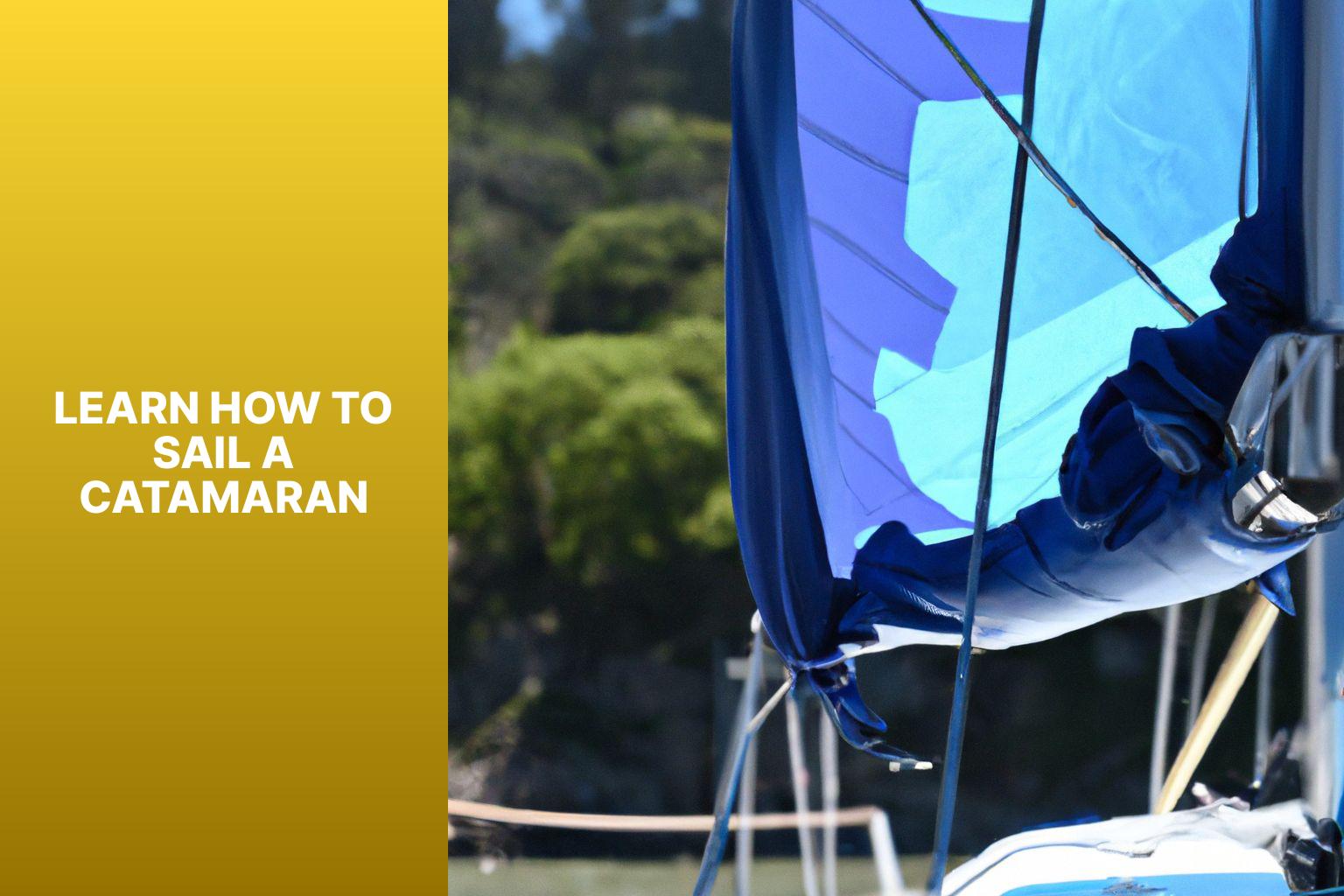
Sailing a catamaran is an exhilarating experience that allows you to harness the power of the wind and navigate the open waters with agility and speed. If you’re interested in learning how to sail a catamaran, it’s essential to understand the basics, prepare properly, learn key sailing techniques, and acquire navigation skills specific to catamarans. This comprehensive guide will provide you with the necessary knowledge and techniques to confidently sail a catamaran.
Introduction to Sailing a Catamaran
Sailing a catamaran offers a unique sailing experience with its twin hulls, stability, and spacious deck. Before diving into the specifics, it’s important to understand the fundamentals of catamarans and how they differ from monohulls.
Understanding the Basics of a Catamaran
To fully grasp the art of catamaran sailing, you need to first comprehend what a catamaran is and how it differs from a monohull. This section will provide a clear definition of a catamaran and highlight its distinctive features.
Preparation for Sailing a Catamaran
Before setting sail, proper preparation is crucial to ensure a safe and enjoyable experience. This section will cover essential steps such as conducting safety equipment checks, understanding wind and weather conditions, and making necessary preparations for sailing a catamaran.
Key Sailing Techniques for Catamarans
Mastering key techniques is essential to maneuvering and controlling a catamaran effectively. This section will delve into important skills such as steering and maneuvering, sail trim and adjustment, tacking and jibing, and understanding points of sail specific to catamarans.
Navigation and Seamanship for Catamarans
Navigating a catamaran requires a solid understanding of chart reading, course planning, and the rules of the road. This section will provide guidance on reading nautical charts, planning routes, and understanding the right-of-way rules when sailing a catamaran.
Recovering from Common Sailing Challenges
Even with proper preparation, sailors may encounter challenges while on the water. This section will address common issues such as capsize and the techniques for righting a catamaran, as well as strategies for dealing with strong winds and heavy seas.
Additional Resources for Learning Catamaran Sailing
To further enhance your knowledge and skills in catamaran sailing, this section will provide a list of helpful resources, including books, online courses, and sailing clubs, where you can continue your learning journey.
By following this guide and honing your skills, you’ll embark on a rewarding adventure as you navigate the seas with confidence and expertise in sailing a catamaran.
Key takeaway:
- Learning to sail a catamaran maximizes your sailing experience: Sailing a catamaran allows you to navigate the waters in a unique and exciting way, enhancing your overall enjoyment of the sport.
- A catamaran offers a different sailing experience from a monohull: Understanding the basics of a catamaran helps you appreciate its distinct characteristics, such as stability and speed, compared to traditional monohull sailboats.
- Being prepared and understanding key sailing techniques are crucial: Prioritizing safety, learning about necessary equipment, and mastering sailing techniques like steering, sail trim, and tacking ensure a successful and enjoyable catamaran sailing experience.
A catamaran is a boat with two parallel hulls connected by a bridge. Understanding the basics of a catamaran is important to fully enjoy the unique sailing experience it offers. These hulls provide stability and reduce drag, enabling higher speeds. Catamarans are used for sailing , cruising , and racing .
The design allows for a spacious interior layout, making it ideal for leisure activities or living aboard. One advantage of a catamaran is its shallow draft , which allows for navigation in shallower waters . When sailing, it’s crucial to have a good grasp of the components like the mast , sails , rigging , and helm . Learning how to trim the sails and adjust the rigging optimizes performance. Maneuvering the catamaran, including tacking and jibing , controls direction and speed.
Safety is paramount, so having a clear understanding of safety procedures and possessing the necessary equipment is essential. With a thorough understanding of the basics, you can confidently enjoy the unique sailing experience a catamaran offers.
What is a Catamaran?
A catamaran, also known as a cat , is a type of boat with two parallel hulls connected by a deck. It is specifically designed to prioritize stability, achieved through a wider base and weight distribution. Catamarans are renowned for their spaciousness and maneuverability , making them a popular choice for sailing and cruising enthusiasts.
One notable advantage of a catamaran is its ability to achieve higher speeds compared to monohulls . This can be attributed to the wide hulls, which result in less drag and enable faster and smoother sailing experiences. The dual hull design enhances stability , reducing the likelihood of rolling or capsizing , particularly in rough waters.
Catamarans also offer a significant advantage in terms of living space and comfort . Thanks to the presence of two separate hulls, these boats can accommodate cabins , lounges , and various amenities. As a result, catamarans are considered ideal for long-distance cruising or liveaboard experiences , providing ample room for relaxation and enjoyment .
When it comes to sailing performance, catamarans excel in upwind capabilities and have the ability to sail closer to the wind compared to monohulls. They are easier to maneuver and require less effort to handle, making them an excellent choice even for beginners embarking on their sailing journey .
How is a Catamaran Different from a Monohull?
Catamarans have greater stability than monohulls due to their wider beam and two hulls. This stability reduces tipping and rolling in rough seas.
Compared to monohulls , catamarans have a shallower draft, allowing them to navigate in shallow waters and anchor closer to the shore.
Catamarans provide more interior space with their wider beam, resulting in larger cabins, living areas, and storage compartments.
Catamarans are known for their speed. The twin hull design reduces drag, enabling them to sail faster than monohulls , particularly in light winds.
In terms of sailing motion, catamarans have a flatter and more stable movement, offering increased comfort for those prone to seasickness. They also have better maneuverability and can sail closer to the wind compared to monohulls .
Pro-tip: If you desire a spacious, stable, and fast sailing experience, a catamaran is an excellent choice. Its unique design provides comfort and performance, making it a popular option for cruising and long-distance sailing.
Prepping your catamaran for an epic sailing adventure? Get ready to set sail with confidence as we dive into the vital elements of catamaran preparation. From essential safety equipment and thorough checks to mastering the art of reading wind and weather conditions, we've got you covered. Safety first and a keen understanding of the natural elements will ensure smooth sailing and unforgettable experiences on the open water. Let's dive into the nitty-gritty details and get you fully prepared to harness the power of the winds and conquer the seas!
Safety Equipment and Checks
When sailing a catamaran, it is essential to prioritize safety. It is important to follow these steps for safety equipment and checks:
- First and foremost, inspect the life jackets to ensure they are in good condition and functioning properly.
- Take the time to check the throwable flotation devices and ensure they are readily available and in working order.
- Verify that the catamaran has a properly installed fire extinguisher, which is crucial in case of any fire emergencies.
- Make sure that distress signals, such as flares or emergency signaling devices, are present and easily accessible.
- It is vital to inspect and test the bilge pump to make sure it is functioning correctly and can effectively remove any water from the boat.
- Check the navigation lights to ensure they are properly functioning, as they are essential for visibility during nighttime or low-light conditions.
- Verify the availability and condition of a sound signaling device, such as a horn or whistle , which can alert others in case of emergencies.
- Ensure that the catamaran is equipped with a VHF radio or other communication devices for effective communication during emergencies.
- Inspect the anchor and anchor line to ensure their good condition, as they are crucial for securing the catamaran in place.
- Check the availability and condition of navigation charts and a compass, which are essential for proper navigation and orientation.
Pro-tip: It is highly recommended to regularly inspect and maintain all safety equipment to ensure they always work properly. Performing safety checks before every sailing trip is crucial to ensure the well-being and safety of everyone onboard.
Understanding Wind and Weather Conditions
Understanding wind and weather conditions is essential when sailing a catamaran. It is crucial to consider wind direction, wind strength, and current weather conditions in order to plan your sail effectively and ensure a safe and enjoyable experience.
Having a good understanding of wind direction is vital while sailing. By adjusting your sails accordingly, you can maximize the power and efficiency of your catamaran. Knowing the strength of the wind can help you determine the appropriate sail trim and make adjustments for optimal performance .
Weather conditions play a critical role in ensuring safety while sailing. It is important to check weather forecasts before setting sail and to remain aware of potential changes in weather patterns. Understanding the possibility of storms, strong winds, or heavy seas allows you to make informed decisions on when it is safe to sail and when it is best to stay ashore.
By understanding wind and weather conditions, you can effectively plan your sail, adjust your sails for optimal performance, and ensure the safety of yourself and your crew. Continuously monitoring and assessing these conditions throughout your sailing journey allows for well-informed decisions and contributes to a successful and memorable experience on your catamaran.
Get ready to set sail and master the art of catamaran sailing with these key techniques! We will unravel the secrets behind steering and maneuvering, sail trim and adjustment, tacking and jibing, and understanding the points of sail . From controlling the direction of your catamaran to optimizing your sail position, this section has got you covered with practical tips that will enhance your sailing skills. So, hop on board and let’s embark on a thrilling sailing adventure !
Steering and Maneuvering
When steering and maneuvering a catamaran, it is important to keep in mind the following techniques:
- Use the tiller or steering wheel to control the direction of the catamaran. Push the tiller away from you to turn the catamaran to starboard (right), and pull the tiller towards you to turn the catamaran to port (left).
- Work closely with the crew and communicate clearly to ensure smooth maneuvering. Assign specific roles and responsibilities to each crew member, such as trimming the sails or adjusting the daggerboards .
- Adjust the sails accordingly to optimize the catamaran's performance. Trim in the mainsail and jib to generate more power and speed, or ease the sails to reduce power in strong winds.
- Pay attention to the catamaran's speed and steer accordingly. A faster catamaran may require more precise and proactive steering to maintain control.
- Practice tacking and jibing techniques to change direction smoothly. Tacking involves turning the bow of the catamaran through the wind, while jibing involves turning the stern of the catamaran through the wind. Always be mindful of the wind direction and adjust your maneuvering accordingly.
By mastering these techniques, you'll be able to navigate your catamaran with confidence and precision.
Sail Trim and Adjustment
For optimal performance and stability of a catamaran, sail trim and adjustment are essential. Follow these steps to ensure proper sail trim:
- Begin by checking the telltales of the main sail to ensure smooth flow without any fluttering or stalling.
- Next, focus on the jib or headsail and adjust the sheet tension to achieve proper trim and generate lift.
- Paying attention to the traveler position is crucial. Move it accordingly to control the boom angle and sail shape based on wind conditions.
- Adjust the halyard tension to prevent any sagging or fluttering.
- Continuously monitor and adjust the tension in control lines, such as the jib sheet and mainsheet , to achieve the desired sail shape and balance.
- While sailing, constantly assess the sail trim. Observe the telltales, listen to the wind, and take note of any changes in speed. Fine-tune the trim for optimal performance and control.
By consistently adjusting sail trim based on changing conditions, you’ll ensure a pleasurable and efficient catamaran sailing experience.
Tacking and Jibing
Sailing a catamaran requires a good understanding of the techniques for tacking and jibing . Here are the steps to master these maneuvers:
- To change direction when the wind shifts, turn the helm or the wheel away from the wind.
- Release the jib sheet and let the jib sail luff as the bow of the catamaran passes through the wind.
- Trim in the jib sheet on the new tack to regain speed and control.
- Ease out the mainsail sheet and move the boom to the opposite side of the catamaran.
- Steer the catamaran downwind to swing the mainsail across the boat.
- Switch the mainsail sheet to the new side and trim it in to stabilize the sail as the mainsail crosses over.
Pro-tip: It is advisable to practice tacking and jibing in light winds before attempting these maneuvers in stronger conditions. This will help build confidence and develop a solid understanding of the catamaran’s handling characteristics.
Understanding Points of Sail
To gain a comprehensive comprehension of Understanding Points of Sail , it is important to acknowledge the various angles at which a sailboat can navigate in relation to the wind.
The initial point of sail is referred to as the “no-sail zone,” during which the wind is directly facing the boat’s front, making it impossible for the sails to catch the wind.
Subsequently, we have the “close-hauled” or “upwind” point of sail, where the boat skillfully sails as close to the wind as possible without stalling. In this scenario, the sails are meticulously adjusted to create lift and propel the boat forward.
Moving on, the “close reach” point of sail occurs when the boat is slightly angled away from the wind, enabling the sails to fill and generate power.
As for the “beam reach” point of sail, the boat is positioned at a right angle to the wind, causing the wind to blow directly onto the side of the sails. This results in the boat achieving the desired speed and momentum.
On the other hand, the “broad reach” point of sail sees the boat sailing at an angle away from the wind, which allows the sails to fill more and generate even greater speed.
We have the “downwind” or “running” point of sail, where the boat sails directly with the wind coming from behind. To ensure an efficient catch of the wind, the sails are let out as far as possible in this scenario.
Acquiring a solid understanding of points of sail is paramount when it comes to taking control of the direction and speed of a catamaran, ultimately maximizing its performance. By skillfully adjusting the sails and steering according to the various points of sail, sailors are able to effectively navigate their catamarans, ensuring a smooth and efficient sailing experience.
When it comes to sailing a catamaran, one crucial skill to master is navigation and seamanship . In this section, we’ll dive into the essentials of chart reading and course planning , helping you plot your path with confidence on the open waters. We’ll explore the rules of the road and right-of-way , ensuring you understand the fundamental principles of safe sailing. So, sharpen your skills and join us as we navigate the captivating world of catamaran seamanship !
Chart Reading and Course Planning
When sailing a catamaran, chart reading and course planning are essential for a safe journey. Understanding and properly navigating charts will help you choose the best route and avoid potential hazards. The following table outlines key aspects of chart reading and course planning for catamaran sailing:
By mastering the skills of chart reading and course planning, you can confidently and safely navigate your catamaran, maximizing your enjoyment of the sailing experience.
Rules of the Road and Right-of-Way
To sail a catamaran safely and avoid collisions, it’s crucial to understand the Rules of the Road and Right-of-Way .
- Sailboats fall under the International Regulations for Preventing Collisions at Sea (COLREGS) , which provide guidelines for preventing accidents in various situations.
- According to the Rules of the Road , when two sailboats approach each other on different tacks, the boat on the starboard tack has the Right-of-Way and the boat on the port tack must keep clear.
- When a sailboat approaches a power-driven vessel, the sailboat must yield and keep clear of the power-driven vessel’s path.
- When overtaking another sailboat, the overtaking boat is responsible for keeping clear and avoiding a collision.
- It’s important to understand and follow these Rules of the Road and Right-of-Way to ensure the safety and well-being of everyone on the water.
I was sailing my catamaran on a sunny day when I spotted another sailboat coming towards me. Realizing we were on a collision course, I acted quickly and adjusted my course to give way to the other sailboat, which was on the starboard tack. By following the Rules of the Road and Right-of-Way , we avoided a potentially dangerous situation and continued enjoying our day on the water. This experience highlights the importance of sailors being knowledgeable about the Rules of the Road and Right-of-Way for a safe and enjoyable sailing experience.
Navigating the unpredictable waters of sailing can come with its fair share of challenges. In this section, we’ll delve into practical techniques for recovering from common sailing mishaps, empowering you to conquer any situation with confidence. From capsize and righting a catamaran to dealing with the relentless forces of strong winds and heavy seas, we’ll equip you with the necessary knowledge to overcome these hurdles and keep your sailing adventure afloat. So, let’s dive in and uncover the secrets to mastering the art of recovery on the open waters!
Capsize and Righting a Catamaran
Capsize and righting a catamaran can be challenging, but with knowledge and techniques, you can recover safely. When facing a catamaran capsize, follow these steps to ensure a successful recovery:
1. Stay calm and assess the situation. It’s important to maintain a level-headed approach.
2. Ensure everyone onboard wears a life jacket and is accounted for. Safety should always be a priority.
3. Communicate with your crew to determine the best approach for righting the catamaran. Teamwork and coordination are crucial at this stage.
4. Release and secure the sails to prevent further problems. This will help minimize any potential damage.
5. Work together as a team to shift the crew’s weight towards the side of the catamaran that needs lifting. Distributing the weight properly is essential.
6. Utilize weight distribution and leverage to gradually lift the capsized catamaran. It’s important to take this process one step at a time.
7. Continue applying steady pressure until the catamaran is fully righted. Persistence is key during this stage.
8. Check the boat for damages or water ingress and address them accordingly. Taking care of any issues promptly is crucial for safety.
9. Retrieve any lost belongings or equipment that may have fallen overboard during the capsize.
10. Restart the sail and ensure proper stability. Confirm that everything is in order before resuming your sailing adventure.
By following these steps and working together, you can successfully recover from a catamaran capsize and continue enjoying your sailing adventure.
Dealing with Strong Winds and Heavy Seas
Dealing with strong winds and heavy seas while sailing a catamaran can be a challenging task. With the right techniques and precautions, it can be managed effectively. Here are some important considerations to keep in mind:
1. Maintain a steady course: It is crucial to hold the helm firmly and adjust the sails to maintain balance and control in the face of strong winds and heavy seas .
2. Reef the sails: When the winds become too powerful, it is important to reduce the sail area exposed to the wind by reefing the sails. This technique helps in controlling the boat’s speed and stability. Familiarize yourself with the specific catamaran’s reefing technique beforehand.
3. Adjust the daggerboards: Daggerboards are retractable keels that play a vital role in providing stability and preventing tipping over in strong winds . Adjusting the daggerboards to the appropriate depth is important to maintain balance and control in challenging conditions.
4. Monitor the sea state: Pay close attention to the waves and their direction. Anticipating changes in the swell and taking appropriate action, such as avoiding broadside hits and angling the boat into the waves, ensures a smoother and more comfortable ride.
5. Use safety equipment: It is imperative to always have necessary safety equipment onboard, including life jackets, flares, and a tethering system. When challenging conditions arise, wearing a safety harness is essential to prevent falling overboard.
By following these techniques and taking proper precautions, you can effectively deal with strong winds and heavy seas while sailing a catamaran . Remember, experience and practice are crucial in safely and confidently handling challenging conditions.
Here are some resources to enhance your catamaran sailing skills:
– Online forums: Joining forums dedicated to catamaran sailing can provide valuable knowledge and interaction with experienced sailors.
– Instructional videos: Online instructional videos offer step-by-step guidance on various aspects of catamaran sailing, helping you understand different maneuvers and techniques.
– Books and guides: Several resources cover both fundamental and advanced techniques of catamaran sailing, providing in-depth knowledge for self-paced learning.
– Courses and workshops: Participating in formal courses or workshops conducted by sailing schools or yacht clubs offers hands-on training and guidance from experienced instructors, improving your skills.
– Online tutorials: Websites offer catamaran sailing tutorials with comprehensive lessons, interactive quizzes, and feedback, enhancing your understanding and proficiency.
With these resources, you can cultivate your catamaran sailing skills and become a proficient sailor. Practice consistently and remain open to learning from others. Happy sailing!
Some Facts About Learn How To Sail A Catamaran:
- ✅ Sailing a catamaran is similar to sailing a monohull, with most skills easily transferable.
- ✅ Catamarans have become very popular in the last 5 years due to their advantages over monohulls.
- ✅ Catamarans have two hulls connected by a bridge deck, providing stability and space for cabins and amenities.
- ✅ Catamarans are considered safer than monohulls due to their stability and the presence of two engines.
- ✅ Monohulls are harder to sail due to heeling and confined spaces, while catamarans offer easier movement and stability.
Frequently Asked Questions
How can i learn how to sail a catamaran.
To learn how to sail a catamaran, you can explore various options such as online schools, books, and sailing schools. Going on a week-long or weekend cruise can provide valuable hands-on experience. Watching videos, reading books, and joining a crew of experienced sailors can also help you learn the basics and improve your skills.
What are some recommended resources for learning how to sail a catamaran?
For beginners, online schools like Nautic Ed and reputable institutions like ASA (American Sailing Association) and US Sailing Association offer catamaran courses that provide structured training and guidance. Advanced books on catamaran sailing can also be a great resource, helping you familiarize yourself with boat parts, terminology, and essential skills.
How long does it take to learn how to sail a catamaran?
The time it takes to learn how to sail a catamaran may vary depending on individual learning abilities and dedication. Typically, it ranges from 14 days to five years. With the right training, practice, and experience, you can progress efficiently and gain confidence in sailing a catamaran.
Are there any short-term catamaran sailing courses available?
Yes, there are short-term catamaran sailing courses available. Sailing schools like ASA and US Sailing Association offer land and on-water training programs that provide intensive courses tailored to teach you how to sail a catamaran effectively within a shorter timeframe.
What are the key differences between catamarans and monohulls in sailing?
There are several differences between catamarans and monohulls in sailing. Catamarans have a bridge deck and two hulls connected, providing stability, ample space, and ease of movement. They are considered safer due to their stability and the presence of two engines. On the other hand, monohulls are harder to sail due to heeling and confined spaces.
Do I need any certification to sail a catamaran?
While a cruising catamaran captain’s license is not necessary, having a recognized certificate, such as ASA certification, can increase opportunities to sail and gain the trust of catamaran owners. Certification courses like ASA provide comprehensive training and assessments to ensure you possess the necessary skills and knowledge for safe catamaran sailing.
About the author
Leave a Reply Cancel reply
Your email address will not be published. Required fields are marked *
Save my name, email, and website in this browser for the next time I comment.
Latest posts

The history of sailing – from ancient times to modern adventures
History of Sailing Sailing is a time-honored tradition that has evolved over millennia, from its humble beginnings as a means of transportation to a beloved modern-day recreational activity. The history of sailing is a fascinating journey that spans cultures and centuries, rich in innovation and adventure. In this article, we’ll explore the remarkable evolution of…

Sailing Solo: Adventures and Challenges of Single-Handed Sailing
Solo Sailing Sailing has always been a pursuit of freedom, adventure, and self-discovery. While sailing with a crew is a fantastic experience, there’s a unique allure to sailing solo – just you, the wind, and the open sea. Single-handed sailing, as it’s often called, is a journey of self-reliance, resilience, and the ultimate test of…

Sustainable Sailing: Eco-Friendly Practices on the boat
Eco Friendly Sailing Sailing is an exhilarating and timeless way to explore the beauty of the open water, but it’s important to remember that our oceans and environment need our protection. Sustainable sailing, which involves eco-friendly practices and mindful decision-making, allows sailors to enjoy their adventures while minimizing their impact on the environment. In this…
- First time on a catamaran: what you need to know
During your captain training, you'll have learnt how to manoeuvre a monohull sailboat . But what about when you have the opportunity to sail a catamaran? Find out everything you need to know, including differences from monohulls, important factors to consider, pros and cons, and recommended destinations and catamaran models. If you're new to catamaran sailing, this is the perfect guide for you.
5 reasons to rent a catamaran
What are the main reasons why someone decides to sail on a catamaran? Here are the top benefits of choosing this type of boat.
1. Stability
The double hulls of a catamaran provide exceptional initial stability, allowing it to remain afloat and stable in rough waters and wind. If you're looking for a smooth and peaceful sailing experience, especially with small children or seasickness-prone individuals, a catamaran is a great option. It's perfect for taking along your grandma or a nervous friend who's never been on a boat before.
YACHTING.COM TIP: Getting seasick is not only a major worry for novice sailors, but also holidaymakers on a boat trip. But it even can affect experienced sailors from time to time. Those with darker humour say it has two phases — in the first phase you become so sick you're afraid you're dying, and in the second, you're afraid you're not going to. The important thing, though, is to understand why it happens and try to prevent it. Although you'll significantly reduce suffering from seasickness on a catamaran, what works best if it does occur? Find out in our guide — How to cope with seasickness .
A catamaran offers more space than any other boat of similar length. With spacious saloons , plenty of seating and lounging areas , and ample sunbathing spots (such as the netting known as the trampoline ), you'll never feel cramped. The cabins are roomy and the bathrooms are as big as those in many apartments. People who dislike tight spaces or value their privacy will find a catamaran ideal. On larger models (50+ feet), you'll have so much space, you may have trouble finding each other. Despite its comparable length, a catamaran always feels larger than its monohull counterpart. If you're used to a 50-foot sailboat, try a 45-foot catamaran and you'll still feel like you have more space.
3. Amenities comparable to a hotel room
Not only are the cabins spacious, but they are also comfortable and cosy. They usually come equipped with high-quality bedding, pillows, shelves, reading lamps, and more, making them feel like a proper room. That's why we wrote an article highlighting 9 reasons why a sailing holiday is better than staying at a hotel and it's doubly true with a catamaran.
4. Added extras
Catamarans often come equipped with the latest technology and gadgets. These include solar panels, generator, a seawater desalinator, a modern plotter with GPS, and autopilot . These will make you more self-sufficient at sea without needing the facilities of a marina as often.
5. Shallow draft
The reason why catamarans are so popular with sailors, especially in exotic countries , is the very shallow draft — 0.9 to 1.5 metres, depending on the length of the vessel, which means skippers don't have to concern themselves so much about hitting the seabed. While caution and monitoring charts are still necessary, it provides greater freedom in choosing anchorage spots, allowing you to sail almost right up to the beach and anchor to enjoy the peace and tranquillity.
Only small fishing boats can get as close to the shore as catamarans.
Check out articles about other boats and boating gear
Advanced sail trim techniques
The ultimate yacht cleaning kit
The most popular catamarans of 2023
How to sail a yacht on a tailwind
How to sail a yacht in crosswinds
Götheborg: the greatest sailing ship
New boats for rent in 2024
Sail trim 3: become a pro
Sailing through time: a history of sailing ships
Catamaran vs. sailboat: the main differences.
Sailors have differing preferences, with some sticking to single-hulled boats and others preferring catamarans. In fact, which is best has been a hot topic since sailing began. This makes understanding the benefits and drawbacks of each hull design essential so you can make your own choice.
1. Rental price
One major drawback of catamarans is their higher cost on the charter market. Single-hull sailboats can be rented for 1,000-2,500 euros per week, while a well-maintained catamaran typically starts at 3,000 euros per week. However, this may not be the case for all models.
YACHTING.COM TIP: If you want to save money on your catamaran charter, we recommend booking it in advance. Check out our 8 reasons why Early Bird deals are the best way to rent a boat .
2. Capacity
The higher cost of catamaran charters is offset by the extra space, comfort, and capacity — it can often hold up to 12 guests comfortably. This results in a per-person cost comparable to sailboats and cheaper than coastal hotels, making them popular for island cruising and party boats. However, for a safe and responsible party experience, we recommend checking out our guide — How to enjoy a party on a boat: 10 tips to keep your crew and your boat safe .
YACHTING.COM TIP: Never exceed the maximum capacity of the boat. And remember that even small children count as crew members.
A large crew can comfortably sail on a catamaran
3. Port charges and marina fees
Keep in mind that having two hulls means a wider boat, leading to higher docking fees . This increased width can take up more space than two smaller sailboats. However, the cost per person can be offset by the fact that more people can be accommodated.
4. Speed vs. consumption
Catamarans typically feature two high-powered engines , making them faster than similar-sized sailboats. Even without the power of the wind, you can be flying across the waters and with a better fuel efficiency than motor boats.
Catamarans typically have two basic sails: the mainsail and the foresail and operating them follow similar principles as on single-hulled sailboats. Self-tacking jibs can also be used, reducing the work required to trim and manoeuvre the sails.
For those looking to enhance their sailing experience, a gennaker can often be rented with the catamaran, providing added benefits, especially in light wind conditions. Take a look at our 5 reasons to rent a gennaker .
6. Flybridge
This elevated deck is a common feature on catamarans. Here you'll find the helm station and sometimes additional seating or lounging space. It is a valuable addition that provides extra living space on the boat.
The catamaran's second deck provides another spot to sit and enjoy views of the ocean
Who is the catamaran suitable for?
Catamarans are the preferred choice for a group of friends wanting a laid-back holiday on the water but are also popular for corporate team-building events and specialised stays like yoga. As their spacious deck provides a safe play area for children , they are also ideal for multi-family vacations.
YACHTING.COM TIP: If you are sailing with small children, safety is paramount. So, check out our guidelines for safe boating with kids , our article on how to survive on a boat with kids , the Skipper mom logbook: sailing with a baby and always try to stick to the 4 essential tips for smooth sailing with kids . If you don't have kids or don't want to bring them along, why not take your four-legged friend? Catamarans offer ample space for dogs to run around, and following these 7 tips can help make your pet a true sea dog.
On the other hand, we wouldn't suggest a catamaran to sporty sailors to chase the wind in, as the catamarans for charter aren't intended for racing or regattas. Due to their design, they have limited upwind capabilities (sailing boats can sail up to 30° wind angle, while charter catamarans can only handle up to 50° to 60° wind angle), making them unsuitable for competitive sailing.
YACHTING.COM TIP: If you have doubts about your ability to safely operate the boat, consider hiring a skipper. We can arrange a skipper for you who is knowledgeable about the area and can take care of the navigation for you or teach you any sailing skills you may be lacking. Remember when planning that the skipper will occupy one cabin or berth in the saloon.
Specifics of sailing on a catamaran
The principles of sailing a catamaran are similar to those of a monohull sailboat, but there are some differences to keep in mind. These may have already been covered in your captain's training course.
Travelling on the engine
A catamaran has two motors , each of which can be controlled separately using its own throttle control. Want to turn on the spot? That's no problem at all with a catamaran — simply add throttle with one motor and reverse with the other. Once you get the hang of this trick, you'll no longer need a bow thruster, although catamarans are sometimes equipped with one. This makes docking your catamaran a breeze compared to single-hulled sailboats.
Travelling on the sails
Sailing varies mainly in what courses you can sail and how strong the winds are. Most charter catamarans perform best on courses at 50 to 60 degrees to the wind. This is a greater angle compared to sailboats. So be prepared to have to adjust your planned route.
If you sail a sailboat too hard, the boat itself will tell you that you've over-steered by heeling. A catamaran won't do that, so you have to be very attentive to when to reef the sails. Usually, you will put in the first reef at a wind speed of 18 to 20 knots and the second reef at 23 to 25 knots.
Best destinations for catamaran sailing
In addition to the more traditional locations of Croatia , Greece , Italy , Spain and Turkey , we rent catamarans all over the world. In these destinations, you appreciate plenty of space , comfortable access to the water via steps, stability on the waves and amenities such as a barbecue and air conditioning .
However, catamarans are perfectly suited for more exotic destinations . In remote locations, the low draft comes in particularly handy as the seafloor is often poorly charted and the beaches are stunning. The large water and diesel tanks, along with an electricity generator, a desalinator to produce fresh water from seawater, and solar panels are especially useful in exotic locations where the yachting infrastructure is less developed. These features help sailors to be self-sufficient and avoid the need to find a dock every few days.
Popular destinations for catamaran sailing include the beautiful Seychelles , Thailand , French Polynesia and the Caribbean (Grenada, St. Lucia, Martinique, Antigua, St. Martin, Cuba , British Virgin Islands, Bahamas, and Belize).
YACHTING.COM TIP: Don't be apprehensive about sailing to more tropical destinations! Check out our guide to exotic sailing holidays . If you are headed to these warmer climes, you will need to find out when the rainy season or the hurricane season starts.
Views in the Caribbean are picture perfect
The most popular catamarans
Popular charter catamaran brands include Lagoon , Bali , Fountaine Pajot , Nautitech , and Leopard . These are the models that have received positive feedback from our clients for years and that we confidently recommend.
The Lagoon 380 offers a true sailing experience, or the larger Lagoon 46 , where you may end up spending the whole morning lounging in its spacious cabin.
The Bali cat space provides amazing seating up at the helm.
The Fountaine Pajot Elba 45 where you'll enjoy relaxing at the bow on the seating or the trampoline.
The Nautitech 46 with its huge saloon.
The Leopard 45 with its gorgeous bright interior, or the Leopard 50 that's so luxurious, you'll feel like a king.
YACHTING.COM TIP: For the discerning sailor, the Lagoon 620 and Dream 60 large catamarans are also worth mentioning. However, it's important to note that most captain's licenses are not valid for these giants and you'll need to hire a professional skipper.
Special types of catamarans
Catamarans have been around for quite some time, leading shipyards to continuously innovate and create new models with unique features and characteristics. So, what are some of them?
Power catamaran
The popularity of power catamarans has been increasing lately due to the fact that they provide the stability and spaciousness of a catamaran without the need to handle sails.
Do you believe that more is always better? Not satisfied with just two hulls? Then we have a unique chance for you to rent a trimaran , a three-hulled catamaran that offers an unparalleled sailing experience. Trimarans are still rare, so you're sure to attract attention wherever you go.
All catamarans in our offer:
Not sure if you want a catamaran or a sailboat no problem, we'll be happy to assist you in finding the perfect vessel. just let us know..

Denisa Nguyenová
Faq sailing on a catamaran.
What are the main differences between a sailboat and a catamaran?
- Number of hulls = stability
- More space = higher passenger capacity
- Higher charter and port charges
- Speed per engine

A Trusted Source For Boating Information Since 2019
Catamaran hulls- everything you need to know.
- Post Written By: Boater Jer
- Published: July 17, 2022
- Updated: July 19, 2022

Disclaimer: You might notice that we recommend products in some articles. We may earn a commission for referring you if you click the link and buy a product.
We only recommend products we’ve tried/tested/own (that’s why you won’t find thousands of affiliate links on my site). If you have experience with one of the products we’ve mentioned, please share your experiences in the comments at the end.
Advertisement

Catamaran hulls are not like normal boats but provide increased stability. Let’s take a look at these incredible boats and how their hulls create one of the most versatile watercraft available today.
The Tamil Cholas used catamarans to ferry their troops to invade Malaysia, Indonesia, and Burma. The early paravars or fishing communities in the southern part of Tamil Nadu used two-hulled boats to fish. Polynesian seafarers were also early users of the catamaran, utilizing the watercraft to get to hard-to-reach islands. ( source )
Although the catamaran hull concept is a relatively new introduction to modern boat design , the boat has been in use since the 5th century. It was used for fishing, traveling, and transporting people and supplies.
Parts Of A Catamaran
Here are the basic parts of the modern sailing catamaran:
- Hulls are what sets this boat apart from the rest. The catamaran has two hulls, while the monohull, as the name suggests, has only one hull. Most of the advantages of this boat are hinged on these two hulls.
- The bridge deck connects the two catamaran hulls.
- On top of the catamaran hulls and the bridge deck is the deck . It is where owners attach most of the equipment in a boat.
- You can locate the berth, the galley, and other living amenities in the cabin .
- The cockpit is where you find the navigation equipment of the boat . It is where you control the catamaran’s rudder, sails, and engine.
Types Of Catamaran
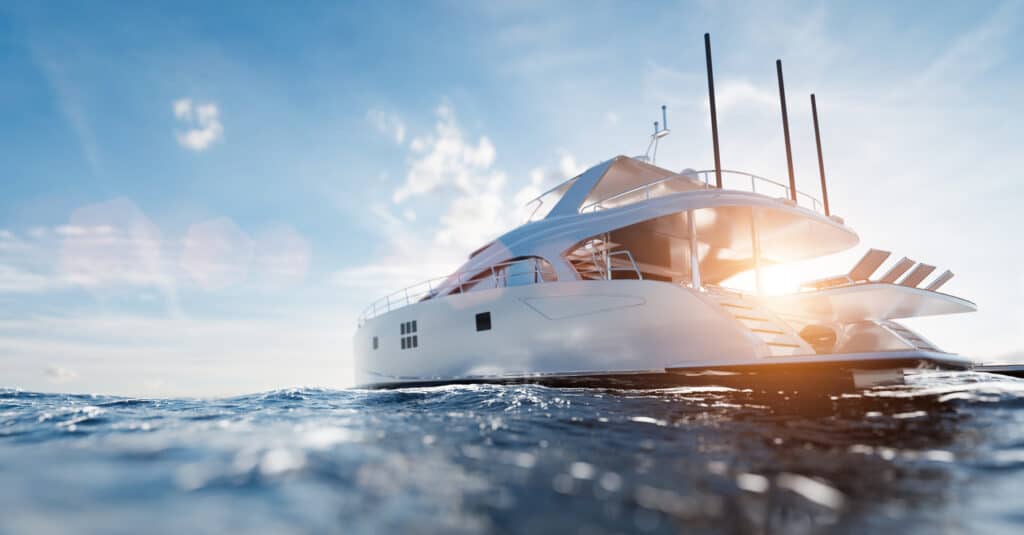
The modern catamaran is far more different than its crude ancestor. Instead of tree cutouts, catamarans are now carbon fiber or fiberglass. Here are the different types of catamarans:

Based On function
Pontoons are usually present on rivers and lakes and sometimes even on oceans, but they only travel near the shore.
In a catamaran pontoon-type boat, the pontoons serve as storage areas, where you will find the onboard motors. They are useful for water leisure activities such as short water trips, tubing, wakeboarding, and water skiing.
Some pontoons may also serve as houseboats. They provide a broader, more stable platform ideal for a floating house. Plus, the space is bigger, and most of it is above water. It offers a better viewing option than a monohull. ( Source )
Small Waterplane Area Twin Hull is a catamaran-type boat that the United States Navy initially used for military purposes. They provide the water stability that is necessary when transporting heavy military equipment.
One example of a military SWATH catamaran is the Spearhead class EPF. It is as long as a World War II escort destroyer, yet it is twice as fast at 43 knots. It can reach that speed because of its two separate hulls.
Because of their innate speed, SWATH catamarans can become patrol boats in lakes and rivers. They can easily outrun and outmaneuver standard watercraft.
Nowadays, there are SWATH cruise ships and other non-military variations. ( Source )

Based On Design
- Sailing Catamaran
The smaller sailing catamarans do not have auxiliary engines, so the owner can propel the boat by harnessing the wind using the sails. It’s a popular choice for people with very little or no sailing experience because they are light and easy to use.
The larger sailing catamarans are for group charters and long-distance cruising. They have become so popular lately that they now outnumber monohulls in tropical locations all over the world. They have a last, a headsail, and a mainsail. And the twin hulls have one engine each.
- Power Catamaran
Unlike their sailing cousins, the powered catamarans do not have sails. They have massive engines which provide high speed. Their twin hulls are stronger and can carry and protect the large motors.
The smaller “powercats” are used mainly for fishing. The bigger ones are rented out for charters and cruises.
Catamaran Hulls Performance
Thanks to the catamaran hulls, the boat offers many advantages over other boat types.
- Because its dual-hull design provides a broader base, it offers more water stability than monohull boats. It makes the cat (catamaran) a popular choice for fishing expeditions and cruises.
- Riding a catamaran is ideal for people who feel seasick whenever they ride boats. The twin hulls prevent the boat from moving from side to side. The hulls allow the boat to travel smoothly, even on moderately choppy waters.
- The catamaran is the best choice when storing provisions and other household items with less heeling and bobbing.
- The twin hulls’ stability is ideal for many activities such as cooking and partying.
- Cats offer more moving space because of their broader base, thanks to dual hulls.
- With a catamaran, you have two great options on where to hang out. You can do it on the spacious deck or below the galley.
- Compared to a monohull of the same size, the catamaran can accommodate more equipment and people.
- The living area in a catamaran is above the water line. This feature provides more natural light, a greater view of the outside, and better air circulation.
- Since catamarans do not have keels, they can anchor on shallow waters, something that most monohulls will not be able to do. This ability of catamaran boats is impressive, especially if you are going around areas with many reefs and small islands.
- Catamaran hulls allow the boat to cut through the waves easier and faster. It means they require less engine power than their monohull counterparts.
- Because it has two engines and two rudders, the catamaran can easily maneuver in very tight spaces.
- Because they do not carry heavy keels, catamarans can sail faster than monohulls.
- The catamaran’s stability, speed, and weight make it a safer option than the monohull. It can sail in shallow waters, make a 360 degrees maneuver effortlessly, and carry more provisions.
Disadvantages Of A Catamaran
Like any other boat type, the catamaran also has drawbacks and limitations. Here are some of them:
- The catamaran hulls prevent the boat from sailing as fast as the monohull upwind. The two hulls cause drag, and this slows the boat considerably.
- Because of its bigger size, looking for a docking site can be more difficult and costlier than a monohull.
- For hardcore sailing fans, the experience of sailing with a catamaran will never be able to match that of sailing with a monohull. To them, the challenge of true sailing is just not there with a catamaran.
What Are The Hulls Of The Catamaran Called?
According to the Online Etymology Dictionary, the Tamil word கட்டுமரம், which is pronounced as kattumaran, is where the word catamaran takes its name. The word means “pieces of logs tied together”. Through the years, the term has evolved into what is now a catamaran in English.

What Are The Characteristics Of A Catamaran Hull?
- Both hulls of a catamaran complement each other to achieve very minimum water resistance.
- Because of this, it takes less energy to propel a catamaran, whether via an engine or sails.
- The catamaran hulls provide stability to the boat. The twin-hull significantly reduces bobbing.
- The catamaran’s ability to keep steady on the water makes it an ideal vessel for cooking, dining, and storing provisions.
Are Catamarans Good In Rough Water?
Catamarans are amazingly stable in rough water. The catamaran’s design and build, which provides stability, are factors why it is one of the best boats to use when the waters are choppy.
Yes, catamarans are relatively more expensive than monohulls. Nevertheless, since single-hull boats are less expensive, their resale value is also cheap.
If you add all the advantages that a catamaran offers – safety, comfort, and speed- it does not come out expensive.
patekphilippe.io

Share this post with your friends
Subscribe to our newsletter.
Join us in our love for all things water. And Adventure.

Upgrade Your Boating Experience: Adding a Third Pontoon Made Easy!
Advertisement As the sun sets over the tranquil waters, the gentle hum of the engine and the soft lapping of waves against the hull create a symphony of serenity. Boating enthusiasts know there’s nothing like being out on the water, surrounded by nature’s beauty. But what if we told you you could take your boating

Can You Wakeboard Behind A Bass Boat?
Can you wakeboard behind a bass boat? Find all the answers here from wakeboard requirements to bass boat abilities.
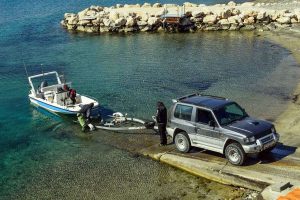
The Complete Runabout Boat & Trailer Towing Guide
Advertisement Basic Boat Towing Towing a boat behind your car, truck or another vehicle can be a hair raising experience if you’ve never towed before. Towing a runabout boat that looks like it’s bouncing all over the place behind your vehicle is more than a little unnerving. Especially if you don’t even know your runabout boat

Pontoon Boat Basics
Heading out to the lake? Well, there’s no better way to enjoy the day than from your pontoon boat. Imagine the fun you’ll have with family and friends cruising around in the sunshine. Even if you’re a novice, a pontoon boat is easy enough to maneuver.


Can You Flush Toilet Paper On A Boat?
Can you flush toilet paper on a boat? Do you need special toilet paper? These questions and more are answered here, all about boating toilets.

Grilling On A Boat 101 – 3 Types Of Grills For Boating And Some Awesome Cooking Ideas For Out On The Water
Grilling on a boat is an enjoyable experience that brings fresh and hot food right to your deck. Let’s explore some of the best boat grills and some great cooking ideas when out on the water.

Boat Information By Type
© 2023 Boating.Guide, A Hyperwave Media Group Ltd. Publication.
Privacy Overview
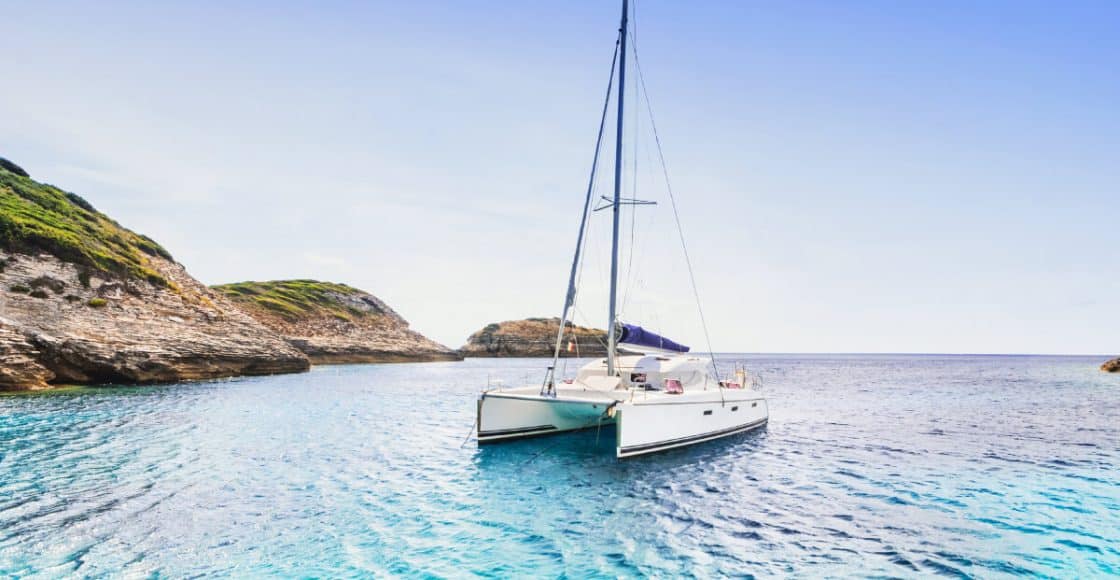
10 Best Catamarans for 2023

Table of Contents
Catamarans have taken the boating world by storm, becoming the fastest-growing segment, with both sail and power cats dominating the market. Some of the best catamarans have been launched in the past 12 months! Let us introduce you to five power catamarans and five sail multihulls, and then let us get you on the water with one! Here are the ten best catamarans for 2023 :
- World Cat 260 CCX
- Four Winns TH36
- Leopard 40 PC
- Aquila 42 PC
- HammerCat 45
- Fountaine Pajot Tanna 47
- Bali 4.4
Balance 442
- Minicat 310
Find the market’s hottest catamarans for half-day and full-day rent
Power Catamarans:
World cat 260 ccx.
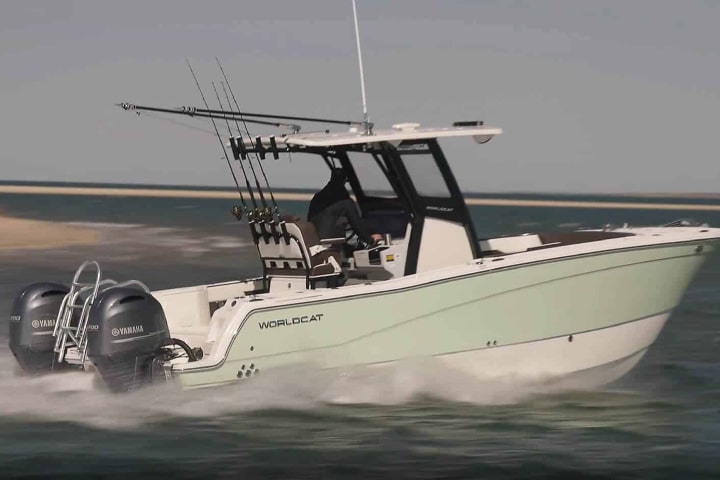
Image Source: https://worldcat.com/models/260cc-x/
The sixth model in the builder’s center console line , the World Cat 260 CCX , is compact but packed with features, including a wraparound U-lounge for relaxing or casting, a 30-gallon live well, a 120-quart insulated fish box and twin 200-hp outboards that draw on 180 gallons of fuel. This is a small but serious fishing machine.
Four Winns TH36
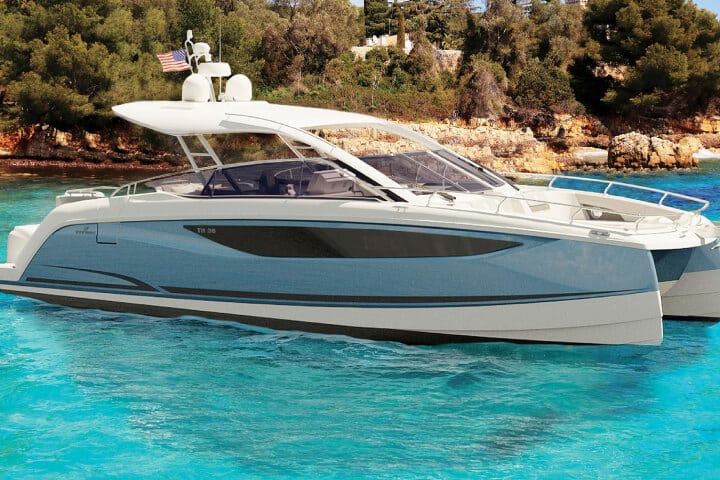
image source: https://www.fourwinns.com/new-era
The new Four Winns TH36 is the first outboard-powered catamaran introduced by the builder. The dual console design has a walkthrough windshield and room for 15 or more guests. Power is provided by twin 300-hp outboards upgradeable to 350s, making this runabout speedy and fun.
Leopard 40 PC
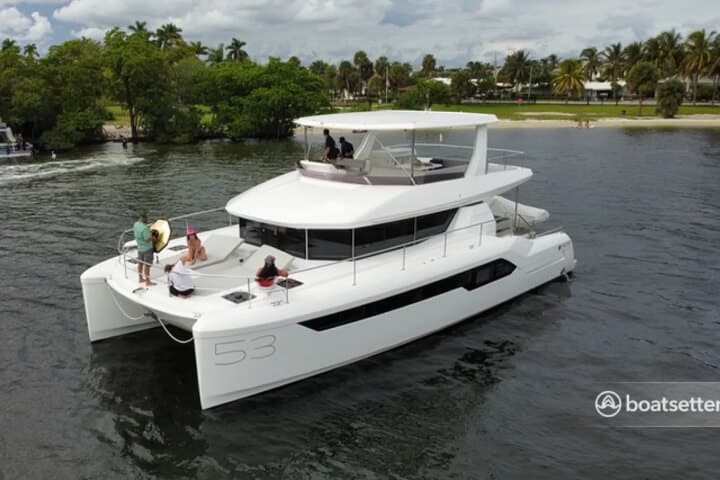
Joining her 46- and 53-foot siblings, the new Leopard 40 PC is a couple’s cruiser with many of the same features as the two larger models but on a much smaller (and for some, more approachable) platform. Engine packages range from 250 hp to 370 hp, and a top speed of 20 knots is expected.
Aquila 42 PC
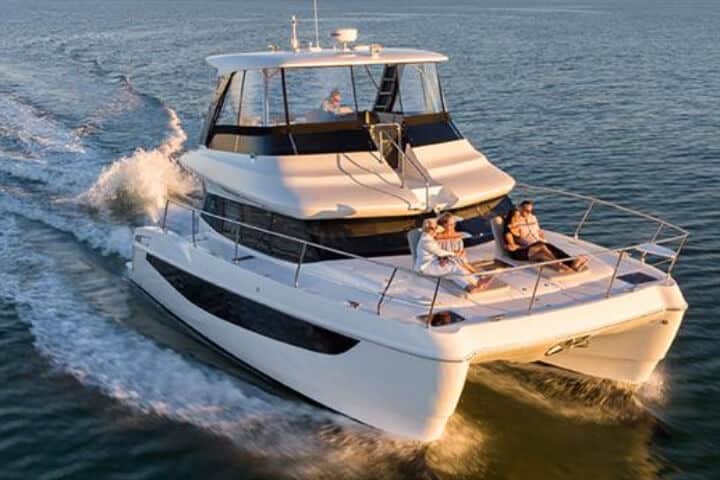
Image Source: https://www.aquilaboats.com/news/42-yacht
The new 42 falls in the middle of the Aquila range and offers two staterooms, multiple sunbeds, a utility cabin , and numerous layout configuration options. She has engines from Volvo Penta and a spacious flybridge with steps that lead directly down to the foredeck for easy maneuvering.
HammerCat 45
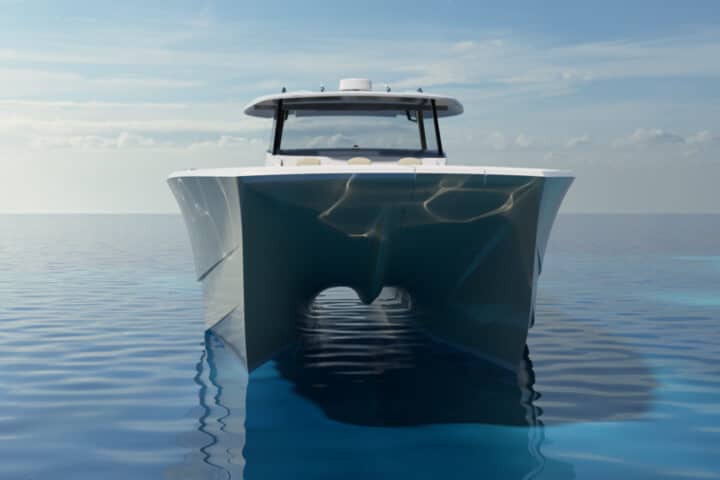
Image Source: https://www.multihulls-world.com/news-catamaran-trimaran/hammercat-45-an-almost-unlimited-program
The new HammerCat 45 is versatile and can work as a sportfish platform, a dive boat, a day cruiser, or a superyacht tender. This center console has a hardtop and a Carolina bow and is built in epoxy and carbon fiber to keep weight down and performance up. Expect a 55- knot top end and a 30-knot cruise depending on the engine package selected.
Sailing Catamarans:
Fountaine pajot tanna 47.
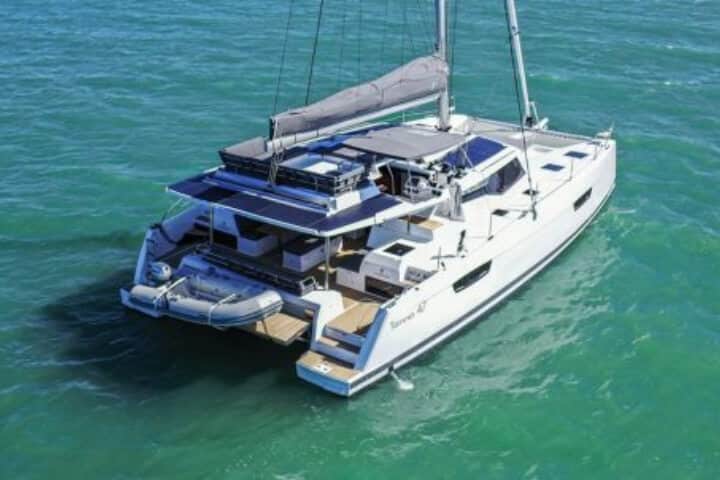
Image Source: https://www.catamarans-fountaine-pajot.com/en/sailing-catamarans/catamaran-tanna-47/
This French-built sailing cruiser has space in spades. The new FP Tanna 47 is based on (and shares a hull design with) her predecessor, the Saona 47, but clever tweaks have made this a whole new boat. The cabin house and deck have been revamped, the flybridge is 40% larger, the salon/ galley has gained storage options, and the helm is more ergonomic than before.
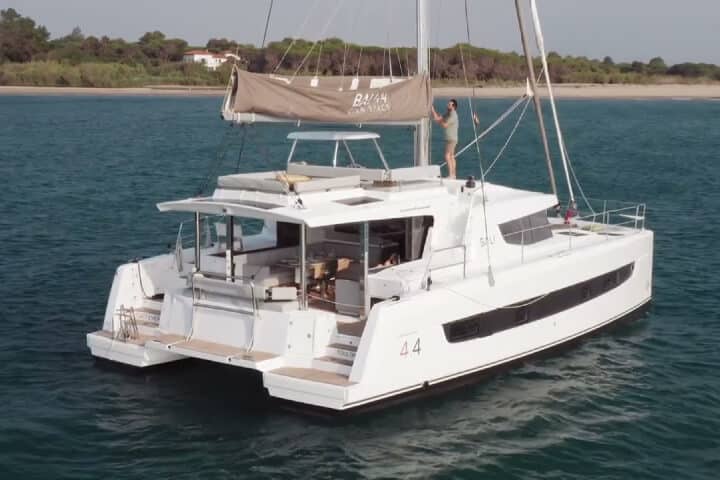
Video Source: bali-catamarans.com
Bali has captured the hearts of sailors who love lots of living space, large household-style appliances, and simplicity. Bali cats are unique for their combination salon/ cockpit layout, and the 4.4 joins her siblings in this groundbreaking design. With the touch of a button, a “garage door” lifts, connecting the indoors with the outdoors with minimum redundancy in living arrangements.
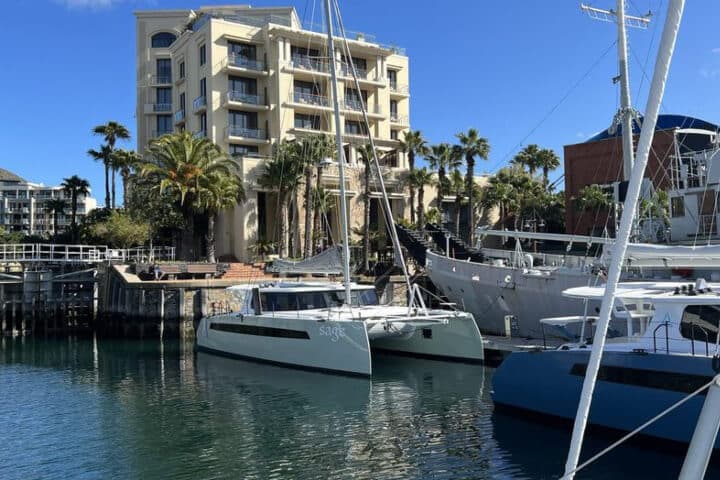
Image Source: https://balancecatamarans.com/balance-442/
Fast and packed with proven cruising features, the Balance 442 is the little sister to last year’s 482. Perfectly sized for couples, this boat was designed for distance cruisers by distance cruisers. There’s even an option for a large solar array to make living at anchor easy and just about carbon neutral.
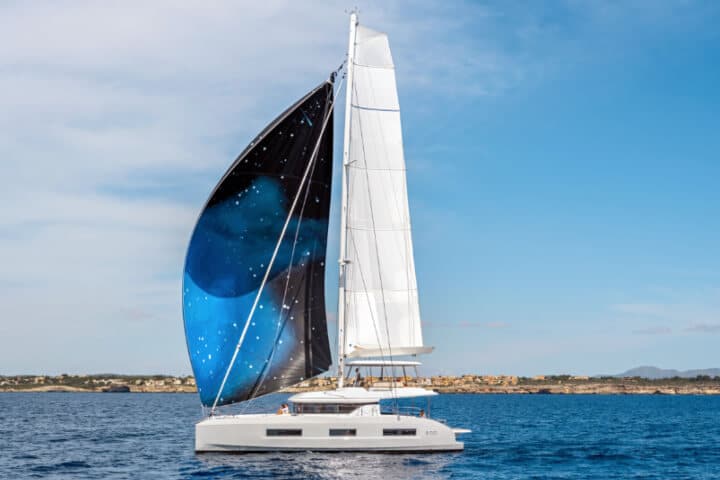
Image Source: https://www.cata-lagoon.com/en/55
French catamaran builder, Lagoon, has introduced a new VPLP-designed cruising cat that you can test in charter soon. The Lagoon 55 slots just above the newly introduced 51and are offered as a large and comfortable flybridge model with up to six cabins to accommodate an overnight crowd.
Minicat 310
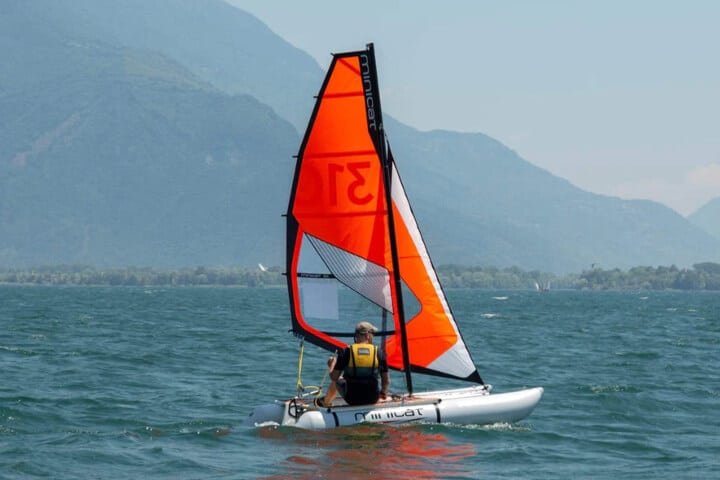
Image Source: https://redbeardsailing.com/products/minicat-310
Not all cats are of the large, expensive fiberglass variety. An affordable multihull can be had in Europe’s Minicat 310 Sport, an inflatable beach cat weighing only 77 pounds and packing down into a single bag. This cat has sophisticated big boat features like roller furling, a fully battened mainsail, keels, and an attachment for a small outboard.
Find catamarans for rent— NEAR YOU
These models, representing some of the best catamaran brands on the market today, are pretty new, so there aren’t many out there yet, but if you get a chance to step aboard one, you won’t be disappointed. One way to potentially test one is via a peer-to-peer boat-sharing service like Boatsetter that pairs owners, who can offset boat ownership costs, with charters, who can enjoy luxury boats without the long-term commitment.
Check out the hottest boats in the market at Boat Types , and scroll through Boat Guises to find your next boating destination . Keep your eyes peeled to catch one of these ten amazing catamarans on the water!
About Boatsetter
Boatsetter is a unique boat-sharing platform that gives everyone — whether you own a boat or you’re just renting — the chance to experience life on the water. You can list a boat , book a boat , or make money as a captain .
List. Rent. Earn— Only at Boatsetter

Zuzana Prochazka is an award-winning freelance journalist and photographer with regular contributions to more than a dozen sailing and powerboating magazines and online publications including Southern Boating, SEA, Latitudes & Attitudes and SAIL. She is SAIL magazines Charter Editor and the Executive Director of Boating Writers International. Zuzana serves as judge for SAIL’s Best Boats awards and for Europe’s Best of Boats in Berlin.
A USCG 100 Ton Master, Zuzana founded and manages a flotilla charter organization called Zescapes that takes guests adventure sailing at destinations worldwide.
Zuzana has lived in Europe, Africa and the United States and has traveled extensively in South America, the islands of the South Pacific and Mexico.
Browse by experience

Explore articles

14 Florida Gulf Coast Islands to Hop by Boat

9 Tips for Cooking on a Boat
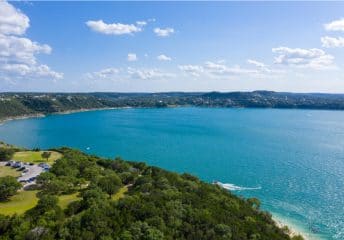
Marinas on Canyon Lake
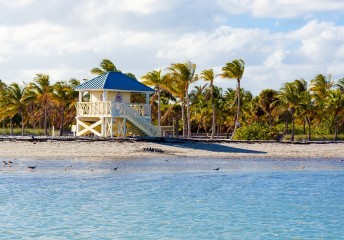
The Key—Biscayne—Times to Hit the Waters
- 2024 BOAT BUYERS GUIDE
- MIAMI BOAT SHOW
- Email Newsletters
- Fishing Boat Reviews
- Fly Fishing
- Marine Electronics
- Fishing Tackle
- Best Marine Electronics & Technology
- Fishing Destinations
- The Bahamas Fishing Guide
- Boating Safety

2023 Boat Buyers Guide: Catamarans
- By Karl Anderson
- December 27, 2022
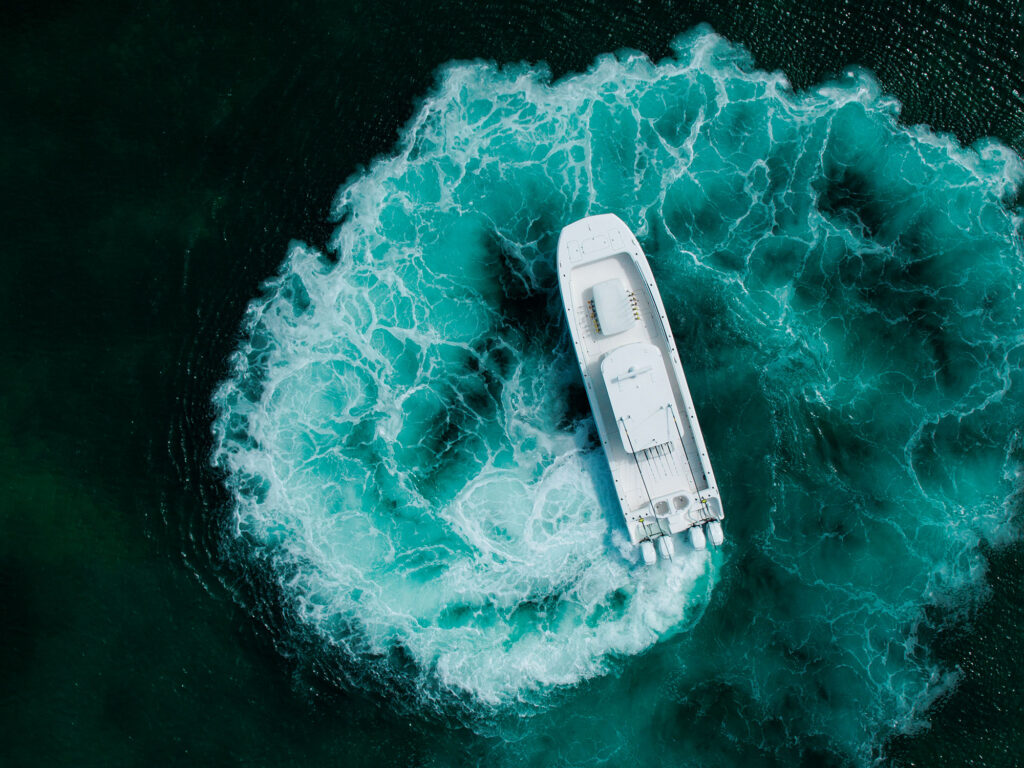
The popularity of the multihull (aka catamaran or cat) fishing boats has never been greater, as more and more boatbuilders enter this growing segment of the market. The inherent stability of the catamaran design rolls less with the seas, making fishing offshore less tiresome and more comfortable. Available from 20 to 48 feet, catamarans typically offer a large fishing platform with generous storage and fishing amenities. They are available in a wide variety of deck layouts, including center-consoles, dual-consoles, and even pilothouse and express variants.
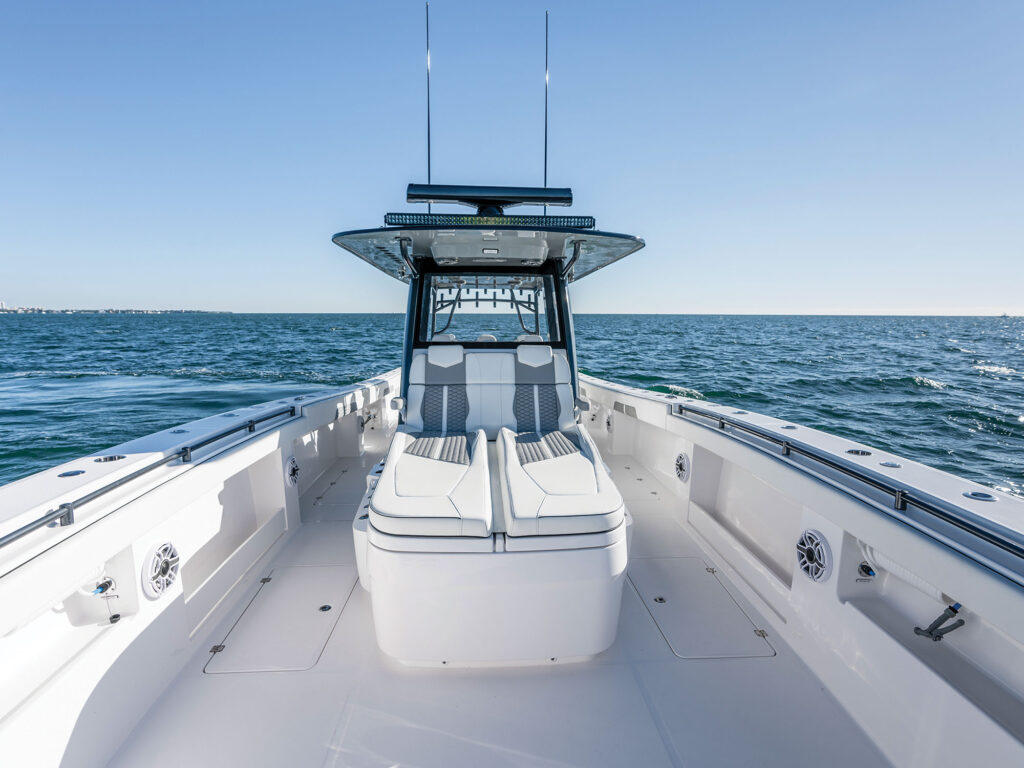
Big Picture
The large deck area of a catamaran enables many large underdeck storage lockers and insulated fish boxes in the sponsons. This gives anglers ample room for gear and the day’s catch. The catamaran’s stability, fishability, and smooth ride in rough seas make it attractive to anglers as well as day-cruisers. A center-console version adds 360 degrees of angler access to the rail. With the dual-console design, generous seating behind a beam-to-beam windshield makes for a great family fishing-friendly setup.
Live bait is one of the most popular types of fishing in virtually every coastal zone. To do it successfully requires optimal water capacity and proper flow. The minimum size of the outflow water plumbing should be twice the size of the inflow. The plumbing should have a drain at the bottom to shed scales at the end of the day, as well as a drain at the top of the well to adjust capacity and allow overflow. Above-deck transom-mounted wells should fully flood to the lids when running to keep baits from getting beat up.
Tip: A sump box with multiple pumps in case a pump fails is the best setup for first-rate livewells. Conveniently located inflow and outflow valves make it easy to optimize the flow without tiring your bait from swimming too much in the well.
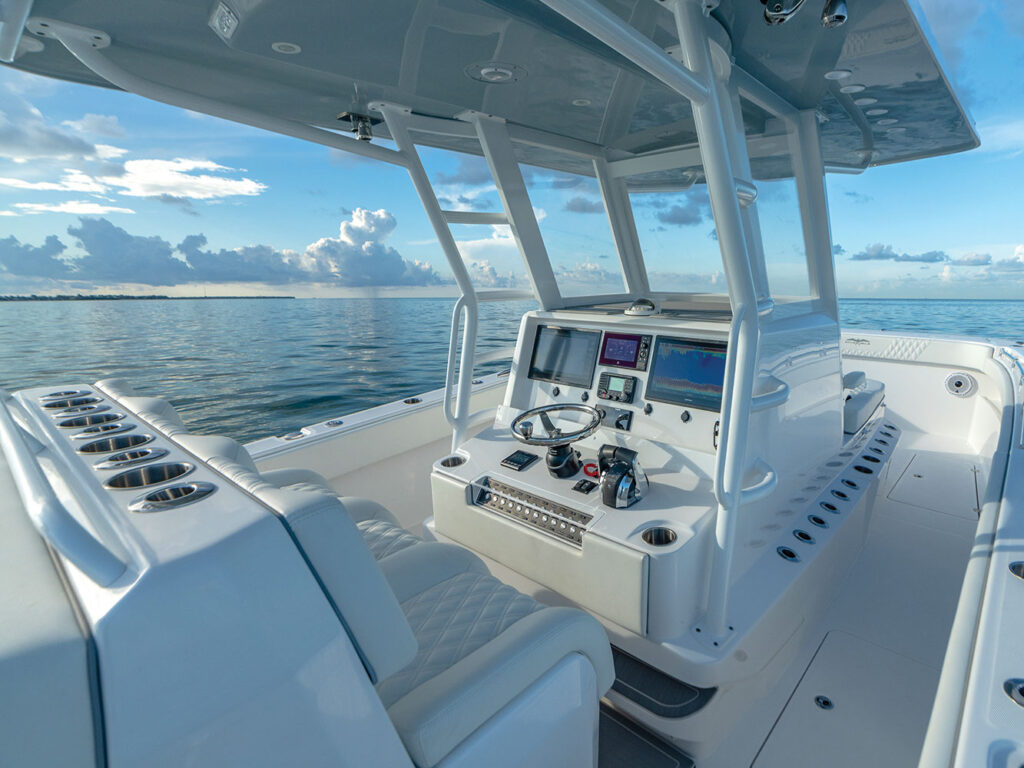
Rod Storage
Having enough rod holders is essential to be successful for opportunity fishing. Look for vertical rod storage along the console and across the back of the T-top. Many models also have rod holders along the outboard transom wall. Having plenty of gunwale rod holders for drift- and kite-fishing is helpful.
Tip: Placing adjustable swivel rod holders by Gemlux makes deep-dropping, lure-fishing and drifting even easier because they allow your rods to face the direction the baits are fishing, yet they can be swiveled back to keep rods from sticking out of the boat while running and docking.
Manufacturers often offer multiple choices for horsepower, but whatever the choice, the engines must come in pairs. For example, you might order twin outboards (one for each sponson) or four outboards (two for each sponson), but single- or triple-outboard configurations are not common on a cat. Optimal selection should be made based on user load, weight of the boat, ride comfort , performance desires, and best case for resale. It’s a rare day when you can run wide open, but having more horsepower gives better torque at slower speeds and thus better control. Running larger engines slower gives better fuel efficiency too.
Tip: When possible, choose the highest horsepower offered because it typically leads to a better resale value with a shorter sales cycle.
Power steering from engine manufacturer Optimus or SeaStar is essential with the higher horsepower required for larger boats, and it makes installing and operating the upper station in a tower far more practical and comfortable.
With the power demands of electronics, livewell pumps, stereo amps and more, it is wise to have at least two house batteries, and for larger boats, a third or fourth with a multibank charger for dockside. Each engine should have its own dedicated battery as well.
Electronics
Typically choosing the largest screen or multiple screens that will fit on the console is best-case scenario for ease of use, ergonomics, and visibility. VHF radios, stereo controller, and equipment switches for lighting, pumps, and accessories should all be integrated with greatest visibility and ease of operator reach.
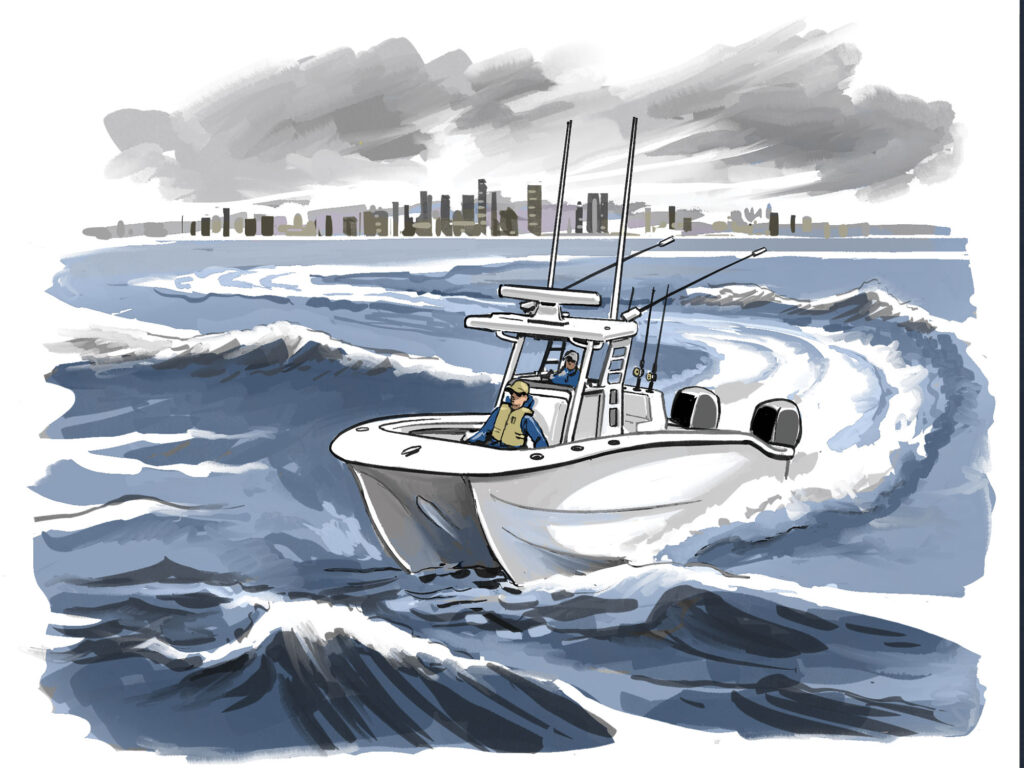
A Tale of Two Hulls
A catamaran rides on pair of hulls, or sponsons, each thinner and sharper than that of a similarly sized monohull boat. The narrow sponsons of the cat tend to slice easily through water to deliver a smooth ride, even in rough seas. At the same time, with the sponsons positioned out to the sides of the boat, cats tend to roll less, thus providing great stability to enhance crew comfort, security and safety. However, cats tend to corner more flatly than a monohull, and some hulls (but not all) tend to lean outward versus inward during a turn.
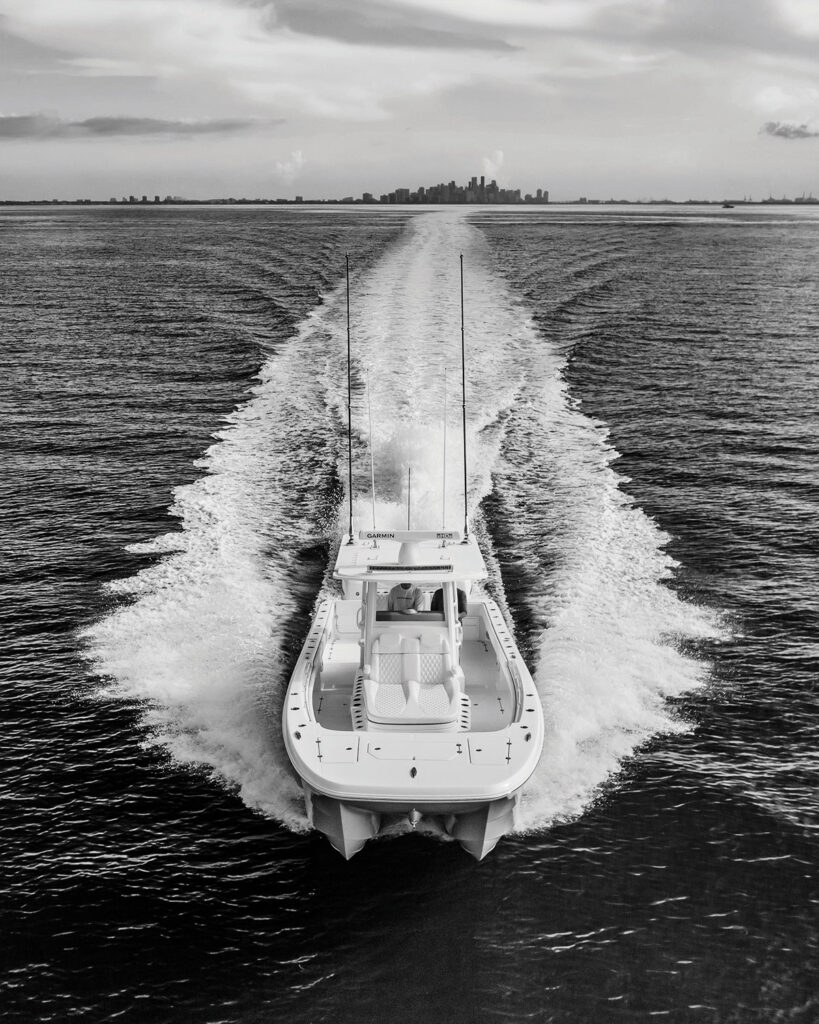
Experts Say
Newer designs such as Invincible’s Morelli and Melvin-designed semi-asymmetrical sponsons eliminate some of the negatives of the cat design, such as “sneezing,” where water sprays out the front of the boat when hitting a wave. They’ve also controlled the uncomfortable “outboard lean” sensation common in older designs when in a turn. Once transitioned to a catamaran, many become true believers and preach the benefits of the design.
Editor Says: Saltwater fishing cats not only offer superb stability and smooth ride, but some also display exceptional speed and range. I recall one trip out of Key West, Florida, aboard an Invincible 40 Cat with four 350 hp outboards to the Dry Tortugas. It was a 60-mile run, and we made it there in 70 minutes. We caught more fish than our arms could bear, and then dashed back to Key West, arriving in time for cocktail hour on the same day. -Jim Hendricks, Staff Editor, Boating and Fishing Group
- More: 2023 Boat Buyers Guide: More Resources , Boats
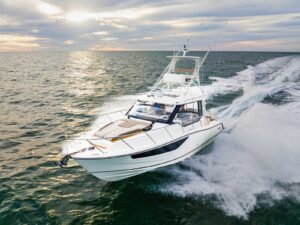
Salt Water Sportsman On Board: Boston Whaler 365 Conquest
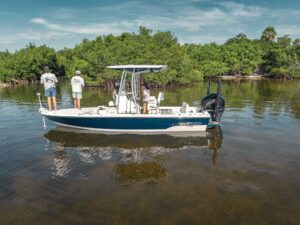
Pathfinder 2200 TRS
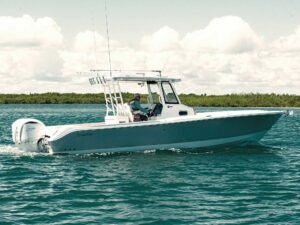
EdgeWater 325CC
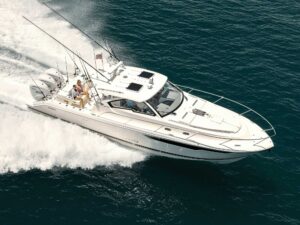
Pursuit OS 405 Offshore
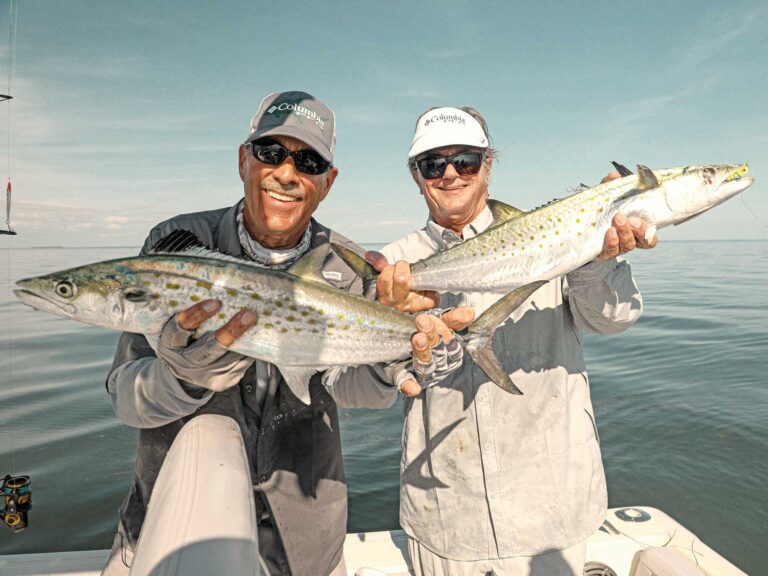
Top Spanish Mackerel Fishing Tips
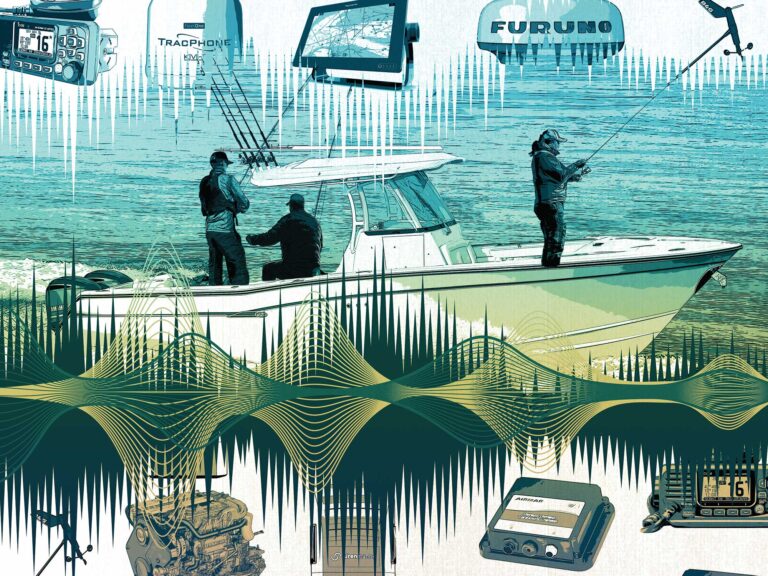
What Can Boating Anglers Expect From NMEA OneNet?
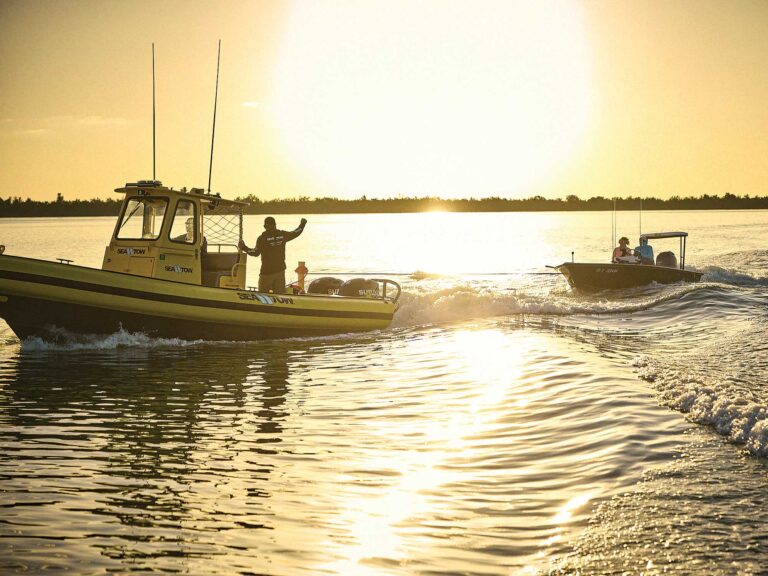
10 Common Solutions for Boat Engine Problems
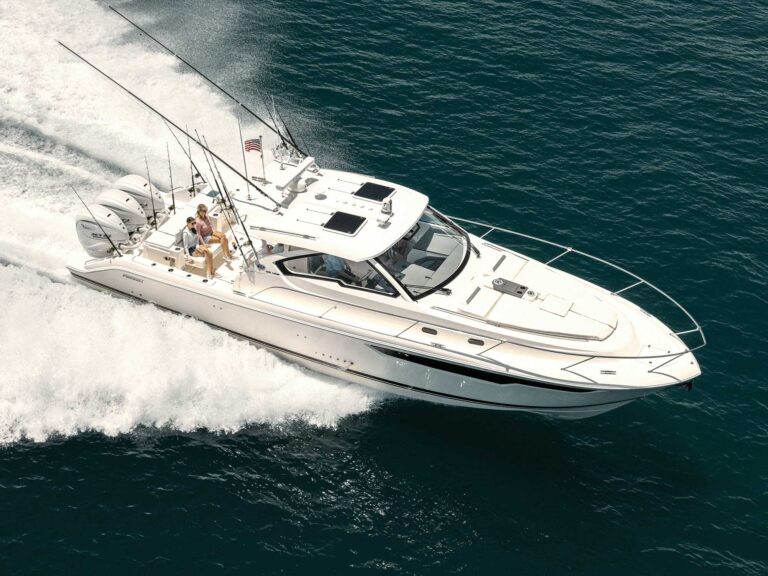
- Digital Edition
- Customer Service
- Privacy Policy
- Cruising World
- Sailing World
- Salt Water Sportsman
- Sport Fishing
- Wakeboarding
What Is A Catamaran? Does It Have Engines Or Can It Only Sail?

Catamarans are a type of boat that has two hulls connected by a platform. They offer many advantages over traditional monohull boats, including increased stability and improved speed. This article will explore what exactly catamarans are and how they can be powered. We’ll also look at the differences between sailing and motor-powered catamarans to help you decide which one is right for you.
What Is A Catamaran?
A catamaran is a type of boat with two hulls connected by beams. It is usually powered by sails, although all modern catamarans come with inboard motors for propulsion. Catamarans are traditionally used for sailing, fishing, and leisure activities . They can be used in both fresh and salt water, and their light weight allows them to travel at high speeds without using much fuel.
Catamarans are known for their stability and durability due to their wide beam and shallow draft. This makes them ideal for traversing shallow waters or areas where the sea is choppy and unpredictable. They also have the advantage of being able to turn quickly and maneuver easily in tight spaces. Additionally, they provide a smooth ride despite rough seas since the two hulls help to reduce wave impact on the boat itself.
Advantages Of Catamarans
Catamarans offer many advantages to sailors and other seafaring travelers. The primary benefit of catamarans is their stability, due to the fact that they have two hulls that are connected by a platform. This design makes them much more resistant to waves than monohull vessels, which makes them ideal for activities such as fishing or leisurely cruises near shore. Catamarans also tend to be lighter, faster and more fuel efficient than monohulls, making them an attractive choice for sportier outings such as racing or overnight trips. In addition, catamarans can either be powered by engines or sails, giving you the flexibility to choose whatever type of propulsion suits your needs best.
Types Of Catamarans
Catamarans come in a variety of shapes and sizes, from luxurious yachts to fast-moving racing boats. They offer a unique sailing experience, with their twin hulls providing stability and comfort while still able to reach high speeds. Catamarans can be powered by engines or sail, enabling them to move swiftly through the water. Some are designed for serious racing, while others are equipped for leisurely cruising on the open waters. With so many options available, there is sure to be a catamaran that will fit any sailor’s needs. Whether it’s speed or comfort that you’re after, a catamaran can provide an unforgettable experience on the seas.
Sailing Vs. Motor-Powered Catamarans
Catamarans offer many advantages over monohulls and have become a popular choice for many reasons.. They are lightweight, stable, and provide ample space onboard. However, there is one major decision to make when purchasing a catamaran: whether to choose a sailing or motor-powered version.
Sailing catamarans have the traditional look of a boat with two hulls and tall sails, while motor-powered catamarans come equipped with engines and resemble more of a powerboat. Both types of catamarans offer their own unique benefits and drawbacks. Sailing versions are cheaper to purchase but require the sailor to be knowledgeable in sailing tactics in order to navigate easily. Motor-powered versions are more expensive but can be easier to operate in certain conditions due to their greater speed and maneuverability. In the end, it comes down to personal preference as both types can provide an enjoyable experience on the water.
Benefits Of Chartering A Catamaran
Catamarans are a type of sailing vessel with two hulls that are connected with a frame. They are typically very stable and have plenty of deck space for passengers and amenities. Catamarans also come equipped with two engines, so they can travel in calm waters even when there’s no wind to power the sails. The engine also allows them to get back quickly against strong winds or tides, making them great for long trips and passages.
The major benefit of chartering a catamaran is the amount of space it provides compared to traditional monohulls (a boat with one hull). This makes them ideal for larger groups, as they can accommodate more people without feeling cramped. Additionally, catamarans offer great stability in the water – even in choppy conditions – allowing you to feel safe and secure while onboard. Plus, since they don’t require as much maintenance as other boats, they’re perfect for longer periods of time on the water. All these factors make catamarans a great choice for any travel vacation with friends and family.
Frequently Asked Questions
Are catamarans suitable for excursions.
Catamarans are a popular choice for those looking to charter one for an excursion due to their spaciousness and stability. They provide more than enough room for comfortable traveling as well as plenty of storage space, making them an ideal option for extended cruising. Additionally, all catamarans are equipped with engines, allowing for easy navigation and maneuverability when needed. All in all, catamarans make great vessels for vacations and traveling and can be a great way to explore the waters.
What Is The Best Type Of Catamaran For Ocean Voyaging?
When it comes to ocean voyaging, the best type of catamaran is a modern performance cruiser. These vessels are designed to combine speed and comfort, with a shallow draft for navigating in and out of shallow waters. Modern performance cruising catamarans feature two hulls connected by an open deck, often with engines that give them greater maneuverability. They also generally have larger living spaces than traditional monohulls, so they can provide more comfortable accommodations during long voyages.
How Many People Can Typically Fit On A Catamaran?
A catamaran is a type of boat with two parallel hulls. Depending on the size, it can typically fit anywhere from 4-12 people plus crew. It’s important to note that the number of passengers will depend on the size and design of the boat, so it’s best to check with a manufacturer for more specific details.
A catamaran is a great choice for those looking to explore the ocean in style. They’re spacious and versatile, making them suitable for all sorts of travel plans and excursions. Plus, they can be powered by either engines and/or sails, so you can decide which works best for your needs. Charter prices can vary depending on your vacation needs. All in all, a catamaran is an excellent choice for anyone wanting to explore the open seas!
If you’re considering renting a catamaran, it’s important to do some research first. There are many different kinds to choose from depending on what your entire party has on their travel wish list – and make sure that you have a safe and fun voyage!
Get a Quote
Are you ready to let us show you what we can do for you? We can’t wait! This is as exciting for us as it is for you. We began this business because we love putting the perfect yacht charter together for our clients and getting the best of the best at the right price point thanks to our contacts and experience.
Use our quick contact form to give us the basics about what you’re looking for and we’ll send you ideas and pricing. Don’t worry if it’s not grand enough or should be scaled back; we’ll take care of that too. When you love the plan, we put it into action. All you have to do is show up and enjoy.
More Vacation Tips

The Ultimate Guide to Experiencing the St. Barths Bucket Regatta
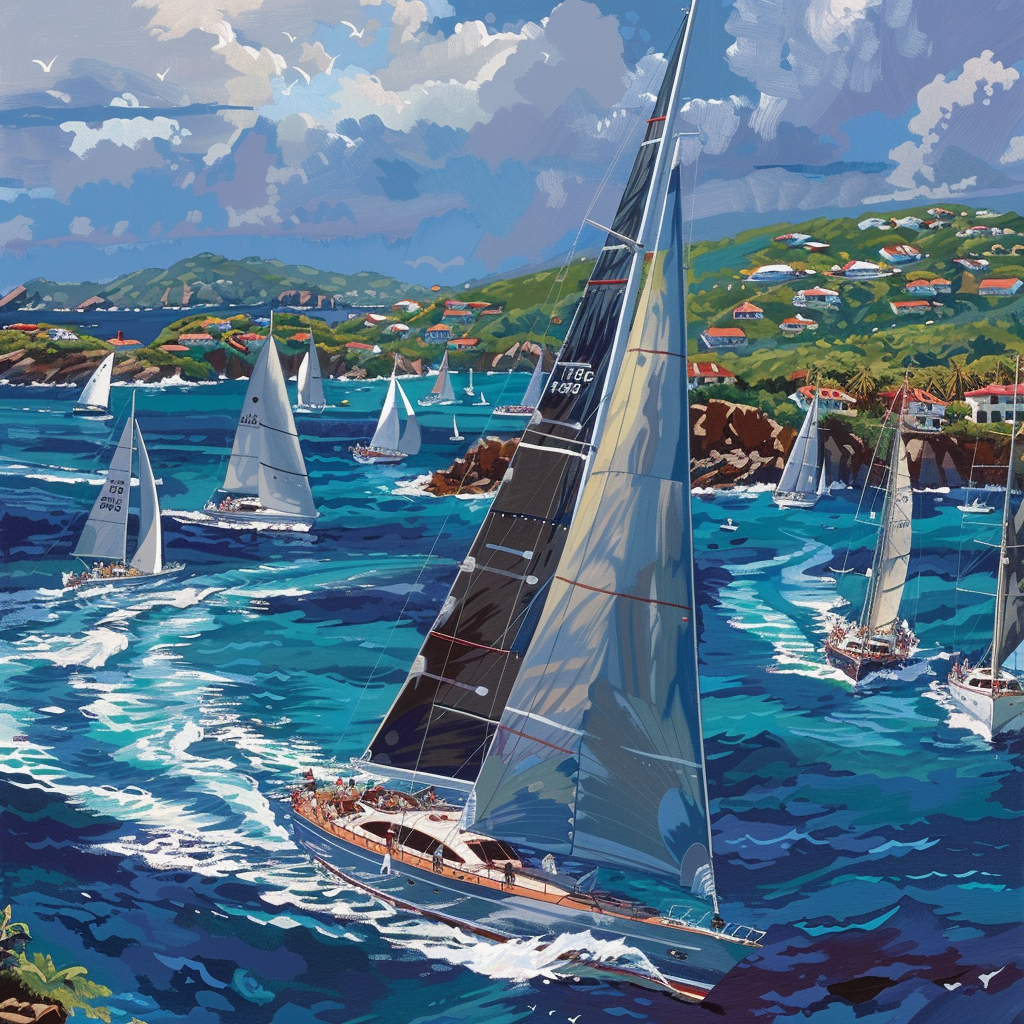
St. Barths Bucket Regatta 2024: What to Expect
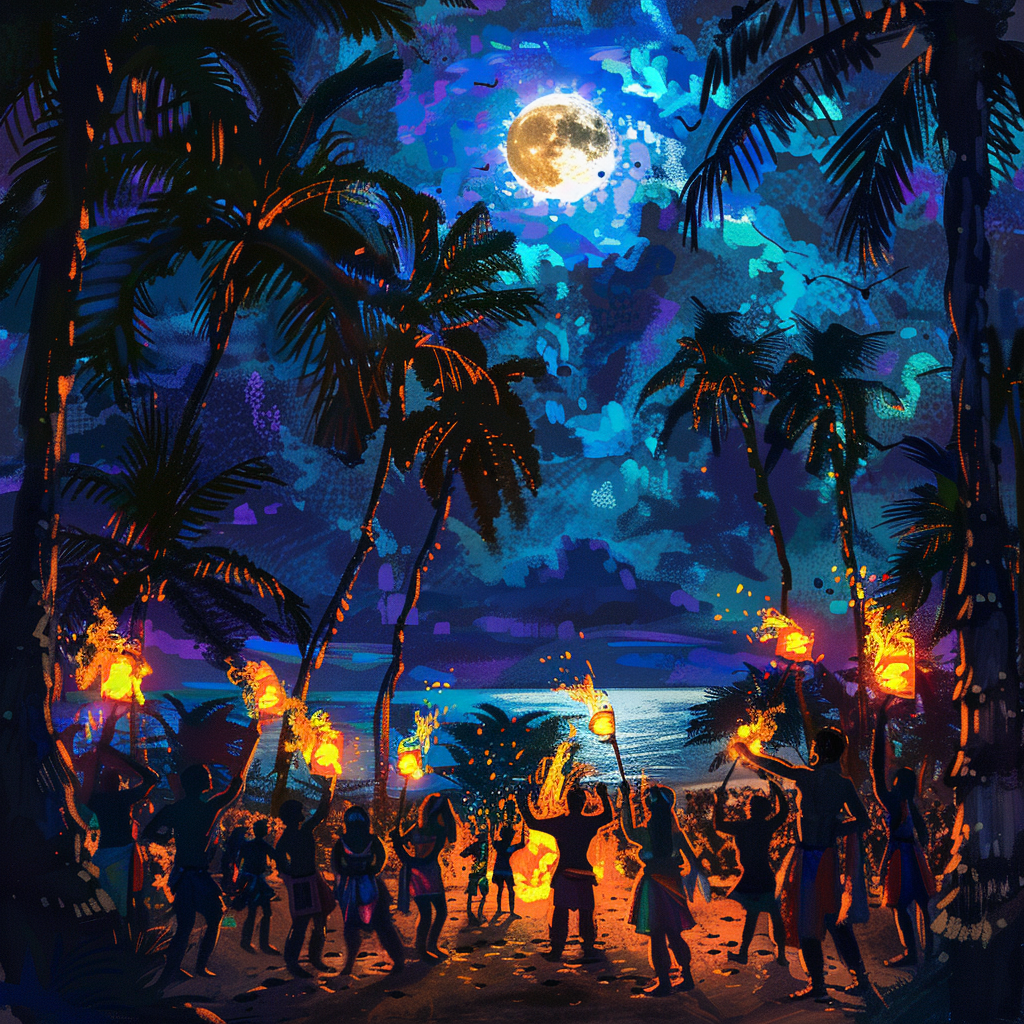
Navigating Trellis Bay’s Full Moon Party: Tips and Tricks for the Ultimate Experience
Call Us (561) 445-5664
How to Sail a Catamaran: 10 Catamaran Sailing Tips

Published Sept 6, 2021
Have you been wondering about how to sail a catamaran? Well then, you’re in the right place as we will provide you the basic information about catamaran boats as well as their advantages and disadvantages. The information we’re about to tell will help you sail your catamaran as easily as possible. Lucky for you, this article includes 10 tips for sailing catamaran boats that you should know.
What Is A Catamaran?
A catamaran is a multi-hull, meaning it has two connected hulls with two engines, two sails, and two rudders. Catamarans are known for their stability and spaciousness. Additionally, they offer larger areas for the deck, saloon, and galley, so this boat is the best option for people who prioritize their comfort over the cost.
Advantages Of Catamarans
- Spacious – Catamaran is a multi-hull, so the space it offers is double the space on usual monohulls . Massive space means more space for bigger rooms, cockpits, and decks. In addition, this multi-hull can accompany more guests all at once.
- Stability – Since a catamaran is built of two hulls, they are more stable, unlike other boats. As a result, multihulls are less prone to rocking and heeling, suitable for guests or crew members with seasickness. In addition, the stability of catamaran boats makes it more comfortable for people to sleep, read, and wander.
- Easy to maneuver – Catamarans consist of two engines and rudders. They are helpful when it comes to maneuvering and docking the boat. In addition, having two engines makes catamarans reliable when emergencies occur.
- Speed – As mentioned earlier, catamarans don’t have kneels, making them lighter than other boats. This makes them faster when it comes to sailing downwind or broad reaches.
- Design – Catamarans’ designs look attractive to the eyes. These multihulls bring prestigious vibes that most guests look for. They are treated like luxurious vessels because of their fascinating looks.
Disadvantages Of Catamarans
- Expensive – Catamarans tend to be more costly than most monohulls or cabin sailing yachts. This kind of boat is more expensive because it provides many features that require more high-quality building materials.
- Availability – Despite being more expensive than other boats, catamarans seem to be very popular these days. Unfortunately, this multi-hull sells out fast, so they are not always available. If you wish to use catamarans, you should book a reservation for your boat early.
Requiring bigger space to berth – Since they provide more space for guests, it takes up as much space. Therefore, this multi-hull usually takes up double the space to berth than monohulls. . (Related: Trimaran vs. Catamaran: Which is Better? )

10 Catamaran Sailing Tips
Here are some tips on how to sail your catamaran:
1. Always keep the boat sailing downwind
Sailing downwind prevents pounding and slapping sounds that slow down the boat. When the low bridge deck slaps on the undercarriage of the boat, it causes annoying sounds. Making sure that you are sailing downwind as much as possible makes your sailing hassle- and noise-free.
2. Speed up before tacking
You must have enough boat speed to tack smoothly. Tacking refers to a changed direction of a boat to achieve the desired destination. If you don’t speed up, you will most likely not be able to tack.
3. Bring the mainsail close to tack efficiently
You can tack efficiently by keeping the mainsail tight and sailing as close to the wind as possible. You must be able to do that without losing boat speed. Otherwise, you won’t be able to tack.
4. Use the jib to help the bows turn better through the wind
Jibing is the opposite of tacking. It’s a sailing maneuver wherein the boat turns its stern through the wind to turn the bows. You should let the jib get backwinded for a while to fix the position of your bow.
5. Bring as many snubbers as you can
Snubber is short cordage attached to the anchor chain and a strong area on a boat together with a bridle. These are used to stop chains from rattling on the bow roller. Snubbers are helpful to prevent and relieve tension on lines and deck fittings. Since the ocean waves can bring pressure to many lines in your boat, you should set up as many snubbers as possible.
6. Use throttle control for maneuvering in normal conditions
The throttle control manages the speed of a boat which makes it ideal to use for maneuvering. You must do this while keeping the steering wheel center.
7. Use engines only when maneuvering in narrow spaces
For maneuvering in tighter spaces, you should consider using the engines only. Using your engines alone is better than maneuvering with steering wheels.
- Use both engines for backing
When your catboat needs to anchor, your two engines will be helpful to you. You can use both engines for faster backing to anchor.
9. Make sure that your boat has completely stopped when you’re going to anchor
Catboats have a shorter keel than most boats, so they are less resistant to water. Catamarans require more time to slow down than monohulls, so you need to be extra mindful when anchoring your boat.
10. Plan advance for weather conditions
Checking the weather when you’re planning to go boat sailing is a must. Even though the weather reports tell you that it would be a sunny day, you should still prepare for other weather conditions. You should be ready and have every piece of equipment needed if ever the rain decides to fall unexpectedly.
Cruising Catamarans
These are the types of cruising catamarans that can be used for your next sailing trip:
Charter/cruising catamarans
This type of catamaran is built explicitly for the charter market. This has small rudders, heavier displacements and can easily struggle even in ideal water conditions. Charter cats usually sail at 55-60 degrees true wind angles (TWA).
High-performance cruising catamarans
High-performance cruising catamarans offer advanced centerboards, deeper rudders, and less displacement, which is better than a typical catboat. If no problems occur, you can sail this type of cat windward at a 45-50 degree TWA.
Sailing with catamarans has its own advantages and disadvantages. However, we can’t deny the fact that it’s one of the beginner-friendly boats to maneuver. Sailing catamarans should be easier for you now that you’ve learned some tips on how to sail a catamaran.
Experience Yacht Charters With Seafari In Boca Raton Florida
Looking for a great time on the water in Boca Raton Florida? Seafari Yacht Charters is number choice for yacht rentals in Boca Raton . Book our yachts for parties , exciting day trips to the Bahamas, romantic yacht dinner cruises , and much more. Come experience all South Florida has to offer with us.

Fact Checked By Experts
Our team of internal experts has conducted rigorous fact-checking on this content. Explore the editorial standard for our website to dive deeper into our commitment to excellence.

About The Author
Krizzia Paolyn has a bachelors degree in Psychology and a passion for yachting in South Florida. She has a desire to be heard and to encourage others to make their voices heard as well.
Related Posts
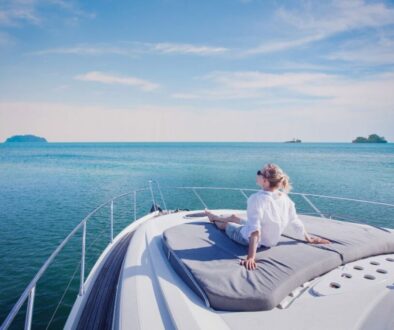
Yachting Benefits You Might Not Know
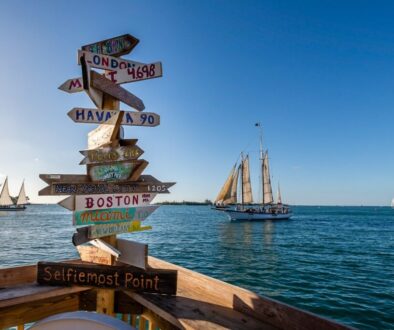
Most Popular , Yachting
How To Charter A Boat From Miami To Key West
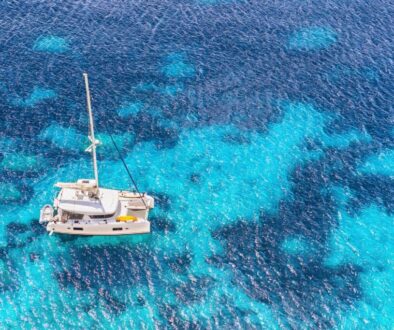
What To Know Before Renting A Catamaran Charter
Find us on social media.

© SeafariYachtCharters.com 2024
View Our Privacy Policy
Website design by Correct Digital
Our Catamarans
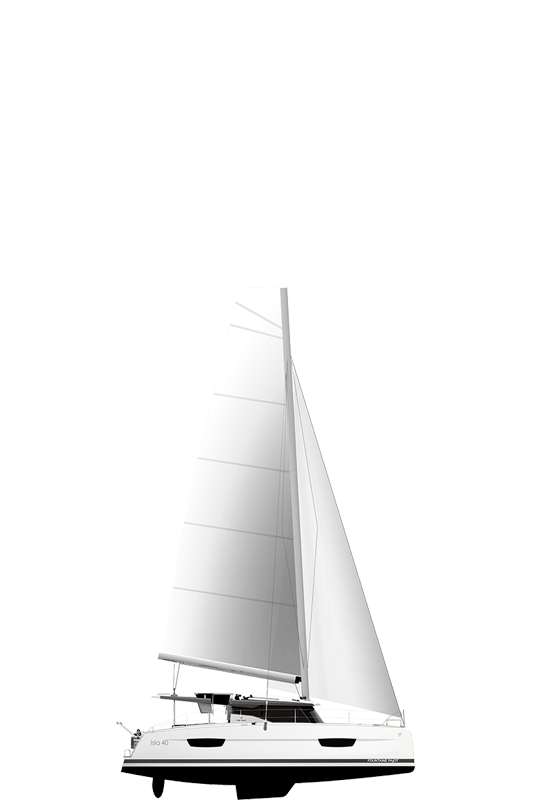
Explore our models in a different way thanks to the virtual marina
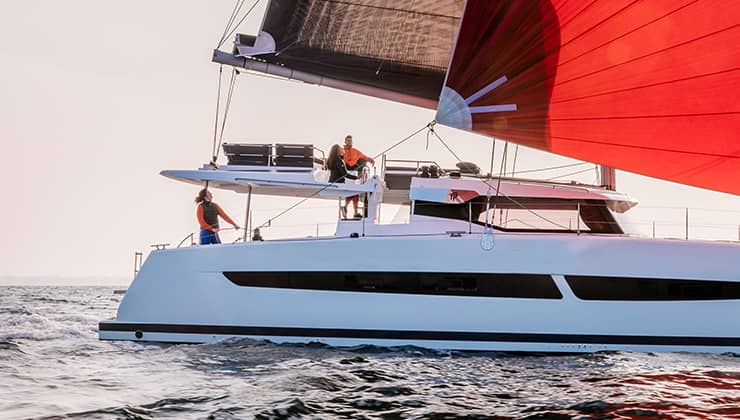
Efficiency through design
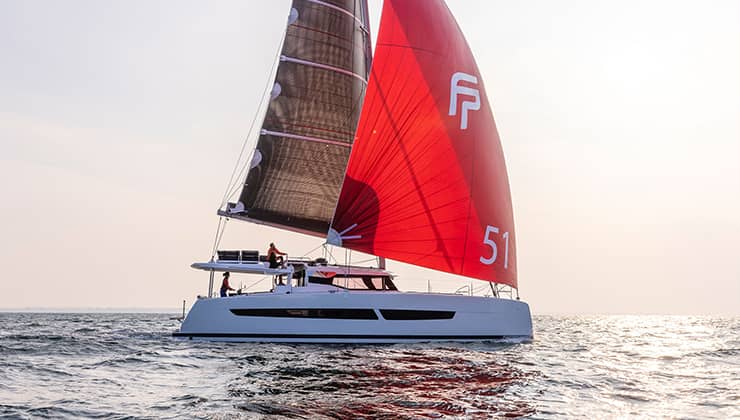
A feel for the sea: sailboats first and foremost
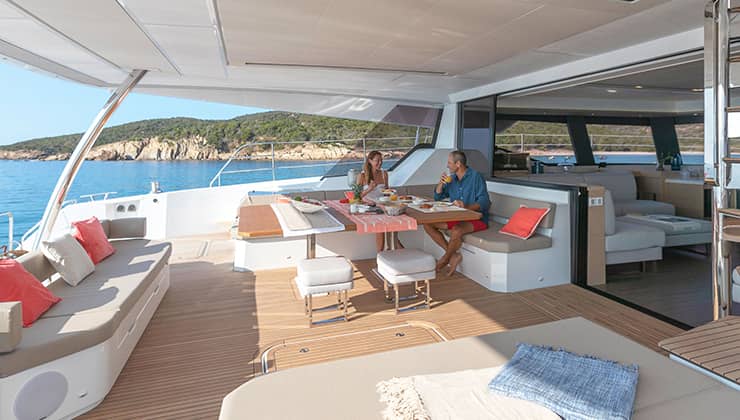
When volume transforms to real space
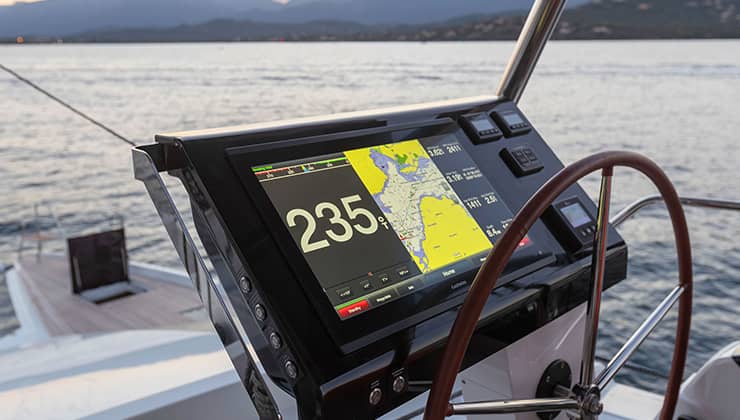
Innovation as a foundation
- Smart Electric
- Virtual marina
Share your emotions
Create timeless memories as you experience spectacular destinations with those you love. Fountaine Pajot’s range of sailing catamarans has been designed with remarkable living space and superb levels of comfort and performance so you can share all the pleasures of a premium cruising lifestyle.
Discover our Sailing catamarans

Catamaran Isla 40
11-meter sailboat
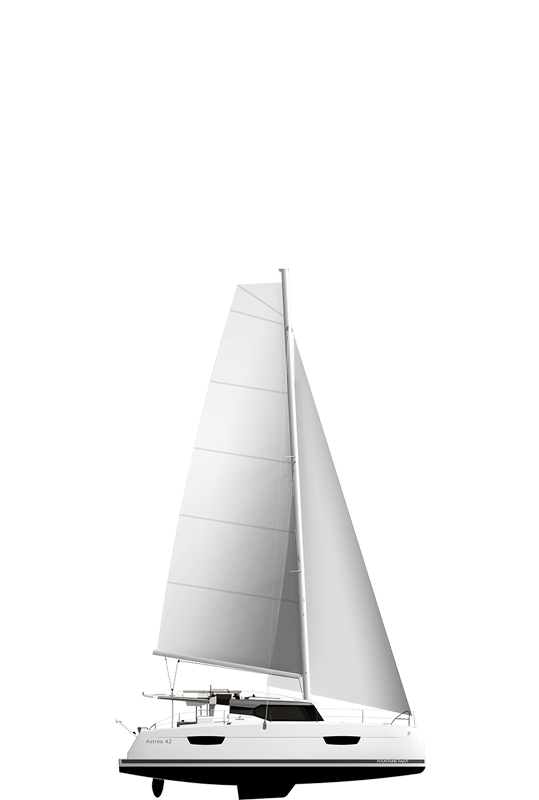
Catamaran Astréa 42
12-meter sailboat
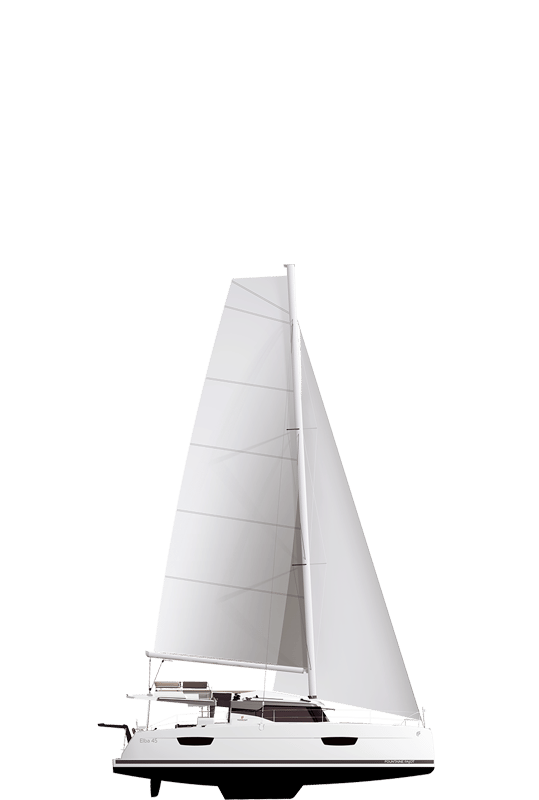
Catamaran Elba 45
13-meter sailboat
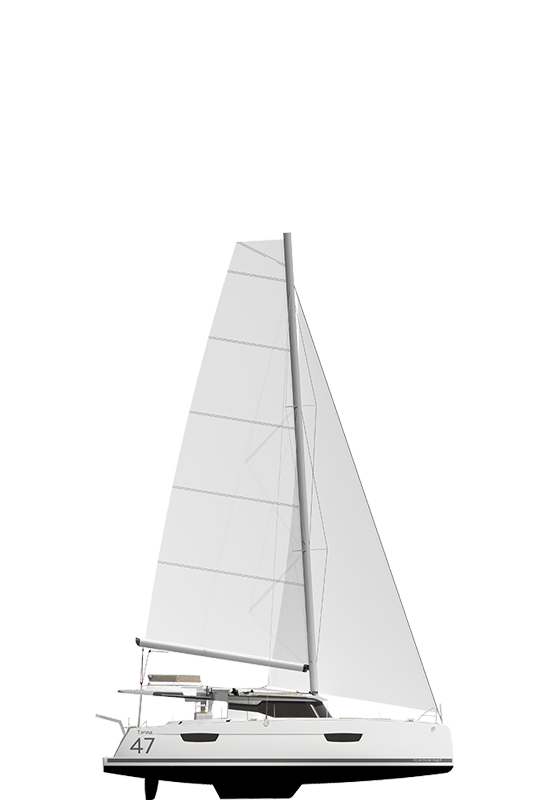
Catamaran Tanna 47
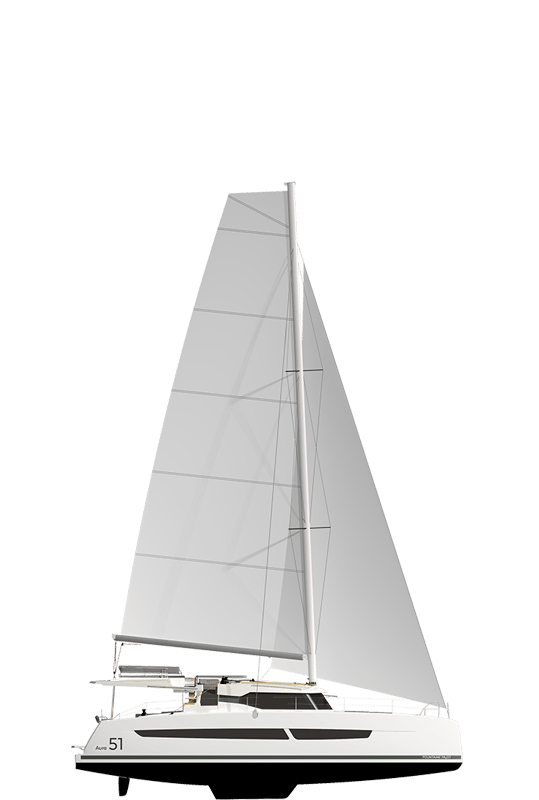
Catamaran Aura 51
15-meter sailboat
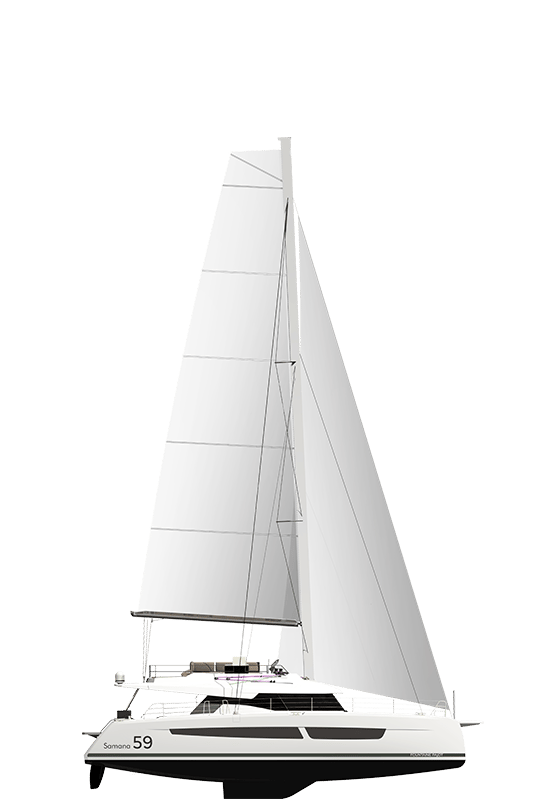
Catamaran Samana 59
18-meter sailboat
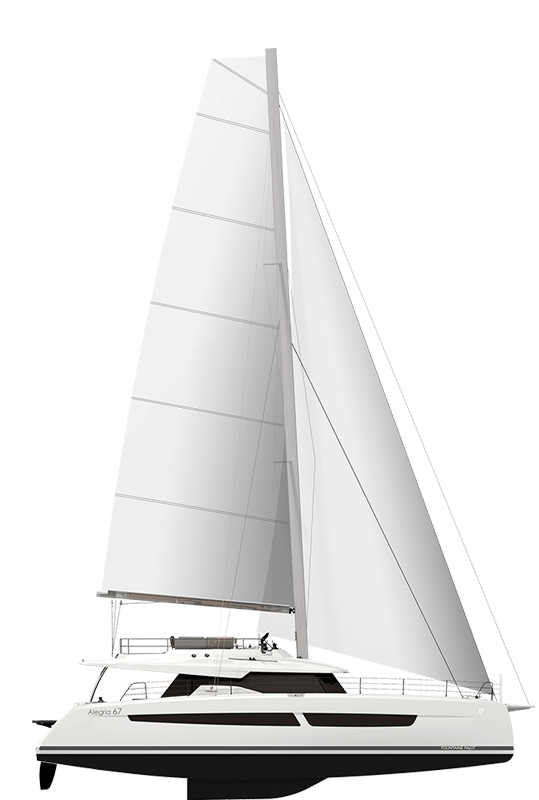
Catamaran Alegria 67
20-meter sailboat
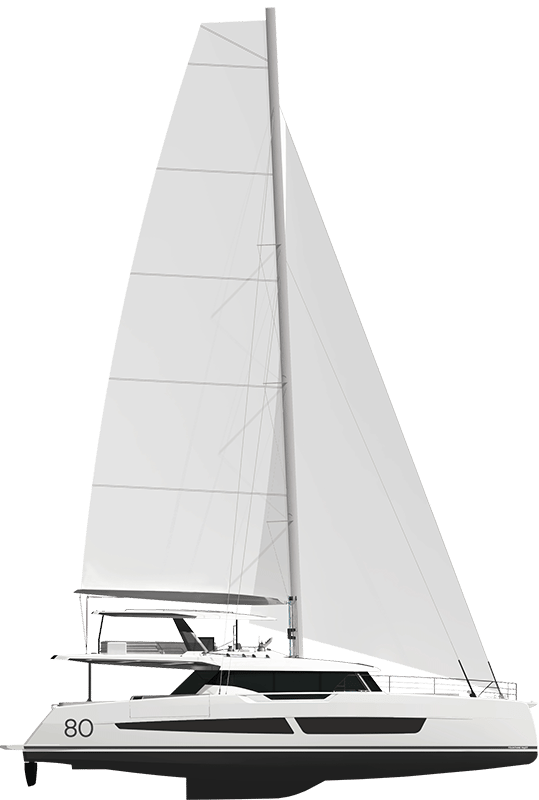
Catamaran Thira 80
23-meter sailboat
Compare models
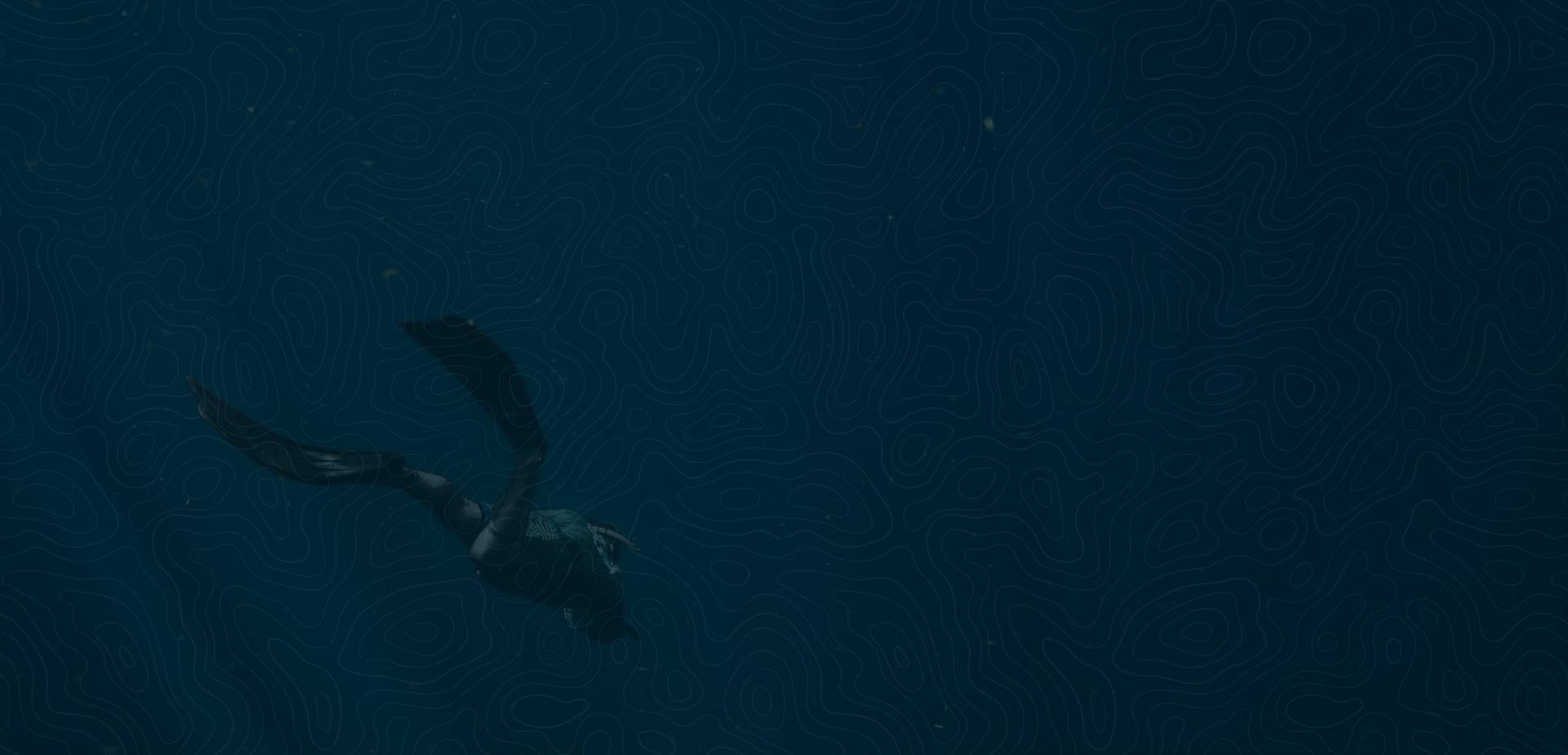
Innovative, safe technology for more environmentally friendly cruising
Experiences, a life of dreams, adventures and emotions….
Immerse yourself in the Fountaine Pajot experience through stories of adventure, news, webcasts, podcasts, press reviews, photo and video reports… Discover a little more about the pleasures of cruising and sailing catamarans!
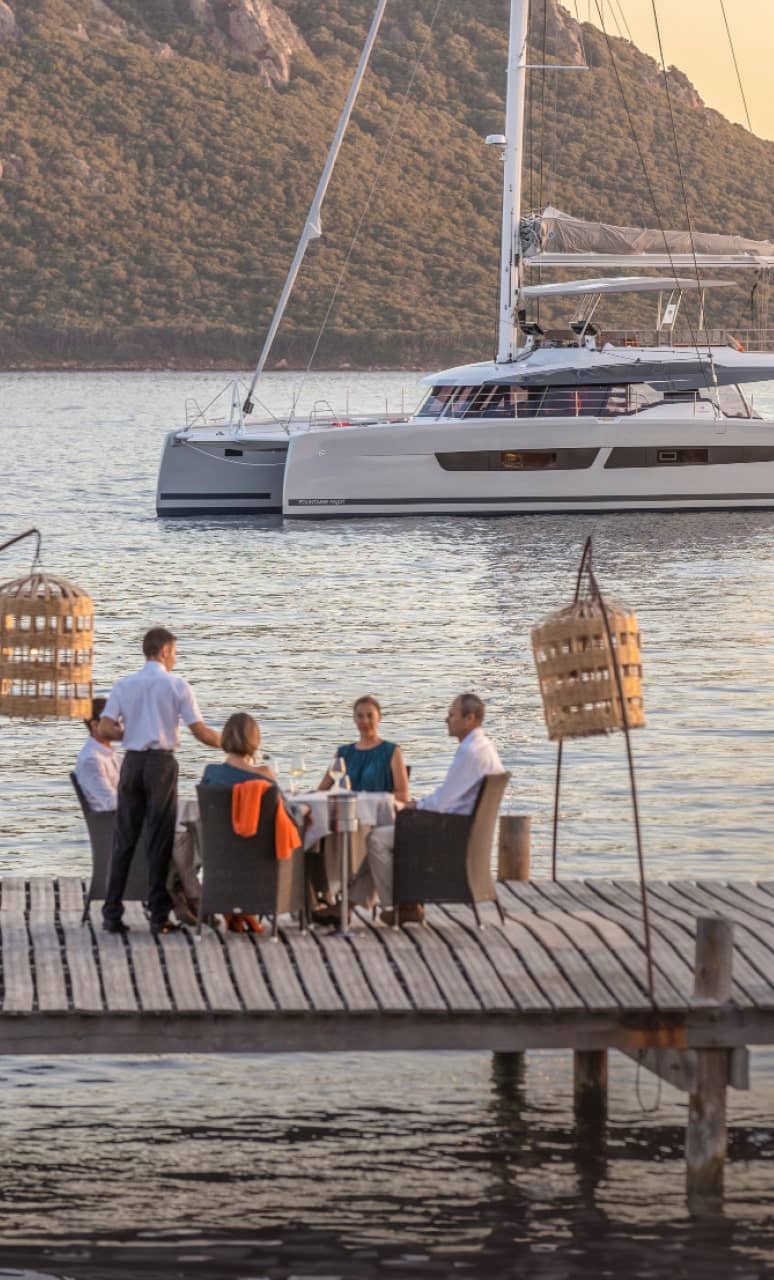
08 Mar 2024
Alégria 67 – The Flagship Catamaran Star at the International Multihull Show – La Grande-Motte
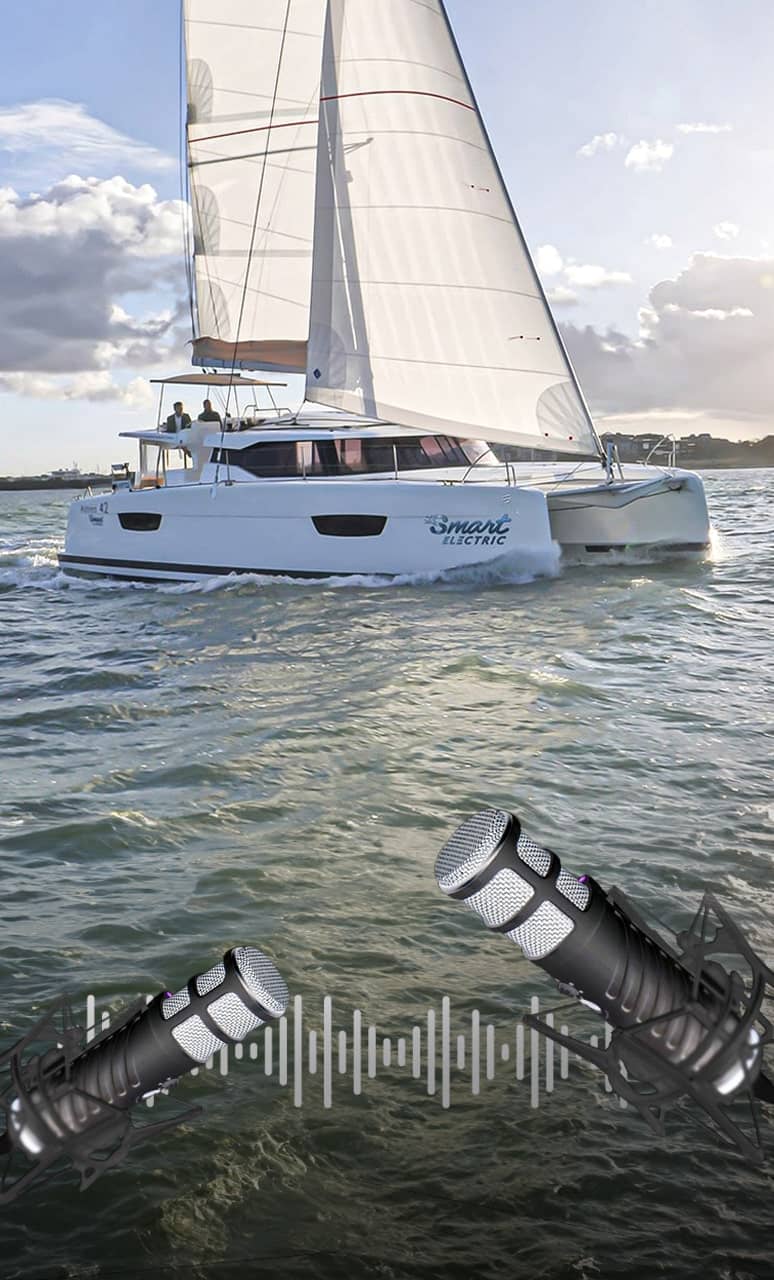
How does Smart Electric technology work? Answer on video…
Smart Electric: a complete overview of this technology, its origins, how it works and its everyday benefits… #Broadcast
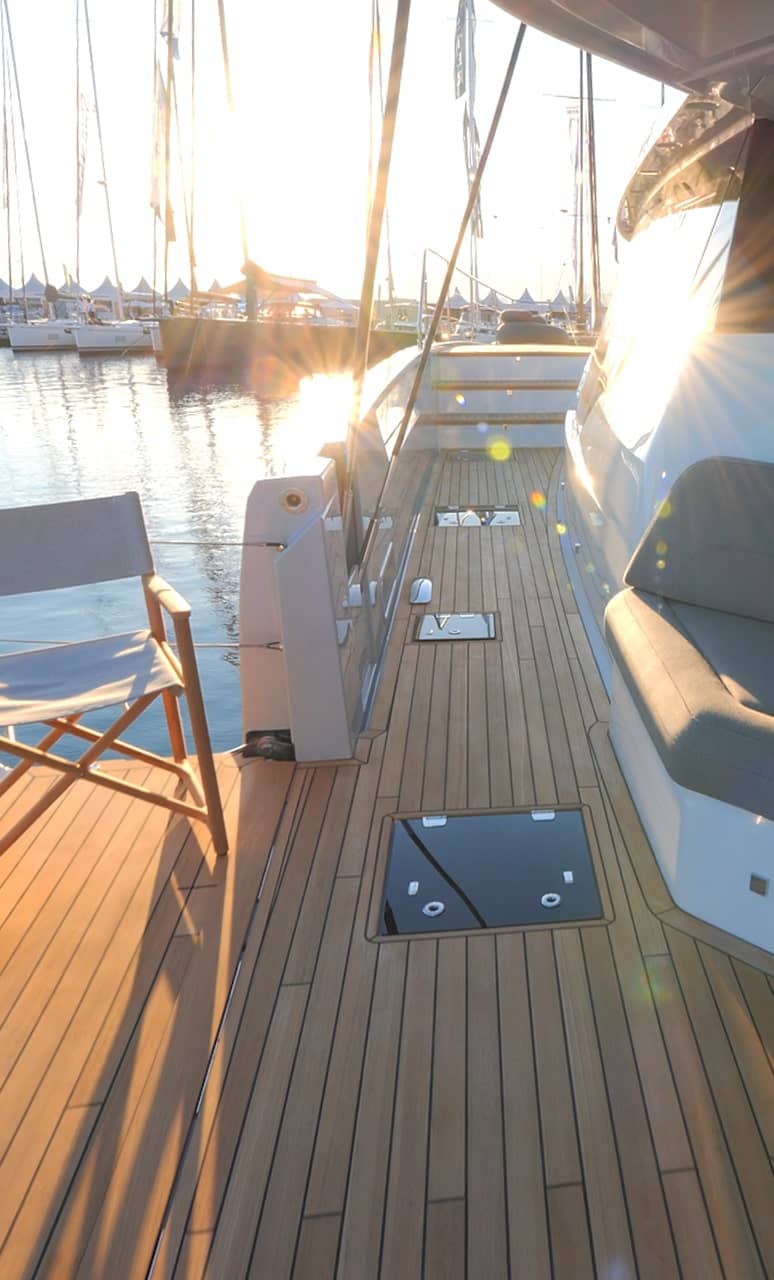
16 Feb 2024
The Thíra 80 nominated in the “Multiyacht” of the Year category by Multihulls World magazine
2022 owners’ rendez-vous | bound for Croatia
Highlights in photo and video, of these 4 days of cruising in catamaran.

08 Feb 2024
Discover the tanna 47 at the upcoming boat shows
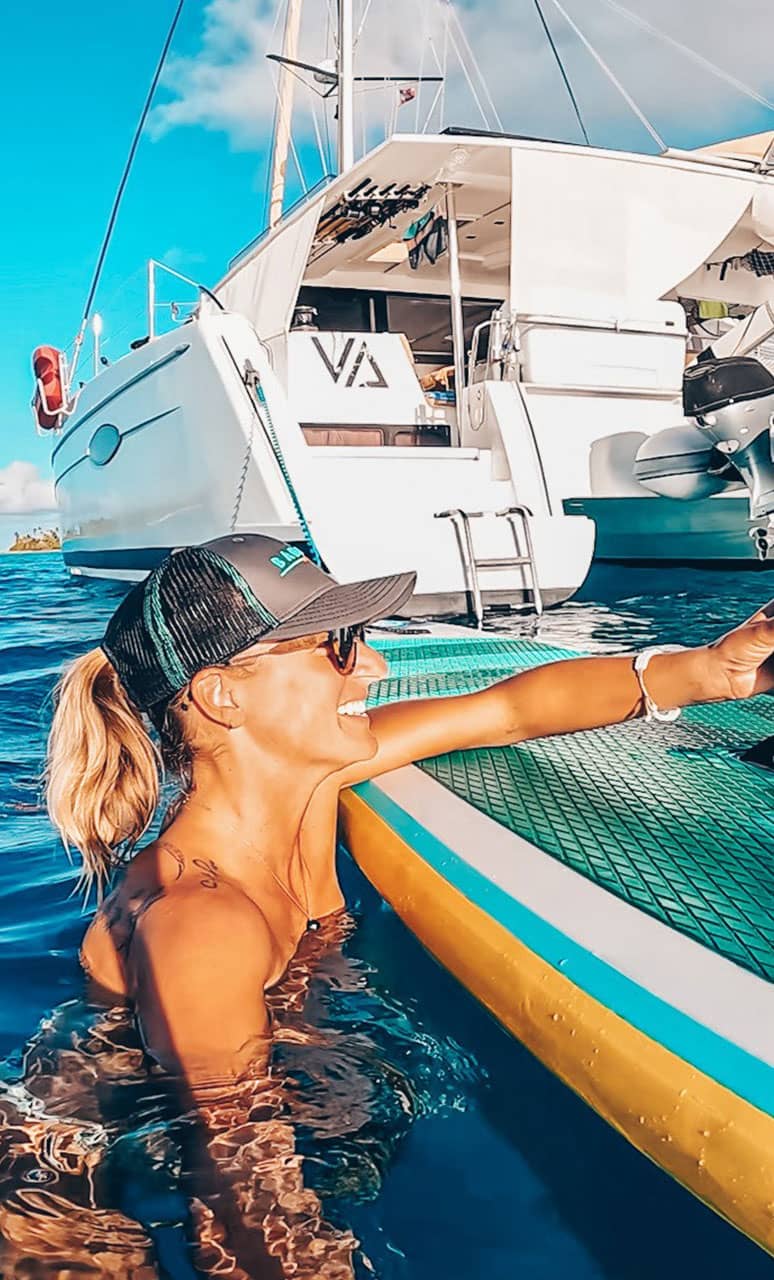
Photo challenge 2022
Discover the 5 sailing catamarans photo challenge 2022 prizes
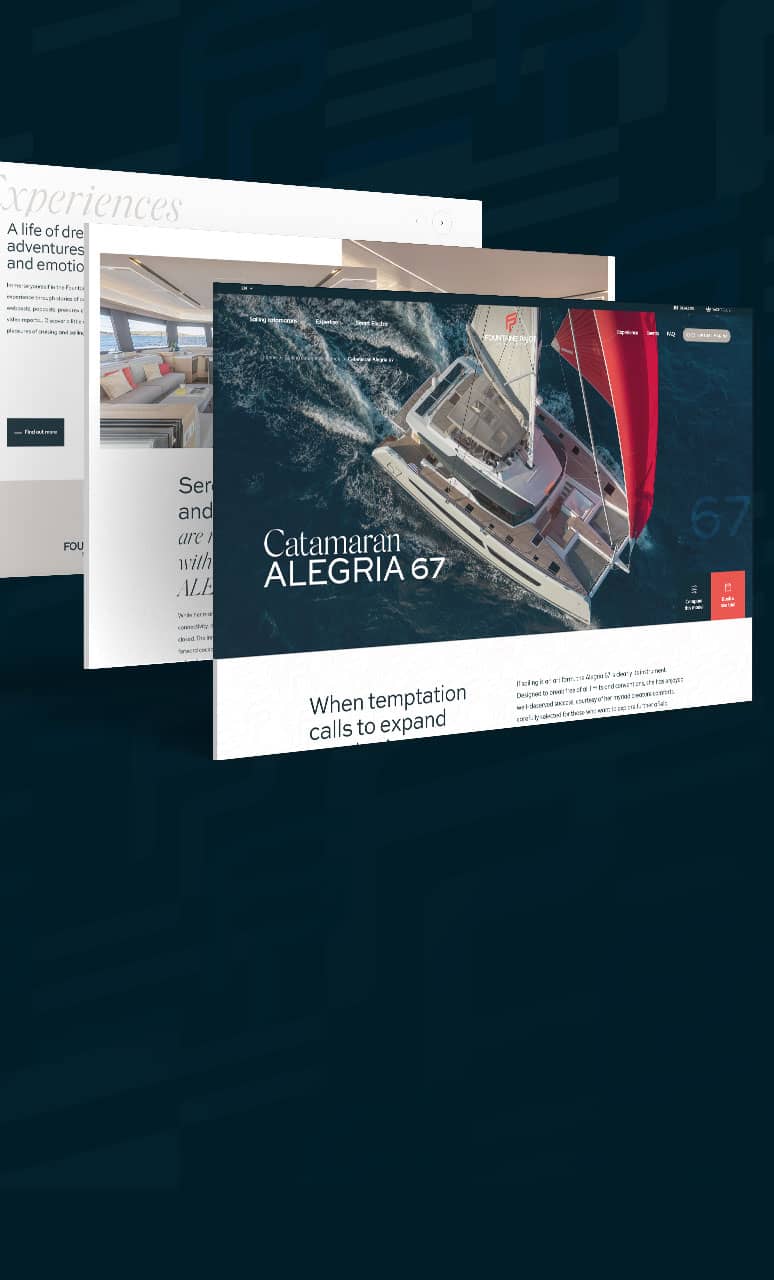
25 Jan 2024
A brand-new experience… Welcome to the new Fountaine Pajot sites!
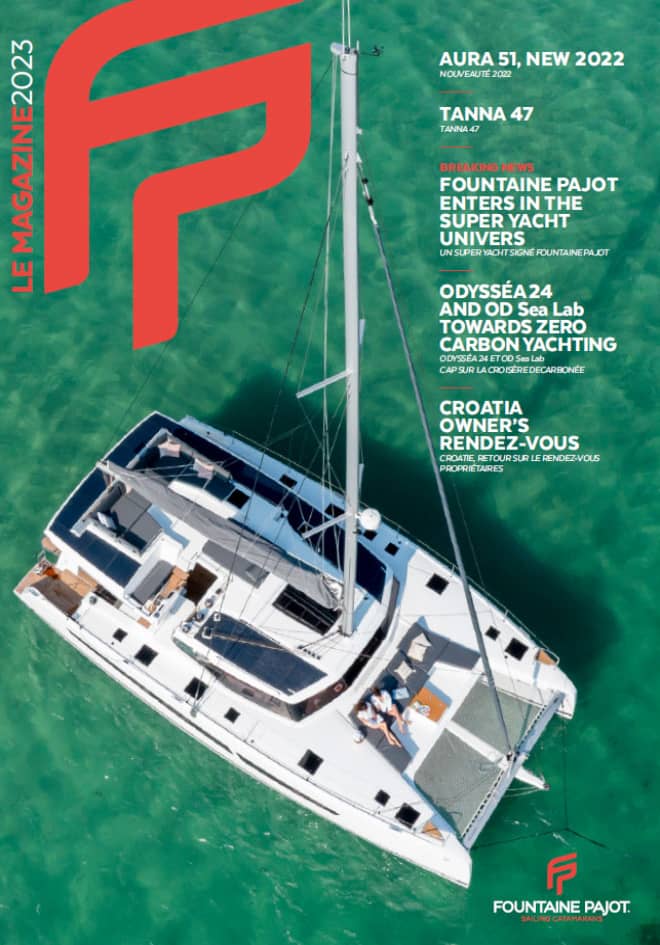
2023 magazine
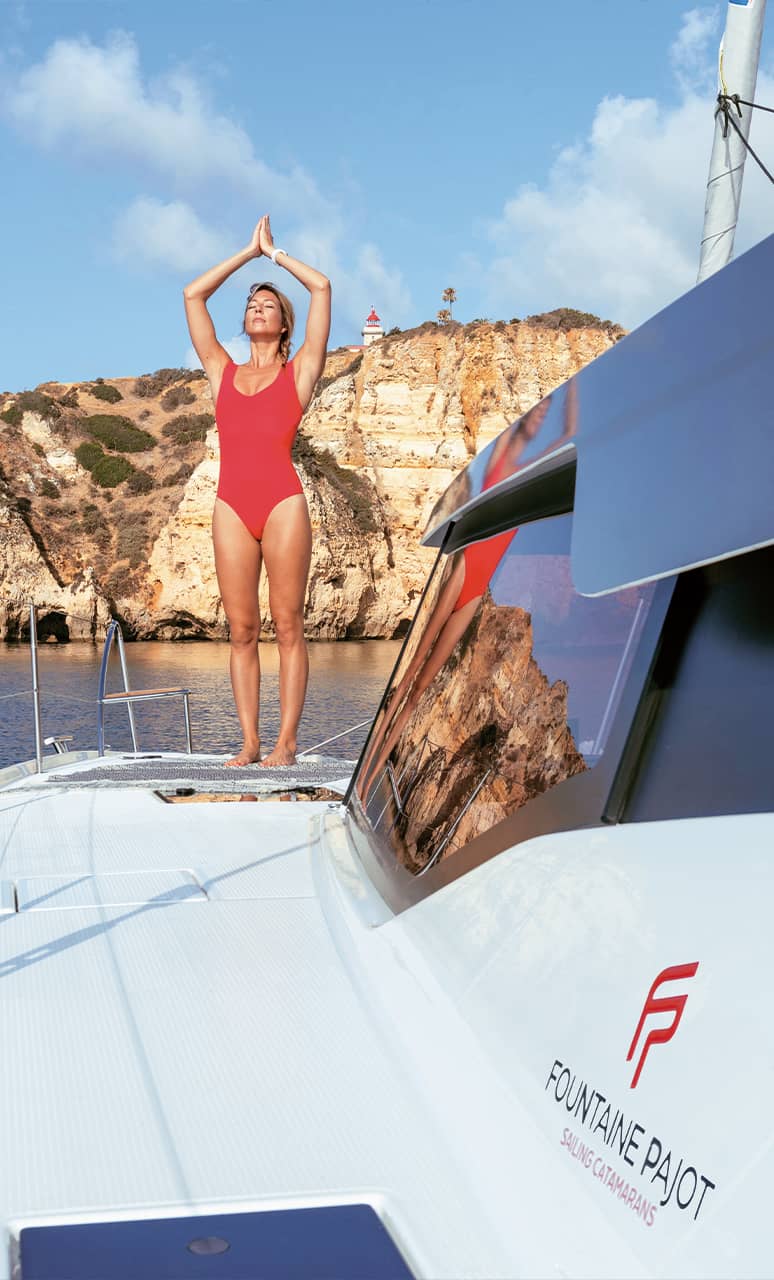
08 Jan 2024
Let’s set sail together on course for an exceptional year…
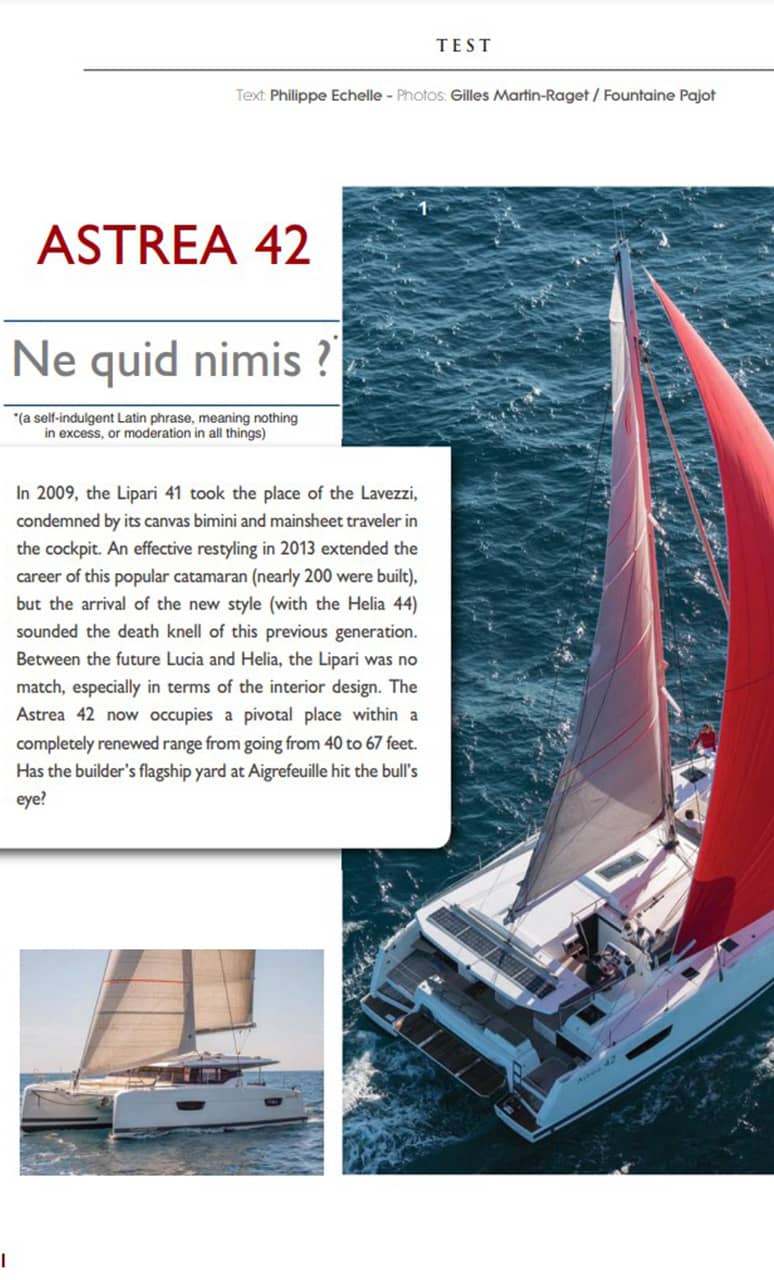
Multihulls World Magazine – Astréa 42

20 Dec 2023
Fountaine pajot wishes you all the best for the 2024
Ep.3 | Set a course for Martinique and Guadeloupe with a fun race

Ceylan and Alfie
Half a century of expertise and passion
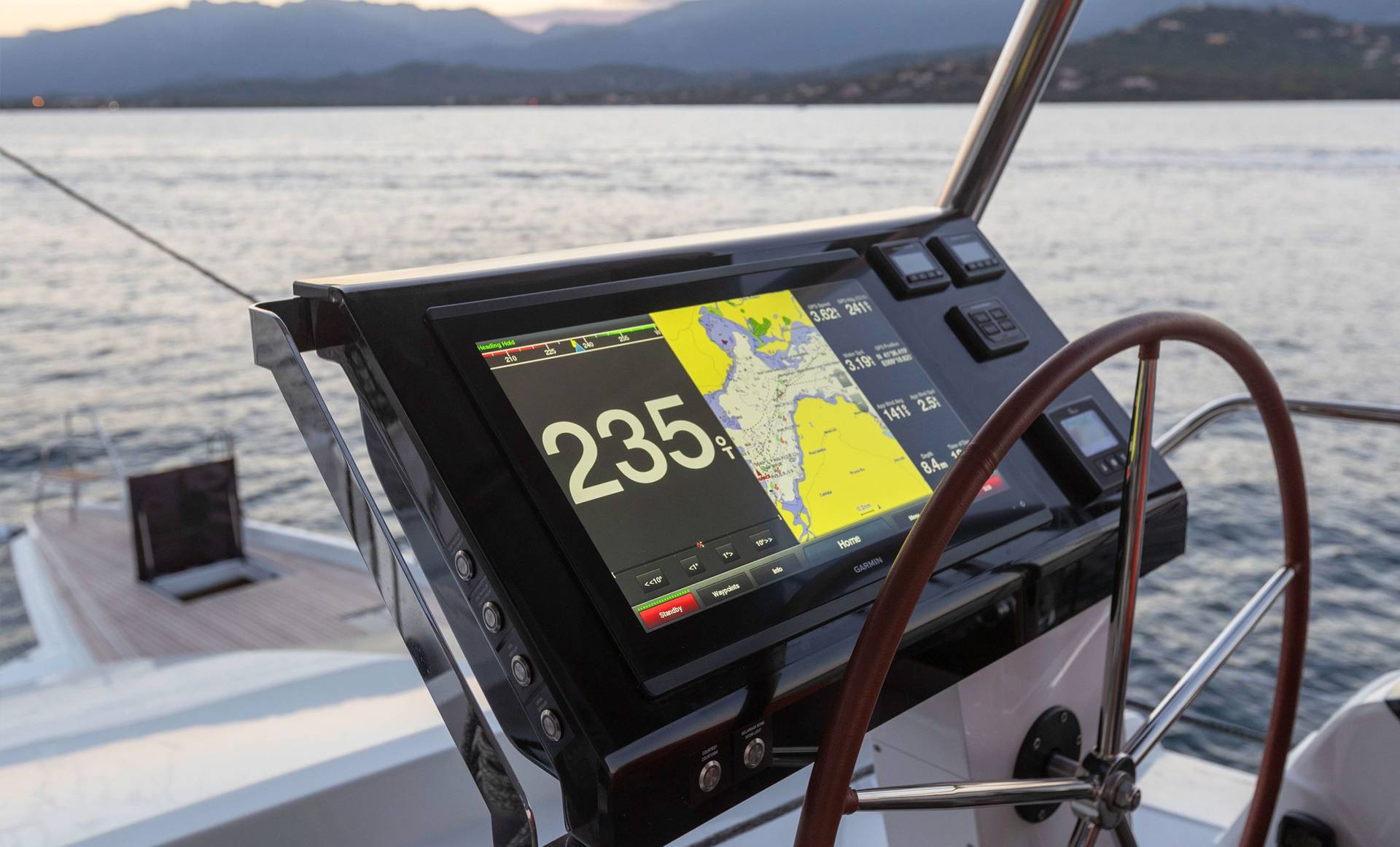
New-Zealand | Auckland Boat Show
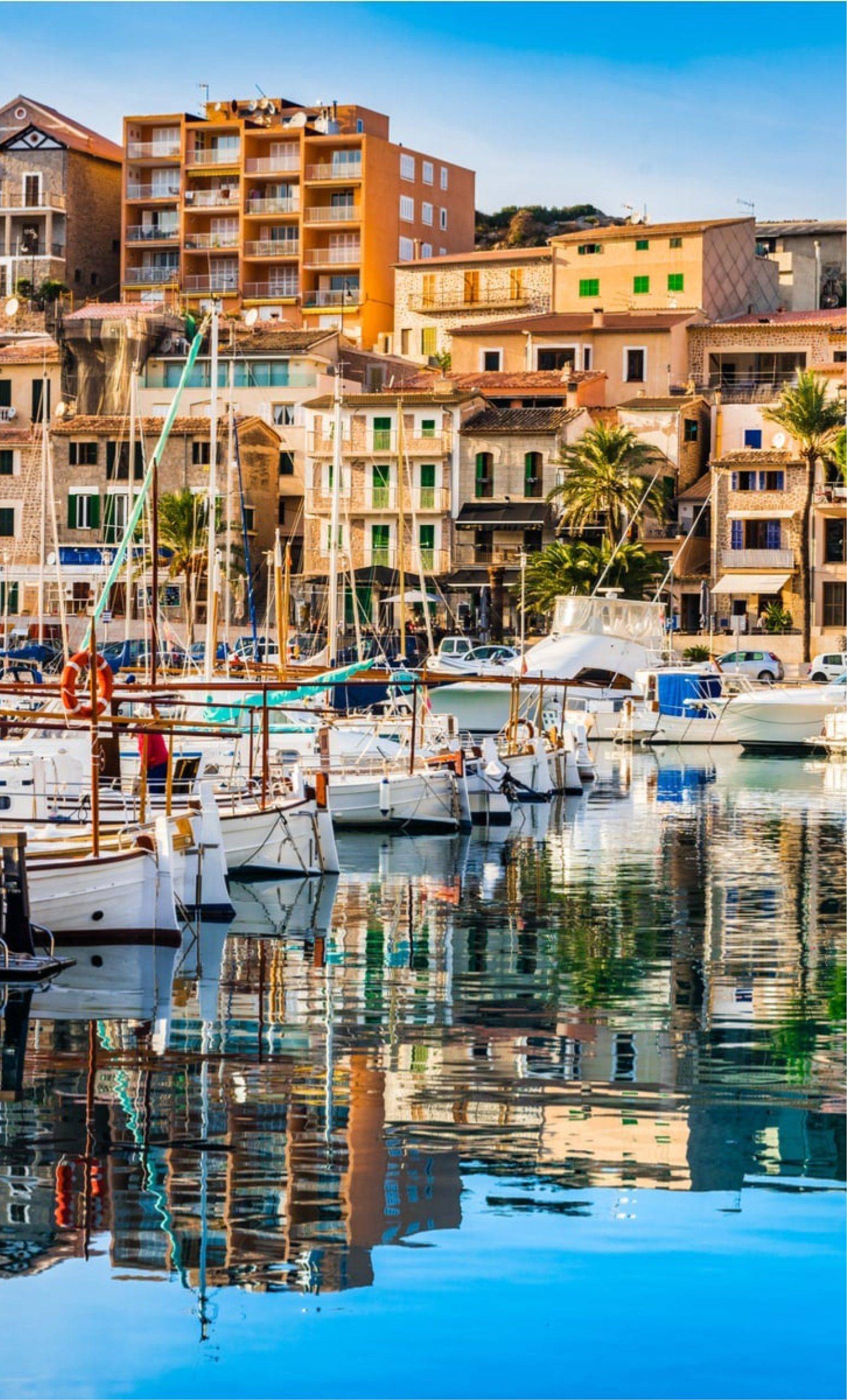
Open Days – Sea trials | Palma, Spain
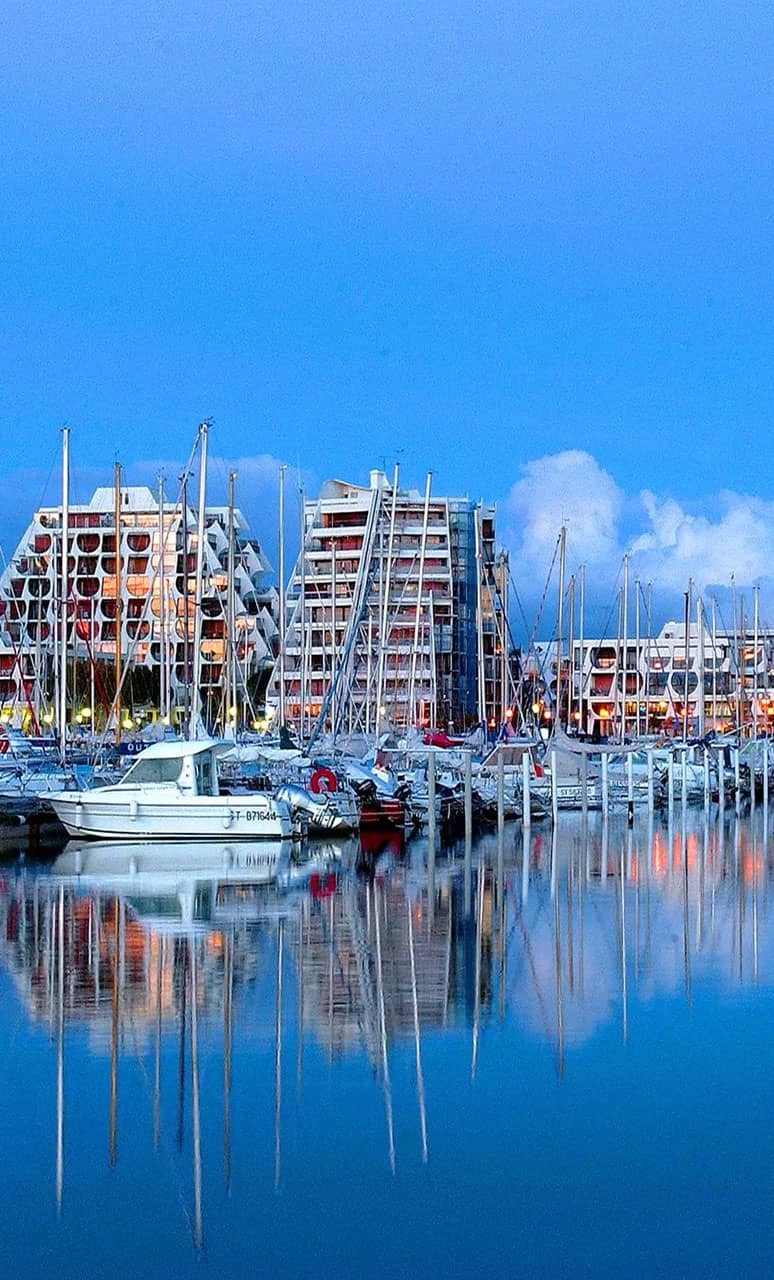
France | La Grande-Motte international multihull boat show
From 03 to 07 April 2024, Fountaine Pajot will be present at the 2024 La Grande Motte International Multihull Boat Show, which is held every year in the south of France.

Annapolis OPEN HOUSE – ACY, United-States
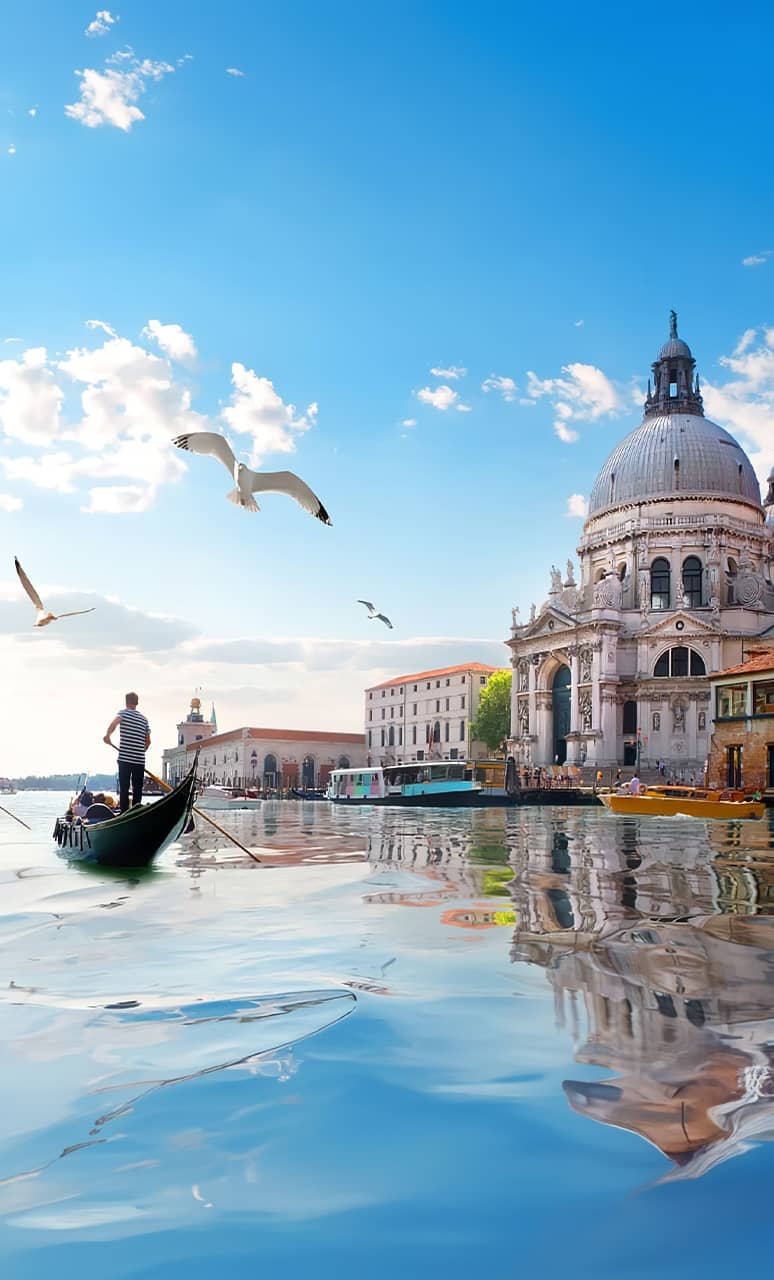
Open Days Tour – Italy
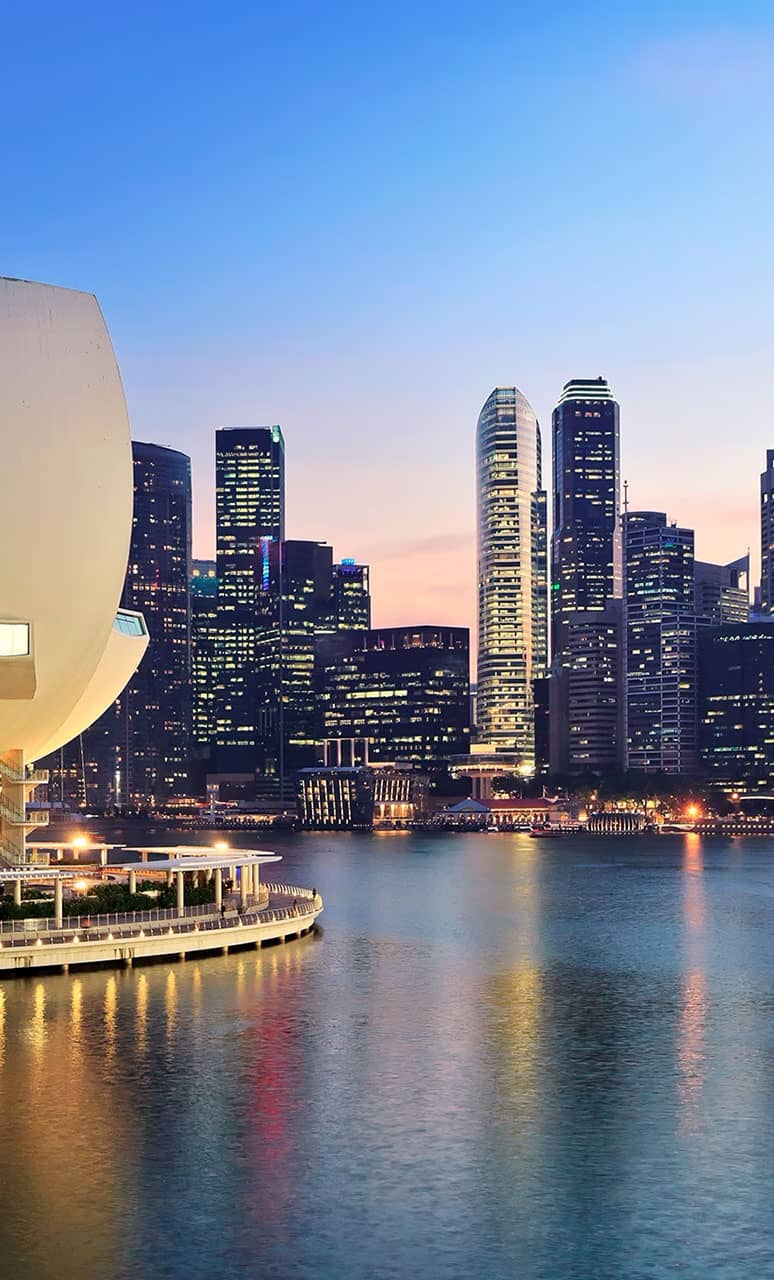
Singapore | Singapore yacht show 2024
Meet Fountaine Pajot at the Singapore Yacht Show 2024, afloat in the ONE°15 Marina Sentosa Cove, from April 22 to 24, 2024.
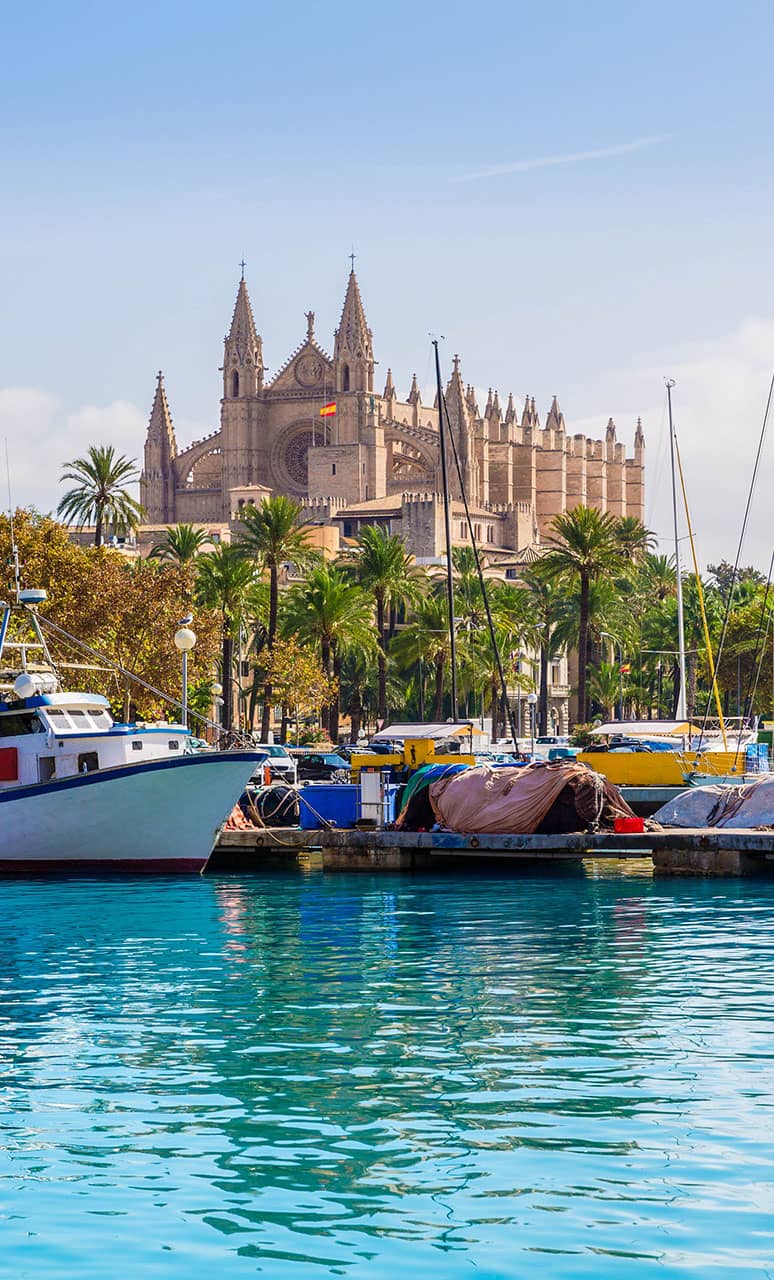
Spain | Palma international boat show
From April 25 to 28, 2024, join Fountaine Pajot at the Palma de Mallorca 2024 International Boat Show, to celebrate its 40th anniversary.
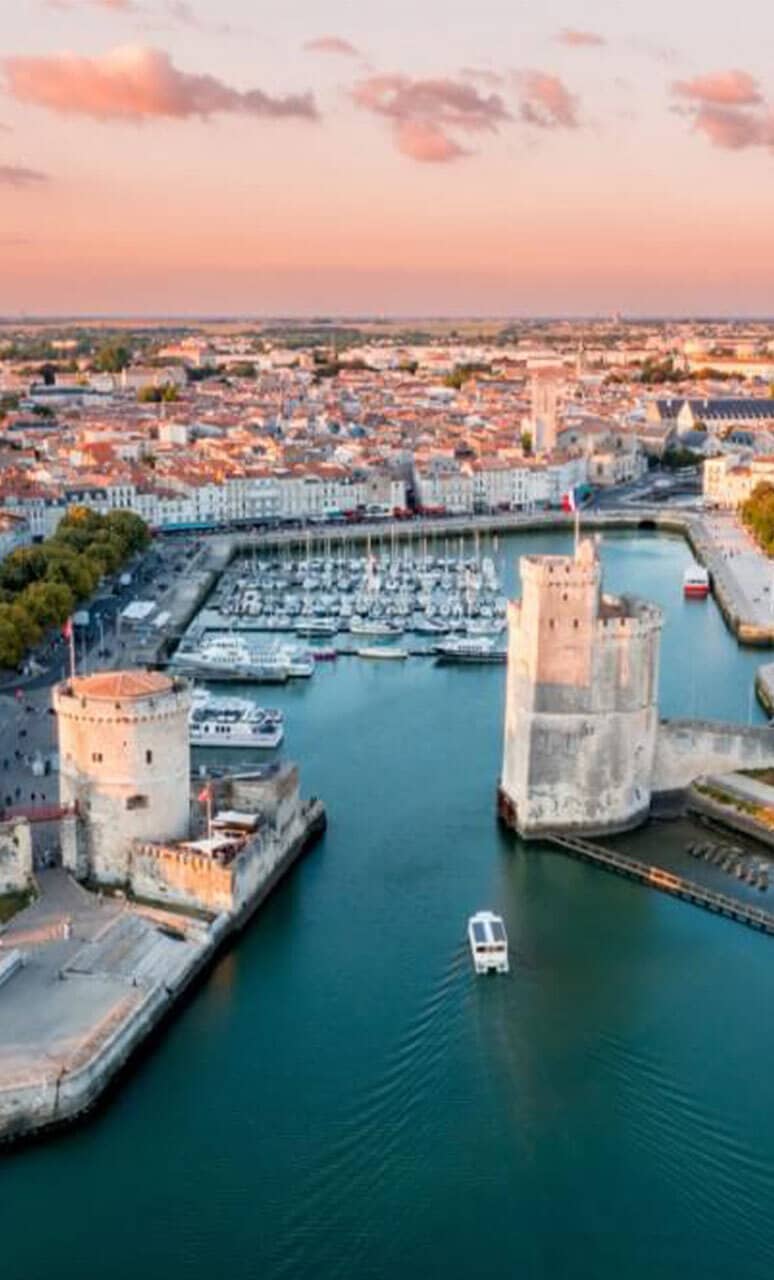
Open Days | La Rochelle, France
Fountaine Pajot Sailing Catamarans offers you private visits in La Rochelle, from June 27 to 29 , 2024. Come, visit and test a wide range of Fountaine Pajot luxury sailing catamarans
A global standard in the design and construction of sailing catamarans since 1976
Fountaine Pajot designs and builds catamarans from 40 to 80 feet that are distinguished by high-performance, remarkable comfort, innovation and a focus on the future of cruising…
Let’s find the right Sailing Catamaran for you.
Question 1 On 8
What is your sailing level?
Intermediate
Experienced
Question 2 On 8
What would be your navigation program?
Onshore cruising / Day boat
Vacation / Seasonal cruises
Offshore cruising / Grand cruises
I don’t know yet
Question 3 On 8
What would your boat be used for?
Private use
Question 4 On 8
With or without crew?
Without crew
2 or 3 crew
Question 5 On 8
How many cabins would you like?
Question 6 On 8
How many bathrooms would you like?
Question 7 On 8
What type of propulsion would you like?
Hybrid electric
Question 8 On 8
What budget would you like to allocate to this project?
< 500k approx
500k > 600k approx
700k > 800k approx
800k > 1M approx
1M > 2M approx
2M > 3M approx
3M > 4M approx
> 4M approx
Subscribe to the newsletter
Follow the adventures of Fountaine Pajot Owners, discover the latest news and upcoming events, and take part in the development of the Boat of tomorrow!
Hosting capacity
Motorisation
Technical information
User-friendly areas
Sunbathing Non
Kitchen Non
Sunbathing Oui
Discover the prices
Double rooms
Your contact details
One last step before reaching the next page & discovering the prices proposed & main options for this version! You'll then be able, to schedule a live chat with your local dealer to discuss all the options and configurations available for this model!
Your home port
Any questions?
No pack information currently available online for this Flagship model. We will get back to you directly. Thank you
Would you like to configure this model’s options or set up another model?
Make an appointment with your nearest dealer and choose the boat of your dreams.
- Go to content
- Go to footer

- Rental operators
- Service centers
- Pre-owned Lagoon catamarans
- The Lagoon Premium Program
- Finance your Lagoon
Club Lagoon
choose your language

Your dream destination
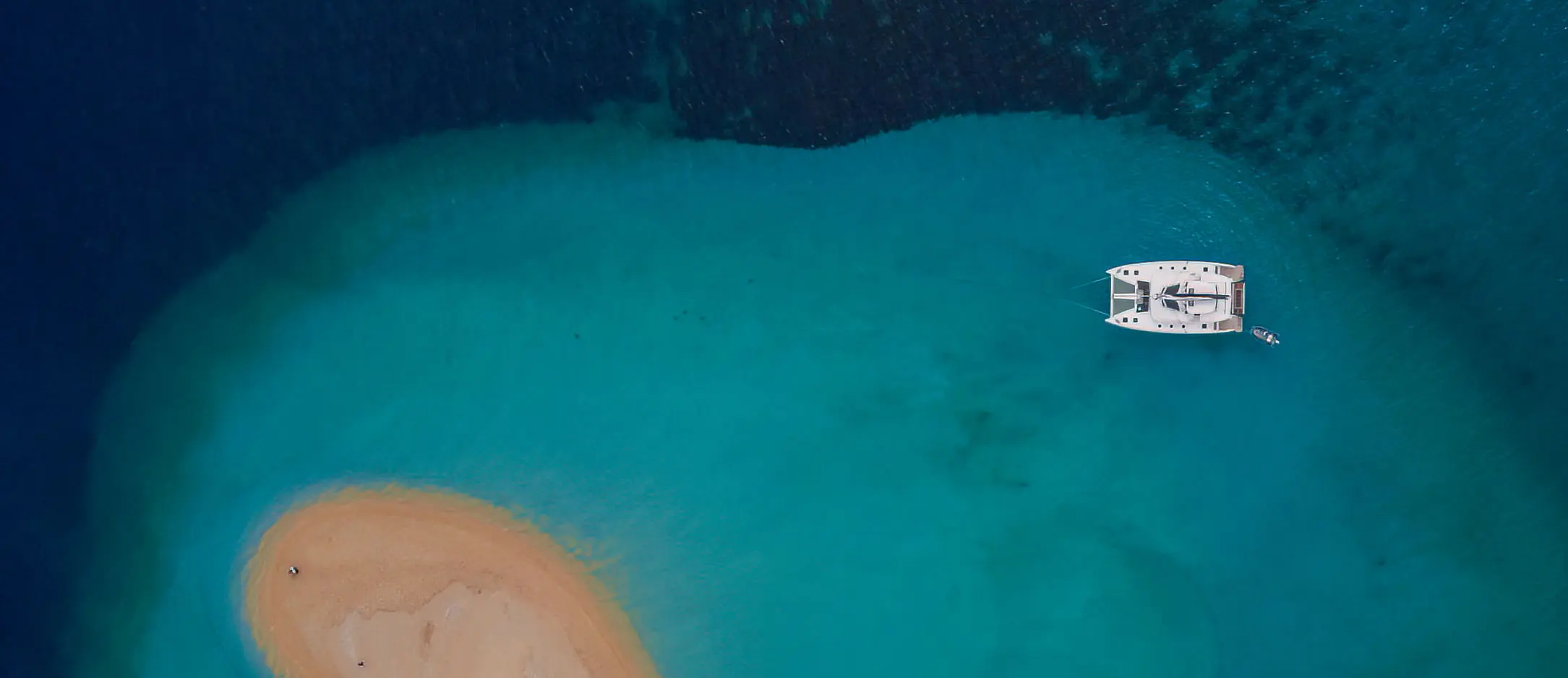
Lagoon celebrates its 40th anniversary with you!
In 2024, Lagoon wants to celebrate its 40th anniversary with you. Throughout the year, there are numerous events waiting to be discovered.
Catamarans to live your dreams
At Lagoon, we do everything we can to make your sailing to the ends of the earth as enjoyable as possible, but when it comes to choosing your model, it's up to you!

YOUR DREAM DESTINATION
At Lagoon, we infuse our love of the sea and our admiration for nature into the construction of our boats. For you, we always aim for excellence.
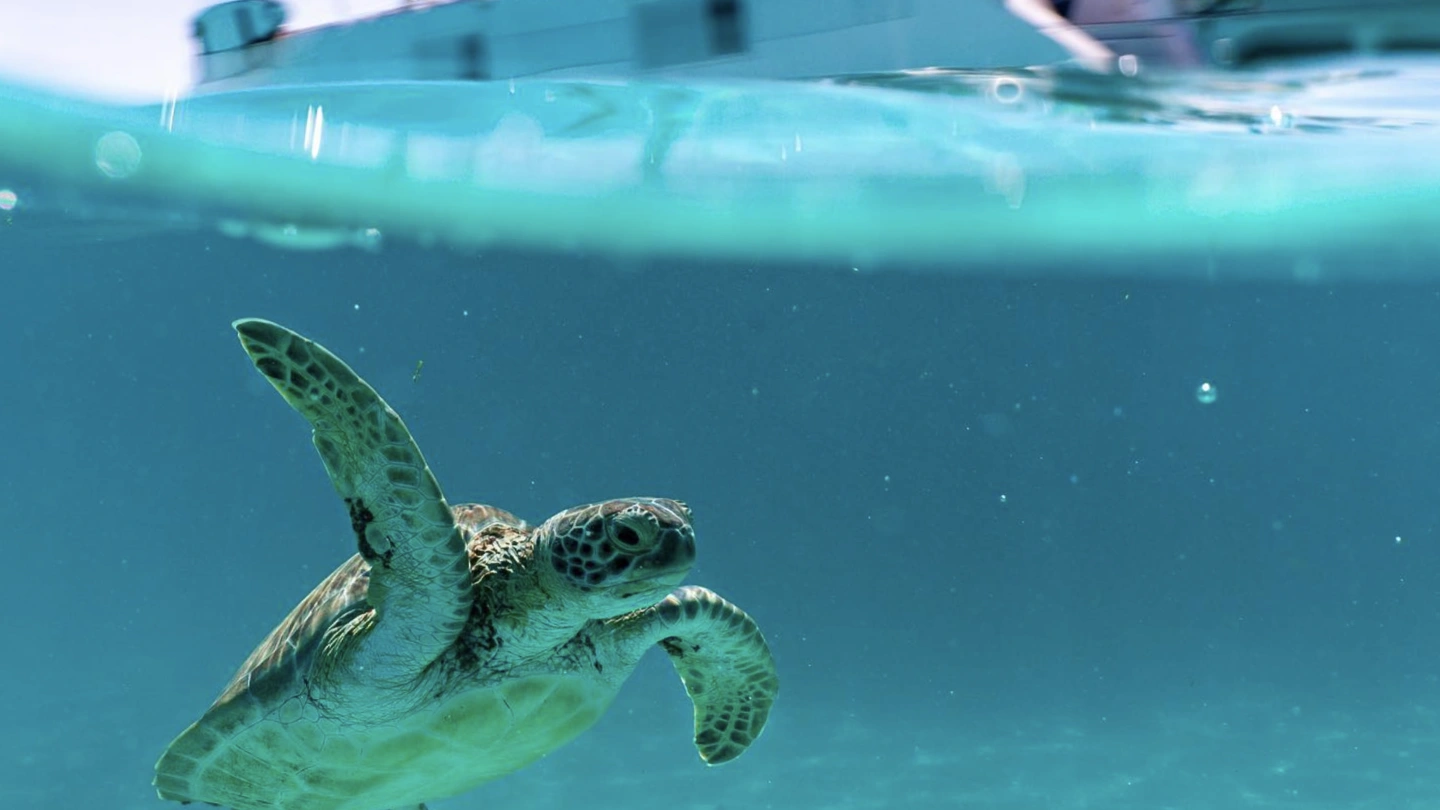
Lagoon's sustainable commitments
Lagoon's history is intimately linked to its marine environment and we are committed to preserving it every day. Over the last few years, we have taken a major step forward in terms of sustainability.

The Club Lagoon
Are you a Lagoon catamaran owner, or do you dream of becoming one? Our club is for you. By joining, you'll benefit from exclusive offers and privileged access to our partner marinas around the world.
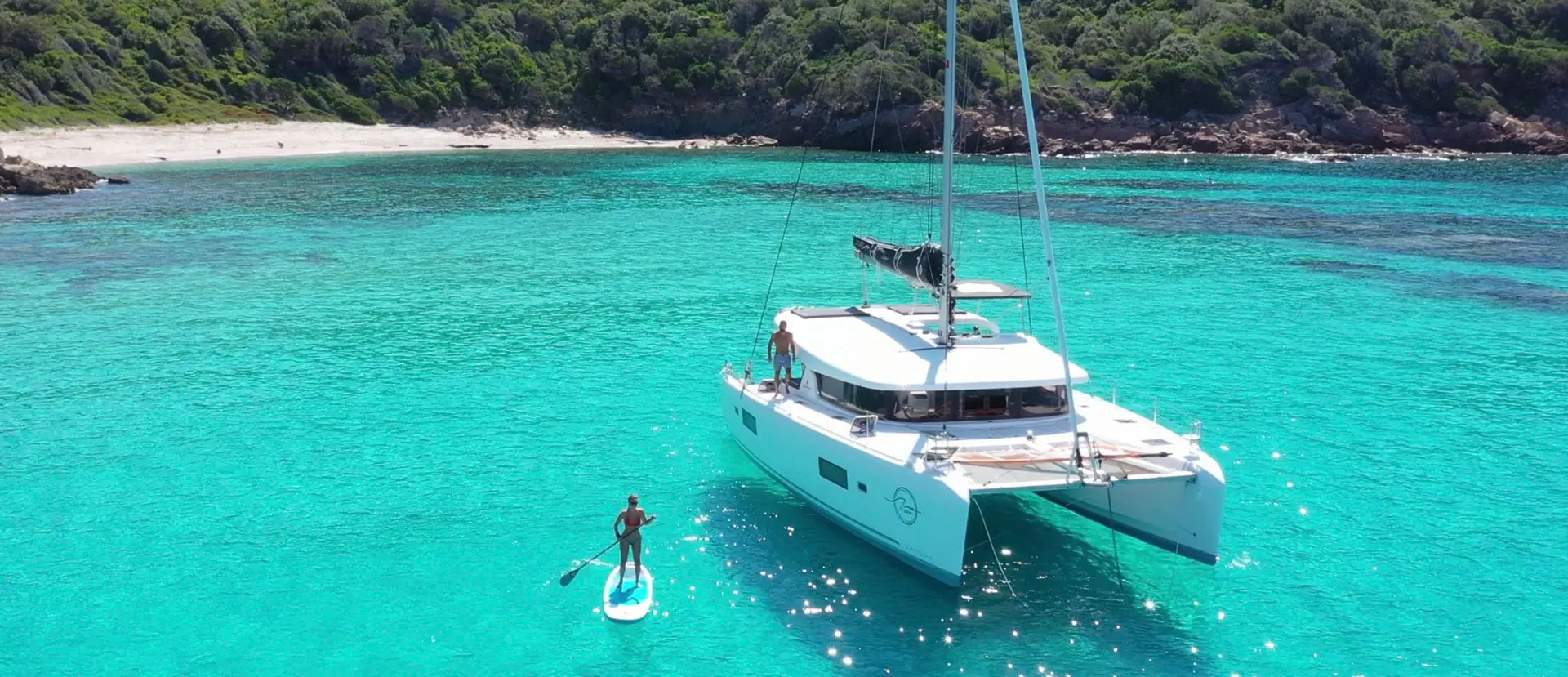
A unique catamaran design The world's best-selling model
Continue your navigation
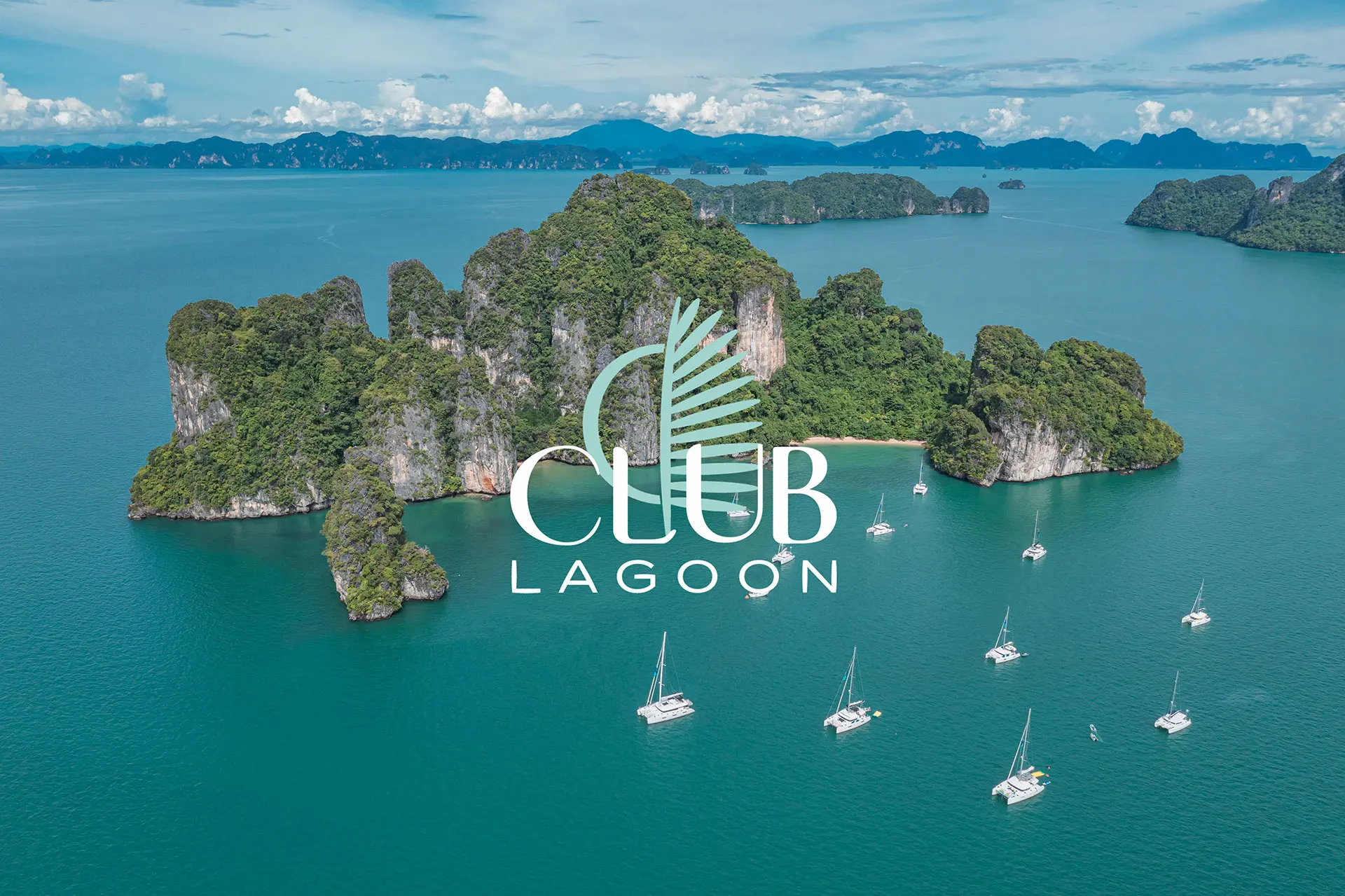
Our Partners
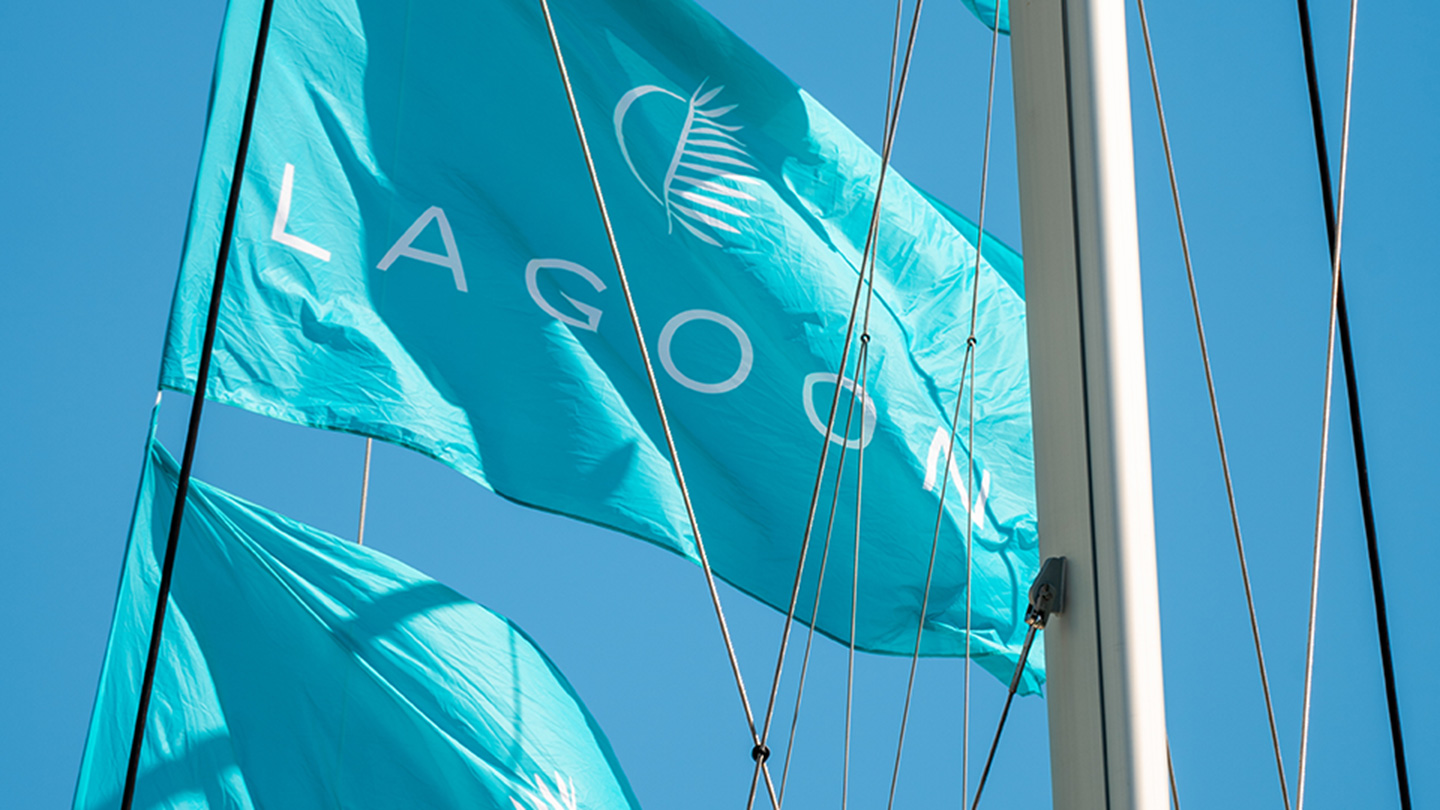
Owners' testimonials
Lange family and “spirit of ponta preta”.
There was a time when my whole being turned into a trance as soon as the leaves were moving in the trees, as I was thinking about the potential windsurf session that I was missing.
PRESS REVIEW
- Motorcycles
- Car of the Month
- Destinations
- Men’s Fashion
- Watch Collector
- Art & Collectibles
- Vacation Homes
- Celebrity Homes
- New Construction
- Home Design
- Electronics
- Fine Dining
- Baja Bay Club
- Costa Palmas
- Fairmont Doha
- Four Seasons Private Residences Dominican Republic at Tropicalia
- Reynolds Lake Oconee
- Scott Dunn Travel
- Wilson Audio
- 672 Wine Club
- Sports & Leisure
- Health & Wellness
- Best of the Best
- The Ultimate Gift Guide
- This New 131-Foot Aluminum Catamaran Concept Can Take on a Transoceanic Expedition
CMA's sturdy new multihull will be able to navigate choppy waters with ease.
Rachel cormack.
Digital Editor
Rachel Cormack's Most Recent Stories
Rossinavi just launched a custom, full-aluminum 164-foot superyacht.
- Meet Spear, an Epic 460-Foot Trimaran Concept That Looks Like It’s From the Year 3000
- Share This Article

Catamarans tend to be associated with casual coastal cruising rather than lengthy transoceanic expeditions, but Cristiano Mariani of CMA could help change that.
Related Stories
Architects and fashion designers are penning yachts, and it’s changing how they’re made.
- Airliners Are Trying Radical New Wing Designs to Improve Fuel-Efficiency
Taking a Bow: How Yacht Makers Are Rethinking the Rear End

The layout can be entirely customized by the owner, as can the decor and furnishings. The lower deck is currently configured with two guest staterooms, three crew cabins, and a VIP, while the main deck features another VIP, the owner’s suite, a spacious lounge, and a functional galley. Two additional crew cabins are located in the bow, while the upper deck sports a lounge, a pantry, the captain’s cabin, and the wheelhouse. The interior could be tweaked to include one epic family area or even three VIPs. Owners can also add a spa to the owner’s suite or the VIPs.
Outside, the cat offers over 3,000 square feet of deck space for alfresco dining, entertaining, and lounging. The partially sheltered sundeck is adorned with sunbeds and a bar, while the upper deck is home to an inviting Jacuzzi. Down below, the stern is equipped with fold-out platforms that can be lowered to connect guests with the ocean. The expandable area doubles as a waterside beach club and a mooring spot for runabouts or Jet Skis.
Mariani says he can further develop the project with an engineer and interior designer, meaning that the chosen shipyard should be able to easily execute the build. He just has to reel in an owner.
Rachel Cormack is a digital editor at Robb Report. She cut her teeth writing for HuffPost, Concrete Playground, and several other online publications in Australia, before moving to New York at the…
Read More On:
- Explorer Yachts
More Marine

This New 262-Foot Superyacht Lets You Mix and Match 3 Interior and Exterior Designs

Culinary Masters 2024
MAY 17 - 19 Join us for extraordinary meals from the nation’s brightest culinary minds.
Give the Gift of Luxury
Latest Galleries in Marine

8 Fascinating Facts About ‘Nero,’ a 295-Foot Superyacht Inspired by a 1930s Classic

Palm Beach Vitruvius in Photos
More from our brands, matchless london’s michele malenotti dead, padres remember peter seidler as world series quest continues, nbc news keeps chasing conservatives with controversial talent moves, joan jonas, a performance art pioneer, gets the super-size moma retrospective she deserves, the best yoga blocks to support any practice, according to instructors.

IMAGES
VIDEO
COMMENTS
A catamaran is a twin-hull boat with two equally-sized hulls placed side by side. They're powered by engines, sails, or both—and they're known for efficiency and speed. Catamarans are the most common kind of multihull boat. In this article, we'll go over the characteristics of catamarans and how to differentiate them from other types of ...
catamaran, twin-hulled sailing and powered boat developed for sport and recreation in the second half of the 20th century. Its design is based on a raft of two logs bridged by planks that had earlier been used by peoples in the Indonesian archipelago and throughout Polynesia and Micronesia. Early catamarans were up to 21.3 metres (70 feet) long, originally paddled by many men, and used for ...
A catamaran ( / ˌkætəməˈræn /) (informally, a "cat") is a watercraft with two parallel hulls of equal size. The distance between a catamaran's hulls imparts resistance to rolling and overturning. Catamarans typically have less hull volume, smaller displacement, and shallower draft (draught) than monohulls of comparable length.
A catamaran is a design for a boat that utilizes two hulls. Due to the flat, platform-like-potential for the deck of the boat, the catamaran is often purposed with transporting materials, vehicles, and people. For instance, catamarans are quite often used as ferries.
A catamaran offers flat, even decks, wide, safe passages, and no climbing when having to move from bow to stern. Tips for Sailing a Catamaran. With its large area exposed to wind and its low draft, a sailing catamaran can drift off easily so anchoring should be performed as swiftly as possible, especially if the wind blows from the side.
Activities: Overnight Cruising, Racing, Fishing, Day Sailing, Liveaboards. Length Range: 25 - 160 ft. Average price: $607,000. 2-12 cabins. Whether you're shopping for a new fishing boat, a sailing cruiser, or anything in-between, you'll come across catamarans.
Understanding the Basics of a Catamaran. Understanding the basics of a catamaran is essential for safe and enjoyable sailing. A catamaran is a boat with two parallel hulls connected by a deck. It has advantages over monohull boats. Catamarans are stable due to their wide beam, reducing the risk of capsizing.They can access shallow waters because of their shallow drafts.
Understanding a Catamaran: A catamaran is a multi-hulled water vessel with two parallel hulls and sails. Small catamarans, also known as beach catamarans, are the focus of this guide. Essential Parts of a Catamaran: The essential parts of a catamaran include the hull, tiller, rudder, keel, mast, mainsail, foresail, and boom. Each part plays a crucial role in the catamaran's operation.
Understanding the Basics of a Catamaran. A catamaran is a boat with two parallel hulls connected by a bridge. Understanding the basics of a catamaran is important to fully enjoy the unique sailing experience it offers. These hulls provide stability and reduce drag, enabling higher speeds. Catamarans are used for sailing, cruising, and racing.. The design allows for a spacious interior layout ...
This makes docking your catamaran a breeze compared to single-hulled sailboats. Travelling on the sails. Sailing varies mainly in what courses you can sail and how strong the winds are. Most charter catamarans perform best on courses at 50 to 60 degrees to the wind. This is a greater angle compared to sailboats.
Fountaine Pajot, one of the foremost builders of sailing catamarans, unveiled their biggest "Super Catamaran" ever: the Thira 80. The release comes on the tail of an ever-increasing trend in the catamaran market—the bigger-the- better era. With Sunreef, Lagoon, and Gunboat all making boats in the 70 to 80-foot range, these companies ...
Backing into a slip is easier on a catamaran than a monohull. To back into a slip (which will make it more convenient for crew to step on and off) pull up until perpendicular with the slip, pivot the boat with the engines and then use both in reverse, adjusting as you back up if there is a beam wind.
Hulls are what sets this boat apart from the rest. The catamaran has two hulls, while the monohull, as the name suggests, has only one hull. Most of the advantages of this boat are hinged on these two hulls. The bridge deck connects the two catamaran hulls. On top of the catamaran hulls and the bridge deck is the deck.
Let us introduce you to five power catamarans and five sail multihulls, and then let us get you on the water with one! Here are the ten best catamarans for 2023: World Cat 260 CCX. Four Winns TH36. Leopard 40 PC. Aquila 42 PC. HammerCat 45. Fountaine Pajot Tanna 47. Bali 4.4.
A catamaran is a type of boat that features a dual hull design. Unlike traditional boats that have a single hull, a catamaran consists of two parallel hulls that are connected by a deck or platform. This unique design offers several advantages over monohull boats, including increased stability, speed, and spaciousness.
Available from 20 to 48 feet, catamarans typically offer a large fishing platform with generous storage and fishing amenities. They are available in a wide variety of deck layouts, including center-consoles, dual-consoles, and even pilothouse and express variants. Cats offer abundant deck space. Courtesy Invincible.
Types Of Catamarans. Catamarans come in a variety of shapes and sizes, from luxurious yachts to fast-moving racing boats. They offer a unique sailing experience, with their twin hulls providing stability and comfort while still able to reach high speeds. Catamarans can be powered by engines or sail, enabling them to move swiftly through the water.
10 Catamaran Sailing Tips. Here are some tips on how to sail your catamaran: 1. Always keep the boat sailing downwind. Sailing downwind prevents pounding and slapping sounds that slow down the boat. When the low bridge deck slaps on the undercarriage of the boat, it causes annoying sounds. Making sure that you are sailing downwind as much as ...
Fountaine Pajot Sailing Catamarans offers you private visits in La Rochelle, from June 27 to 29 , 2024. Come, visit and test a wide range of Fountaine Pajot luxury sailing catamarans. Discover the event. 4,000.
The world leader with over 7,000 catamarans built since 1984. Discover our innovative, eco-friendly sailing and power catamarans! Go to menu; Go to content; Dealers Go to footer; EN Catamarans Dream stories Discover Lagoon; Lagoon 40 years; Events Contact ...
What Catamaran model is the best? Some of the best-known Catamaran models currently listed include: Diamond Yachts P55 Power Catamaran, 24, 38, Axcell 650 and Bamba 50. Specialized yacht brokers, dealers, and brokerages on YachtWorld have a diverse selection of Catamaran models for sale, with listings spanning from 1987 year models to 2025.
Built by a wide variety of yacht makers, there are currently 1,818 catamaran yachts for sale on YachtWorld, with 476 new vessels for sale, and 1,342 used and custom yachts listed. These vessels are all listed by professional yacht brokerages and new boat dealers, mainly in the following countries: United States, France, Italy, Greece and Spain.
In the few years since the Bali brand appeared as an offshoot of the Catana line of catamarans, it has grown rapidly. The original models are popular bareboat charter vessels in the Caribbean and the Mediterranean, and the new Bali 5.4, the largest of the line, moves the company into the crewed-charter business as well.
The Italian designer, who has previously worked with shipyards such as CRN, ISA Yachts, and Wally, just unveiled a new multihull concept with "the characteristics of an explorer yacht ...